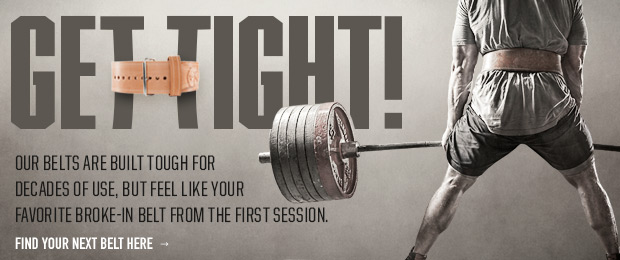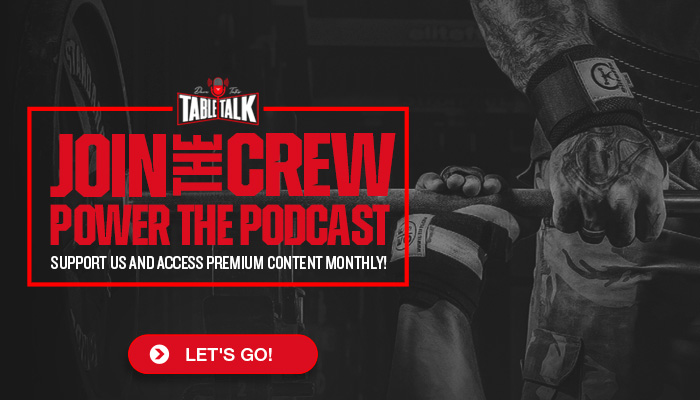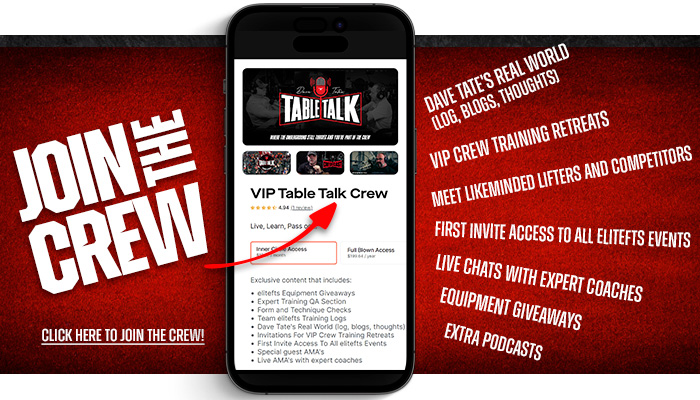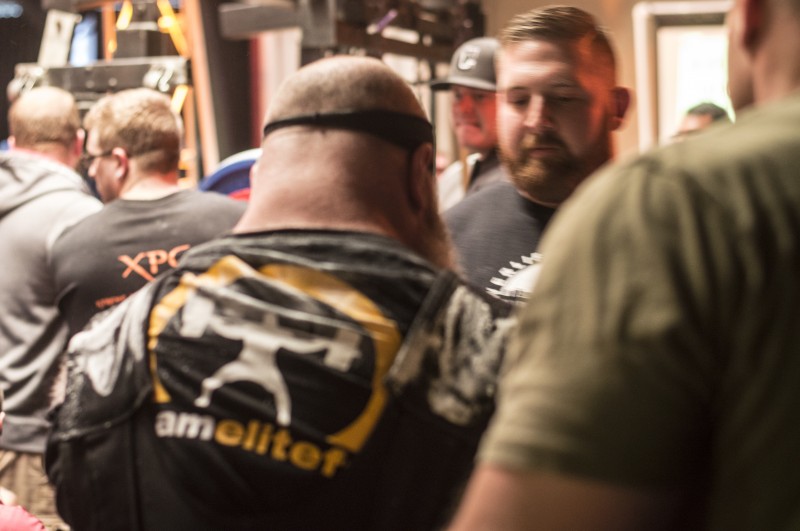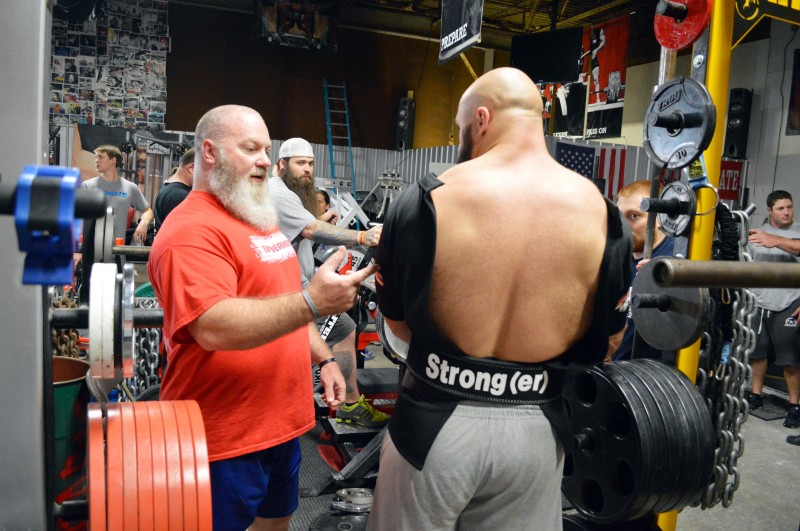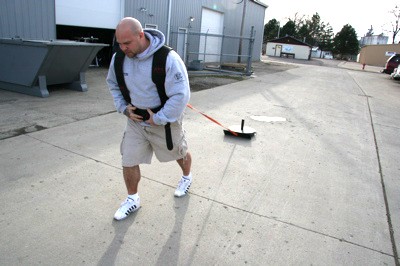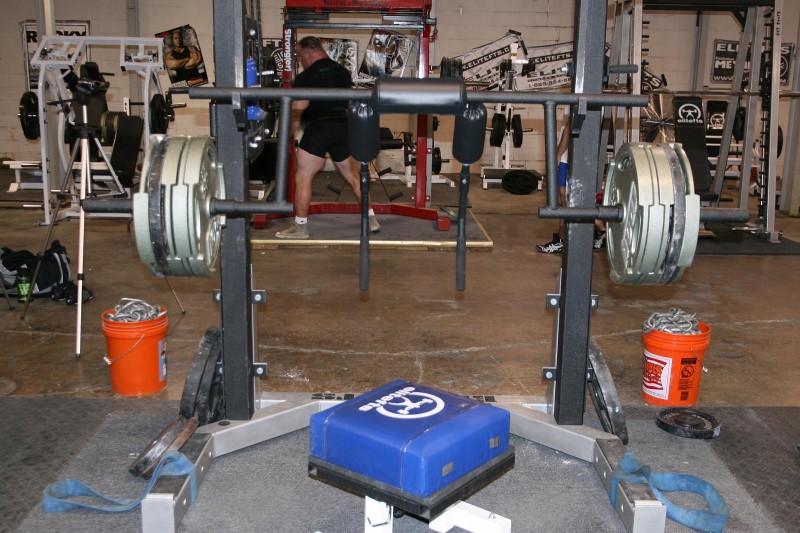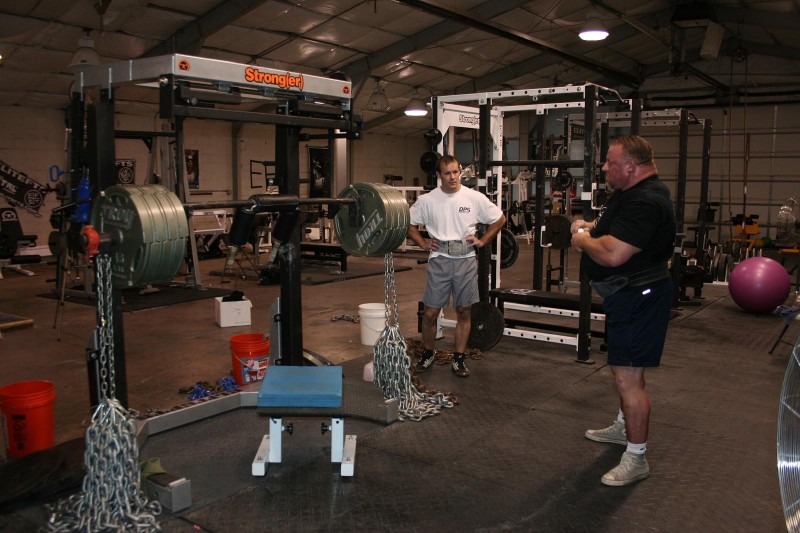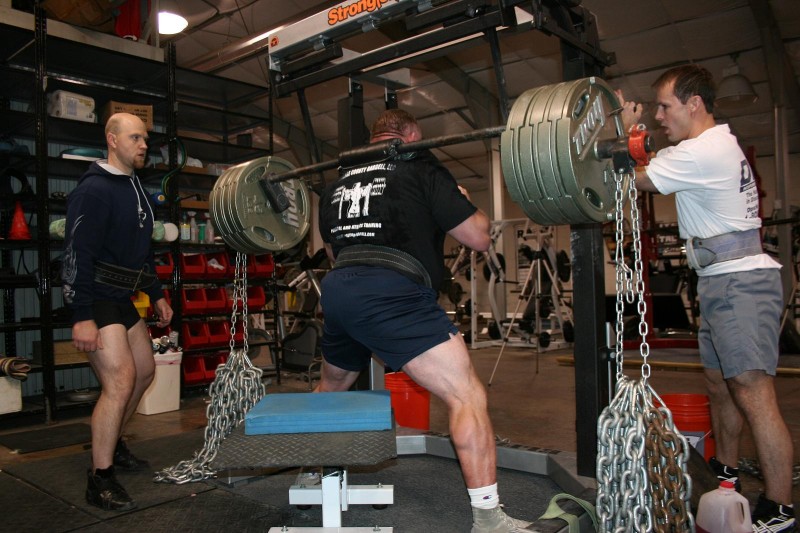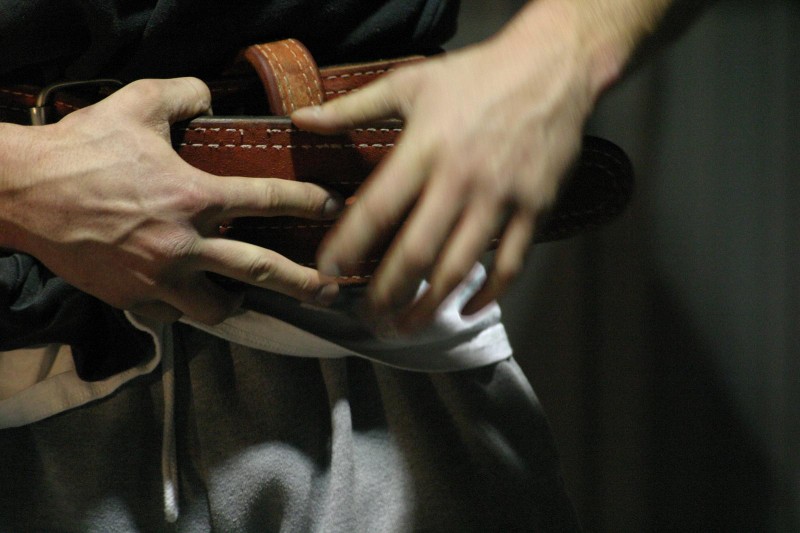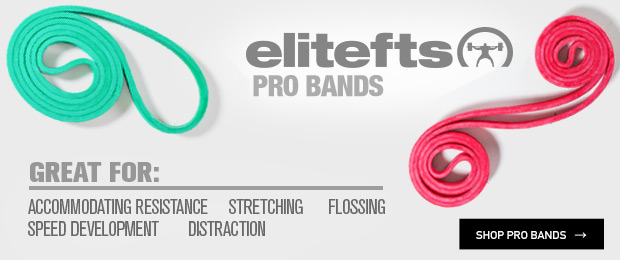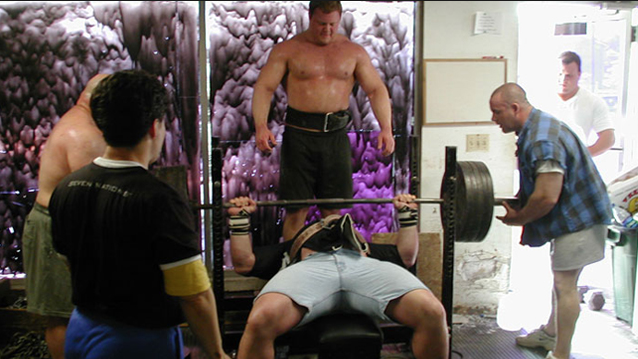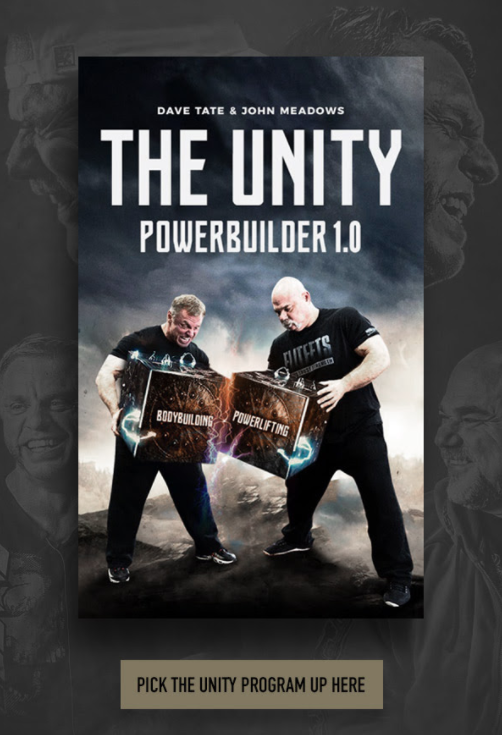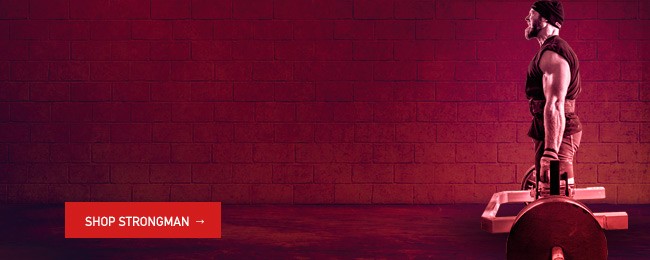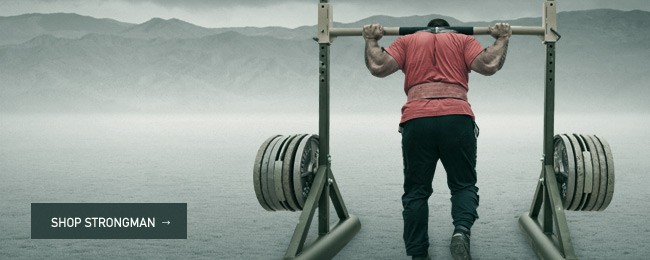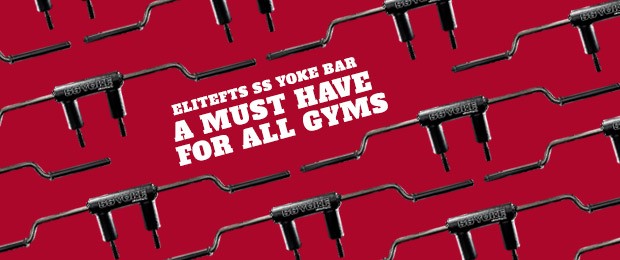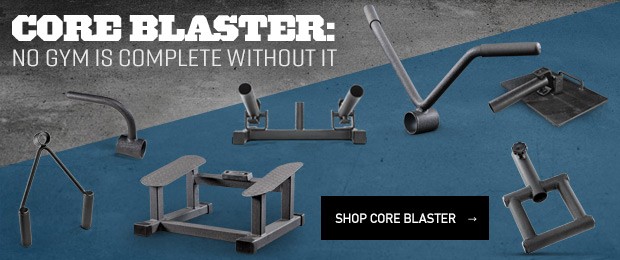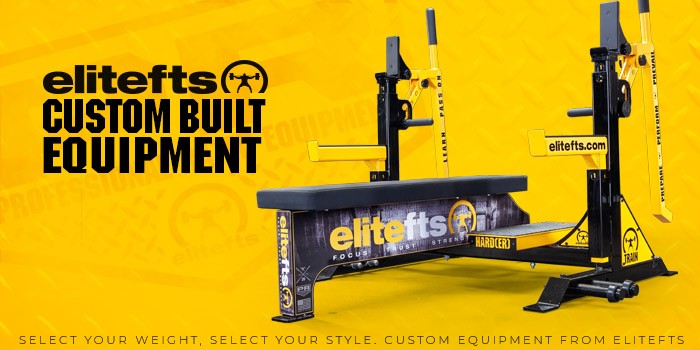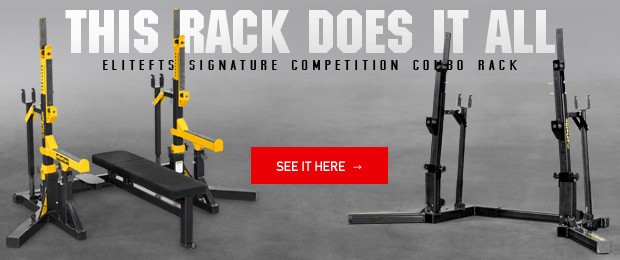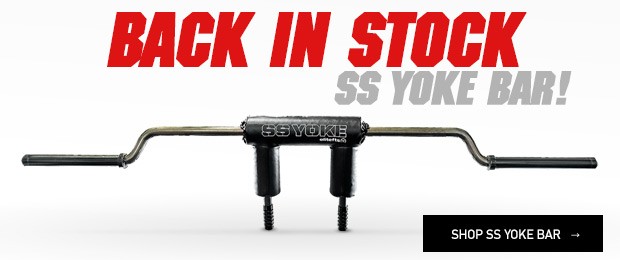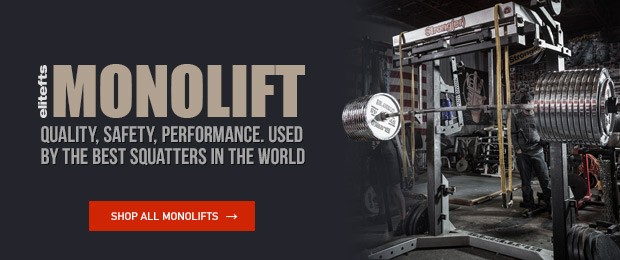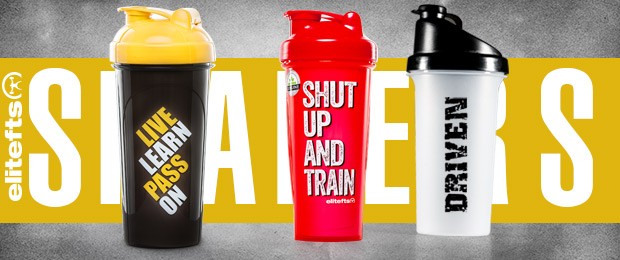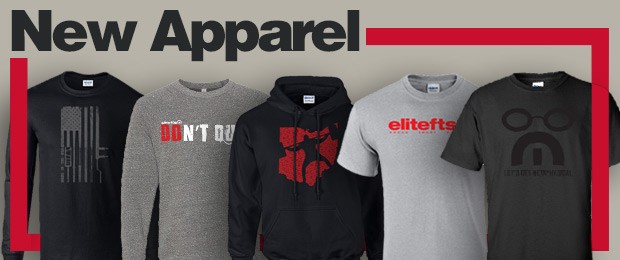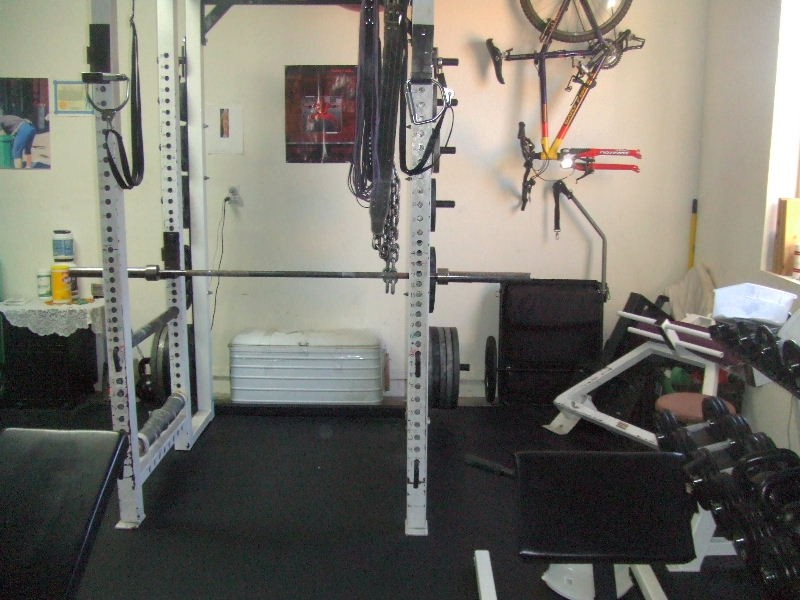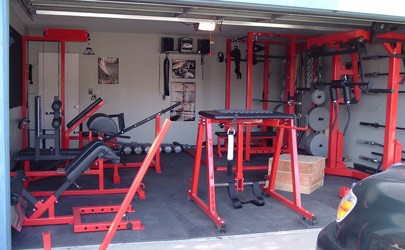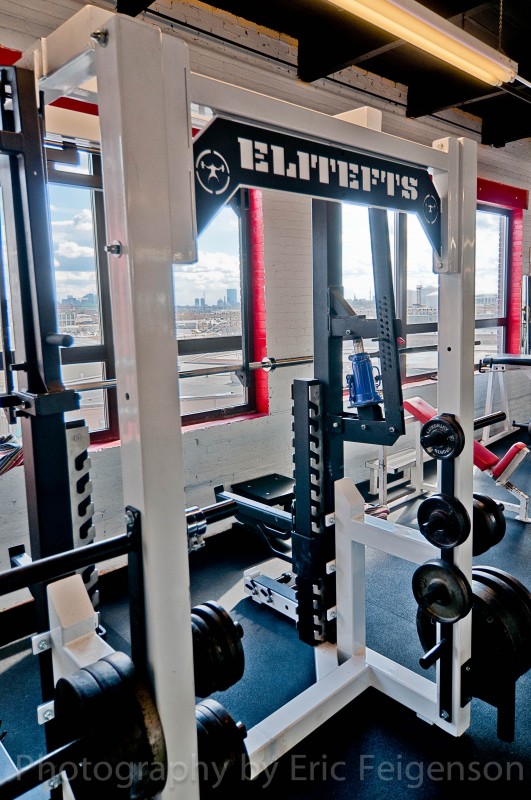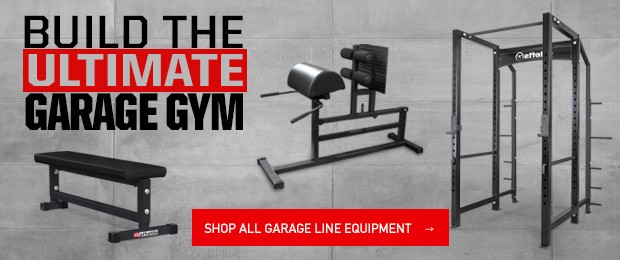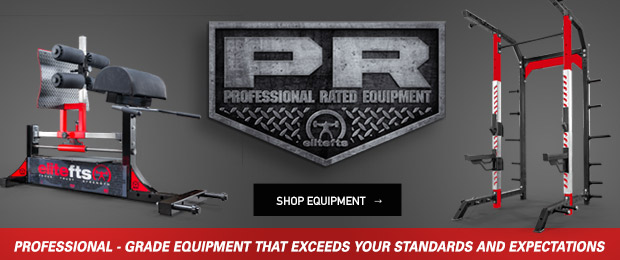I've been in this strength and fitness game for a long damn time, and frankly, I gotta say it: y'all have lost your minds when it comes to training. We talk about science-based training, conjugate, periodization—all these terms—and somehow, the most critical component, common sense, has been completely thrown out the window.
An Analogy for the Madness
Let me give you an analogy. This morning, I woke up, shot AG1, got in the car, and drove to the gym to train. Simple. But if this were the strength and conditioning industry trying to "optimize" it, we'd be talking about:
- Should I have backed the car in last night for a more optimal exit?
- Exactly how many feet before the stop sign should I start braking? 10? 5?
- What's the most optimal way to time hitting that yellow light?
There are answers to all these ridiculous questions, but the fact is, all I needed to do was drive the damn car to the gym. You can get so deep into the weeds analyzing every micro-step that you forget the basic act of driving.
Training: Lost in the Weeds
This is exactly what's happening in training. We're told to train hard, but not too hard; increase volume, but not too much; get adequate rest, but not too much. And if you're not recovering, you're told to jump into cold plunges, infrared saunas, peptides, and every other recovery "hack" under the sun.
We debate optimal RIR, RPE, intensity zones, muscle fiber recruitment, and shiny new supplements like methylene blue. These topics get clicks, dominate conversations, and flood social media. And all of it? That's the nuance.
The Card Analogy: White Space vs. Margins
Imagine holding up a card. There's an enormous expanse of white space and a thin black margin around the edge. That black margin is the nuance: RPE debates, periodization models, perfect timing, and minute technical cues. It's interesting stuff. I'll geek out on it, too.
But the vast white space? That's common sense. And for most people, that space is damn near empty. They've forgotten the basics because they're fixated on the margin.
Real-Life Gym Observations
I see it constantly. I was in a big commercial gym recently, just watching "normal" folks train. Middle-aged people doing quarter-reps on machines, not adjusting seats or weights, clearly having no clue about basic movement. Meanwhile, fitness instructors are walking around talking about dogs or RFK instead of showing the 58-year-old how to use a full range of motion.
Then you've got personal trainers timing sets with stopwatches—focusing on a pointless detail while the basic application is missing across the floor.
Maybe We're Failing
It makes you wonder. The obesity epidemic and health crisis are worse than ever. We're in the fitness industry. Maybe, using some common sense, we're failing. Maybe we need to change what we're doing and saying.
The Common Sense Principles
So, what are these magical, forgotten common sense principles in the white space? They're not sexy. You'll think, "Yeah, I know that." But be honest—are you doing them?
Consistency
How much time do you have to train each week? Two days? Three? That's how many days you train. Simple math. Stop looking for the "optimal" frequency from some guru and look at your schedule. Show up consistently based on what’s realistic.
Effort
Most people don’t train hard enough. We're scared of "overtraining," but for most, the real problem is not training hard enough. If you push too far, you'll know. You won’t recover for the next session. That’s common sense feedback.
Master the Big Compound Lifts
Learn the fundamental movements: squats, hinges, presses, pulls. You don’t need to be a technician unless you’re competing. But you need to know what the movement should feel like. If a movement hurts, try something else or strengthen the weak area. That's common sense.
Intentional Programming & Progressive Overload
Have a progression plan. Progressive overload doesn’t mean adding weight every session. Stick with a weight until it gets easier, then move up. If progress stalls, change something. Keep it simple.
Recovery and Nutrition
Are you recovering between sessions? If not, start with the obvious: sleep and nutrition. Are you getting at least 6-7 hours of sleep? Are you eating enough protein? Aim for 0.75-1 gram per pound. Stop chasing hacks. Cover the basics.
Self-Awareness
Why are you training? What’s your goal? Are you progressing toward it? If yes, don’t change your program just because it contradicts a trend. What works for you is common sense.
When the Nuance Does Matter
Yes, the nuance matters—but only after you’ve mastered the basics. When you're years in, when the white space is automatic, that’s when margin matters. Fine-tuning periodization, specific recovery modalities, or micro-level technique adjustments can make a difference.
Even the placebo effect of believing a certain nuance helps can work at that stage. But you earn the right to the margin by owning the white space.
Addressing Common Training Questions
Training Through Injuries
Don't rush it. Be patient. Find pain-free movements. Gradually work back using sound protocols. Common sense.
Older Lifters (50+) & MEV
Should older lifters do more than Minimum Effective Volume (MEV)? Depends on goals and time. If time is limited, MEV might be enough for maintenance. If there's more time and drive, then increase volume. Self-awareness dictates the answer.
Mental Performance (Getting "Zippy")
Don't get hyped if your form isn’t solid. High arousal states cost more recovery. Save it for top sets. Dial it up when the set demands it. Use common sense.
Dealing with Drama
Don't entertain it. Focus on what you can control. If someone’s toxic, the tough but right call might be to cut them loose. Drama passes.
Conclusion: Master the White Space
The industry overcomplicates training to gain attention and sell products. But the basics deliver results for 99% of people 99% of the time. Every master will tell you: focus on fundamentals.
Stop obsessing over the margins. If your consistency sucks, your effort is weak, your technique is sloppy, your program is random, and your sleep and nutrition are trash—no hack will save you.
Get brutally honest. Look at your training. Are you neglecting the big, empty white space? Fill that in first.
Master the common sense principles. They are simple, but they are not easy.
You know what to do. Now go do it.
Watch Dave rant on the topic here!
Too many lifters are fixated on the margins of training—debating optimal RPE or the latest recovery hack—while forgetting the white space: common sense.
This is the squat workout I used to squat my first 500 pounds, and it is how I trained back in the mid-80s. I pulled this program directly from one of my old training logs.
Week 1
Suit used with straps down.
135 X 10
135 X 10
135 X 10
225 x 5
These first sets were to really focus on technique.
315 X 2
350 X 1
375 X 3
380 X 3
300 X 5
300 X 5
Week 2
Suit used with straps down.
135 X 10
135 X 10
135 X 10
225 X 5
These first sets were to really focus on technique.
315 X 2
350 X 1
380 X 3
385 X 3
305 X 5
305 X 5
Week 3
Suit used with straps down.
135 X 10
135 X 10
135 X 10
225 X 5
These first sets were to really focus on technique.
315 X 2
350 X 1
385 X 3
395 X 3
315 X 5
315 X 5
Week 4
Suit used with straps down.
135 X 10
135 X 10
135 X 10
225 X 5
These first sets were to really focus on technique.
315 X 2
Suit used with straps down and wraps.
350 X 1
395 X 3
405 X 3
325 X 5
325 X 5
Week 5
Suit used with straps down.
135 X 10
135 X 10
135 X 10
225 X 5
These first sets were to really focus on technique.
315 X 2
Suit used straps down and wraps.
350 X 1
375 X 1
405 X 3
415 X 3
335 X 5
335 X 5
Week 6
Suit used with straps down.
135 X 10
135 X 10
135 X 10
225 X 5
These first sets were to really focus on technique.
315 X 2
Suit used with straps down and wraps.
350 X 1
375 X 1
415 X 2
425 X 2
340 X 5
340 X 5
Week 7
135 X 10
135 X 10
135 X 10
225 X 5
These first sets were to really focus on technique.
315 X 2
Suit used with straps down and wraps.
350 X 1
375 X 1
405 X 1
425 X 1
Suit used with straps up and wraps.
445 X 1
405 X 3
405 X 3
Week 8
Suit used with straps down.
135 X 10
135 X 10
135 X 10
225 X 5
These first sets were to really focus on technique.
315 X 2
Suit used with straps down and wraps.
350 X 1
375 X 1
405 X 1
Suit used with straps up and wraps.
435 X 1
465 X 1
415 X 3
415 X 3
Week 9
Suit used with straps down.
135 X 10
135 X 10
135 X 10
225 X 5
These first sets were to really focus on technique.
315 x 2
Suit used with straps down and wraps.
350 X 1
375 X 1
405 X 1
Suit used with straps up and wraps.
445 X 1
465 X 1
480 X 1
425 X 2
425 X 2
Week 10
Suit used with straps down.
135 X 10
135 X 10
135 X 10
225 X 5
These first sets were to really focus on technique.
315 X 2
Suit used with straps down and wraps.
350 X 1
375 X 1
405 X 1
Suit used with straps up and wraps.
455 X 1
475 X 1
490 X 1
440 X 1
440 X 1
440 X 1
Week 11
Suit used with straps down.
135 X 10
135 X 10
135 X 10
225 x 5
These first sets were to really focus on technique.
315 X 2
350 X 1
375 X 1
Suit used with straps and wraps.
405 X 1
425 X 1
450 X 1
Week 12
Meet week
Warm-ups
135 X 3
135 X 3
135 X 3
225 X 3
225 X 3
315 X 1
Suit used with straps up and wraps.
365 X 1
405 X 1
Suit used with straps up and wraps.
425 x 1
Meet Attempts
First: 450 pounds
Second: 480 pounds
Third: 500 pounds
Accessories
Good Mornings - 3 sets 10 reps
Weighted Sit-ups - 3 sets 20 reps
Back Raises - 3 sets 20 reps
*Other movements that were more squat-related were done on deadlift day. While this was squat day, the accessories were deadlift-related.
This is the exact training cycle I used in the mid-80s to squat my first 500 pounds.
I have always rolled my eyes in wonder as trainers, coaches, and lifters would speak about the most optimal training program and wonder what reality they live in.
For instance...
This week illustrates PERFECTLY what I wrote in this article about how my training split is set up and why...
Sunday, I walked into the gym, warmed up and then my wife gave me some news that required I leave the gym ASAP. Not only the gym, but town.
Thirty minutes later, I was on the road. So is my training now F*&ked? NO.
In life, shit happens, so my program is set up for the worst-case situations.
Monday is usually an off-day, but this week it became my chest and tricep workout, which is what I missed Sunday.
During the week, I train back, delts, arms, abs, etc. I do this whenever I can fit it in. These are SIMPLE to train anywhere for me. Hell, for anyone! I was out of town Sunday, Monday, and Tuesday. I got back late Wednesday night. I did drive home once in the middle of this, only to get a call two hours later that I needed to go back.
I found a small gym close to where I was located. I always find the closest because time is critical, and travel sucks it all up. I don't care how crappy, plush, or limited the gym is. You can train my weekday body parts anywhere. I did chest and triceps on Monday. Back on Tuesday and shoulders on Wednesday. I made sure I had time for cardio every one of these days. The club wasn't the greatest, but I got in everything I needed to do - plus some - and it took no real time away from what I was doing because it was so close. While others went to lunch for an hour, I went to the gym and called my lunch in to have picked up on my way back.
Tomorrow, I'll do arms and then might have to leave town again Saturday, so I have to figure out if I can leave later in the day, so I can still train Saturday morning (legs are a bitch to train on the road), or if I need to push them to Friday. I would rather NOT train them on Friday, as this is a lot of training days in a row, but I've got to do what I've got to do.
Dieting is also simple if you know what you're doing. I went to the store and picked up my egg whites, omega 3 eggs, almonds, natural peanut butter, and brown rice bread. Every grocery now seems to have an organic section, which makes things easier. I packed my metabolic drive and a shaker. There's four meals a day with zero effort at all. Then, I found a Subway where I bought a week's worth of my triple chicken breast flatbread. That makes about five or six meals. This left one meal per day if I had to eat out, and that's also easy. You order smart and since it's the last meal of my day, it won't have any carbs. Everywhere has some kind of meat, so it really doesn't matter where you go.
I'm writing this to illustrate how most excuses I hear are 100 percent complete bullshit. This week has been full of stress and emotional hell, but these things have made a difference in keeping my sanity, so I could focus on the most important things.
I should note that I've been in situations like this before. You learn as you go, and I do hope some of these suggestions help you in one way or another.
Is this really the most optimal way to train? NO, not at all, but when did REALITY ever become OPTIMAL?
One thing I've learned in training, life, and business is to always deal with the REALITY of the situation at hand. THIS is what gets you moving and keeps you moving. You can spend your entire life looking for the most OPTIMAL way and never get one damn thing done.
This might explain why so many coaches and trainers are weak, fat, and (or) out of shape. Then again, they could just be lazy and lack desire, but that's for another day.
Originally written in 2010 and pulled from Dave's old training log.
Is this really the most optimal way to train? NO, not at all, but…
Want to know how to become a powerlifter? Believe me, there’s no "Powerlifting for Dummies" book at your local Wal-Mart. Being a powerlifter is a strange blend of mysticism, drive, strength, and a little bit of crazy. To be one, you’ve got to want it badly; you've got to want it so badly that you’re willing to devote years to its pursuit. Still, as rough as it is, those who are indoctrinated into its strange world rarely leave.
This is part of a story about one man’s journey into the cult of powerlifting.
Jonathan Among The Giants
When Jonathan walked into the hotel lobby, he found himself among giants. Huge men milled around the room, all of them looking like they lifted boulders for a living. What was going on here? Some type of professional wrestling event? A casting call for a gladiator or barbarian movie? Jonathan had never seen anything like it.
He'd come to the hotel to meet a friend for lunch, but as they ate all he could do was stare at these powerful-looking leviathans. Finally, he asked the waiter what was going on.
"Powerlifters," the waiter said. "And we're running out of food."
After lunch, Jonathan left the restaurant and noticed a commotion coming from the hotel's grand ballroom. Peeking through the door, he saw hundreds of people cheering these giants on. He paid the entry fee and found a place in the back of the room to watch what he thought was called the "deadlift event."
Lifter after lifter would approach the bar with a crazed look of intensity and pull with his greatest effort. Each pull would finish with the lifter either making the weight or missing it, but either way, they all had a look of pride and accomplishment.
Jonathan didn't really know what was going on here. He'd never attended a powerlifting meet before. He knew only one thing: this was coolest thing he'd ever seen.
Tom Gets His Total
"For the final deadlift of the day, we have a world record attempt," the loudspeaker announced. Tom approached the bar. He'd trained his whole life for this moment. Weighing in at a ripped 275 pounds, Tom was ready to go.
With a look of controlled rage on his face, he approached the bar and began to pull with everything he had. The bar slowly left the ground as the crowd all got to its feet, some standing on chairs, some standing in the aisle, all cheering as loudly as they could. To Jonathan, the scene was unreal.
Tom kept pulling. The tension in his back and hands was insane but he knew if he just stayed with it the lift would be his. Seconds later he was standing with the bar locked out and heard the head official say "down." It wasn't until the bar hit the ground that he noticed the roar of the crowd. The lift was his; the day was his. This, he thought, is what it's all about.
When the meet was over, the lifters made their way back into the warm-up room to exchange stories about the day's battles. Some were excited about their new records; others were disappointed but were already planning their next training cycles. They had all put in countless hours in the gym for this and wanted to extend it as much as they could.
Tom sat in a circle of chairs with friends and training partners. This was Tom’s day. He'd hit a record squat, bench, and deadlift — the biggest total of his life. All the pain, injuries, sacrifices, and training hours finally seemed worth it.
"What's next?" asked one of Tom's training partners.
Tom didn't have to think about his answer. "It’s back in the gym Monday. I know I have more left in me." This is what he said after every meet, what top powerlifters always say. For them, satisfaction isn’t an option. When you become satisfied, you become obsolete.
The Decision
Jonathan couldn't believe what he was feeling. Halfway through the giant's lift, he'd found himself up on his chair screaming encouragement to a man he'd never met.
When the event was over, he knew one thing for certain: he had to become part of this.
Jonathon was never an athlete in high school and hadn't done anything fitness-related since he graduated from college a year ago. He did work out from time to time in college but nothing with any structure or consistency. At his best, he was about 185 pounds at 5'11" with a personal best bench press of around 250, but that was years ago. He loved what he'd just witnessed but had no idea where to begin. It was then he made a decision: he had to talk to the giant.
Making his way to the back room, he had no idea what he would say. What would these huge men say to him? Would they laugh and kick him out of the room? Would they make fun of him? Jonathan didn't know, but he had to try.
He found Tom packing up his bag. Hesitantly, Jonathan asked, "Excuse me, but how does one get involved in the sport of powerlifting?"
Tom and the other lifters turned to look at him. Jonathan couldn't help but feel he was being sized up.
"How serious are you?" Tom asked.
"Pretty serious, I guess," Jonathan said. "That was, well, the greatest thing I've ever seen." He waited for the giants to laugh at him. They didn’t.
Tom took out a piece of paper and scribbled some notes on it. Sweat was still running off his bald head as he handed Jonathan the paper. "Meet us here Monday at 5:00," he said. "This is my gym."
Shut Up and Spot
Jonathan couldn't sleep at all Sunday night, anticipating the Monday training session. He was now going to be a powerlifter. Time couldn't go fast enough on Monday, but 5:00 finally rolled around. He was fired up to finally be joining a gym.
As he drove through the commercial developments, he kept looking for the neon sign for Tom’s gym. The businesses soon turned into residential neighborhoods and he began to wonder why Tom would ask him to pick him up at his house. He pulled into Tom’s driveway and honked the horn. After a few minutes, he began to wonder if Tom was home. Then it dawned on him that maybe he'd been blown off and sent on some wild goose chase.
In a last attempt, Jonathan got out of the car to ring the doorbell. As he walked toward the house, he heard loud metal music from the garage. Tom must be working on his car or something, Jonathan thought. He couldn't believe what he saw when he walked through the door. This was Tom’s gym. He had no idea what the equipment was but there was nothing like he used in college.
"Hey, we thought you weren't coming!" Tom shouted above the music. There were about seven guys crowded around a power rack. They were doing some strange movement in the rack with some type of yolk bar suspended by chains. "One more rep!" shouted Tom as the lifter's face turned beet red under the strain.
Jonathan couldn't believe how great this was. The bar was loaded with more weight than he'd ever seen. These guys were crazy strong and he couldn't wait to become one of them. He walked over to Tom and asked what he should do.
"Your job today is to spot and keep your mouth shut," Tom said.
Jonathan spent the rest of the day loading the bar for all the other lifters. This was still one of the best days of his life. When the session was over, Jonathan was in awe. This place was hardcore, these guys were hardcore and the weights were certainly hardcore. When the last lifter was done Jonathan was ready to learn how to be strong. With little conversation, all the lifters packed up the gear and left. Jonathan was left with Tom and asked again what he should do.
"Go home," Tom replied. "Come back Wednesday."
Jonathan knew instinctively not to argue. He drove home still psyched up over the day's events but wondered why he didn't train. Two more weeks passed, and Jonathan still hadn't touched a weight. He'd asked a few times what he should do, and the lifters kept telling him to shut up and spot. He began to wonder if he was brought in only to load the weights. But he was still excited to be there and was having a great time. The weights these guys were moving were unreal! It was a privilege to be there.
The last time he asked Tom when he could lift, Tom told him flat out that he wasn't ready. Jonathan was a bit set back. He really wanted to be a powerlifter and all he was doing was spotting. This continued on for another week. He was now bored out of his skull. As he sat in silence at the end of one of their bench sessions, Tom walked over and said, "Now you're ready."
"Why now?" Jonathon asked.
Tom explained that when he came in, he was in awe of the lifters in the group and that you can never become what you're in awe of.
"It's okay to have idols as a kid," Tom said, "but when you grow up, you have to become what you dream about."
Then he said something Jonathan would remember for the rest of his life. "We know what we can do for you; what we really want to know is, what can you do for us?"
Jonathan understood. They already had all the spotters they needed. What they really wanted were lifters. Jonathan was about to become one.
Becoming Bullet Proof
Monday rolled around and from the past weeks' experience, Jonathan figured out this was a lower-body, heavy day. As he drove to the gym, he wondered what they would have him do today. He arrived early at 4:30 and found a few of the guys were already there. Some were doing extra abdominal movements, some were dragging a sled and others were stretching out. The one thing that stood out was that they were all doing something different. He would have to ask Tom about this.
Tom finally got there and they all agreed to do some type of good morning movement. Jonathan had no idea what this was but was game for anything. A couple of the guys placed the bar on their back and began to bend over at the waist. He figured this was pretty easy and took his place in the lineup. As he walked up to the bar, Tom asked, "What the hell are you doing?"
"Good mornings," Tom said.
"No," Tom said, "you're not. You aren't ready. Come with me."
They walked out back and Jonathan was given a weight belt attached to a sled with a couple of plates on it. "Drag this for ten trips down to the tree and back, then come get me," Tom said.
While he really wanted to train like the other guys, at least he wasn't spotting and loading the bar. After a few trips, he could feel his legs getting tired and it was getting harder and harder to breathe. He'd do a set, rest, and then do another. He could hear the intensity of the session going on inside and wished he was part of it. After he finished, he went back into the gym.
The guys were now into their top sets and he walked over to Tom and asked what to do next. Tom told him to spot and he'd get with him after they finished. Jonathan spent the next ten minutes watching the guys just about blow their heads off under the strain of the good mornings. Jonathon asked Tom why he was spotting again. "Everyone spots with the big weights," Tom replied. "This is part of your job. No one is above spotting and coaching here!"
When the movement was over, the guys split up and began doing different exercises. Once again, he wondered why they all did different things. Jonathan was told to do five sets of something called reverse hypers. He was positioned on a bench with a strap attached around his ankles. He began to swing the weight up and was told to arch as hard as he could at the top. He couldn't use much weight at all. The other guys were using around 500 pounds but all he could use was 50. When he finished, his lower back felt tied up in knots.
Next, he did incline sit-ups and straight leg raises. He did five sets of each, with coaching coming from many different lifters. He was taught how to flex and tighten his abs. From time to time, they would come over and push their fingers into his abs to make sure they were being held tight.
The last movement he was asked to do was called "banded good mornings." For this, he stood on a big rubber band, placed the other end around the back of his traps, bent over at the waist, and then stood up. He was told to try and feel the movement in his lower back and hamstrings. He could feel it all right.
"Crap" Work
While he thought he'd be sore, he actually felt pretty good. He couldn't wait for Wednesday’s heavy bench press session. When he got to the gym, he was told once again to hit the sled for ten trips. When he came back in, the guys were doing a bench press movement where they would lower the bar down to a couple of boards and press back up. He couldn't wait to give this a shot, as he was sure he could handle some decent weight.
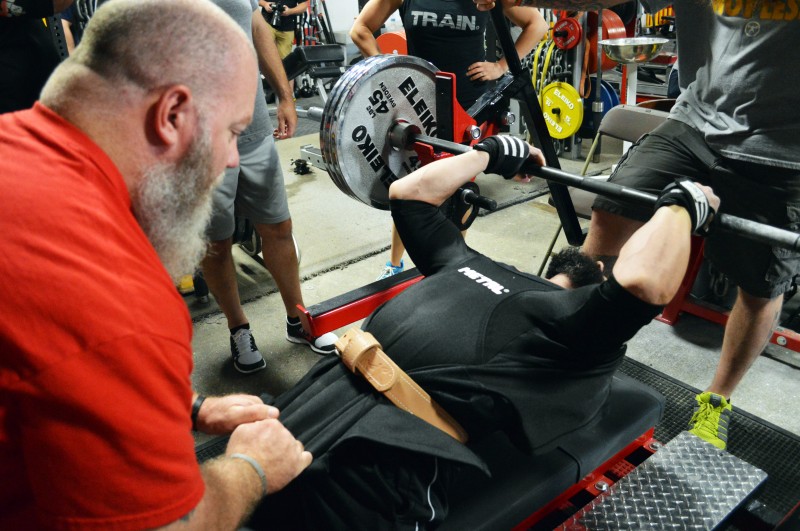
To his surprise, he was told to do banded good mornings and abs again. When he was finished with this he was told to do 100 push-ups and to do them in as many sets as it would take. He had to use good form and with his hands placed on a pair of hex dumbbells. His grip width had to be in the same position he'd eventually bench in.
This was followed up with some work for the rotator cuff and rear shoulders. Jonathan was told that this would be his workout for the next month and that he was to try and do more weight and/or reps on each training session thereafter.
Two weeks passed and he was ready to do some of the movements the other guys were doing. Tom wouldn't budge. The kid had to stick to the plan. Once again he was getting frustrated with this training plan and began to wonder if these guys really knew what they were doing. He already knew that none of them did the same thing. Finally, he asked Tom why he had to do all the "crap" work and why no one else was doing it. He wanted to be a powerlifter and all he was doing was "sissy" movements.
"You see Jim over there?" Tom said. "Jim has weak glutes and is doing extra work for them. This is what he needs to do to get his deadlift to go up. Do you see Matt over there? Matt's doing extra lower back work. He needs to make his back stronger to keep the bar in a better position when he squats. And Mike over there? Mike's doing extra ab work to help with his transfer of power out of the hole when he squats. You need to do conditioning work to be able to handle the work we'll ask you to do later. You'll never be 100% injury-free, but you better be prepared to handle the strain."
Technique, Technique, Technique
It had been six weeks since Jonathan's first conditioning session and he was eager to begin "real powerlifting." This was the day he'd waited for.
As he walked into the gym, he saw the guys were setting the rack up to do high box, Manta Ray squats. Jonathan was ready to walk up to the rack when he was stopped in his tracks by Mark. Mark was one of the best squatters in the gym and pulled him aside to let him know he wasn't going to be doing box squats today. Today he was going to squat and squat correctly.
Mark took Jonathan aside and first explained how to do a squat with perfect form; next, they watched a few training videos detailing squat form. Mark then explained that to fully learn how to squat, Jonathan had to first understand the squat. This is accomplished by hearing the squat explained, then seeing it done properly, and then doing it so many times it becomes automatic.
Jonathan was handed a broomstick and given the instructions:
- Place the bar on the center of your back.
- Squeeze your hands on the bar as hard as you can.
- Pull your shoulder blades together and make sure your upper back is tight.
- Pull your head up and drive it back into your traps.
- Stand with your feet out wide.
- Push your feet out to the sides of your shoes.
- Force your knees out to the side.
- Arch your lower back as hard as you can.
- Keep your abs tight.
There were a few other steps but all Jonathan could remember was doing rep after rep while Mark barked at him to squat back and sit on the bench. "Squat back?" he said, "I'm already tired!"
"Look, man," Mark said, "You'll never squat 100%. None of us do. The key is to get as close as you can. Right now, you're at 0% and are piss ass weak. Now squat!"
Rep after rep, they worked on form. Jonathan must've performed 300 reps that day and actually made his way up to using a 45-pound bar. The weight wasn't a problem, but Mark wouldn't let him use more as long as his form was sub-par. After what seemed to be 45 minutes of squatting, he was told to move onto reverse hypers and ab work, then finish with the sled for a few trips.
By this time, Jonathan was pretty fond of the sled and asked if he should do more. From the corner of the gym, Bob shouted, "Oh no! Not another Mr. GPP!" Tom then pulled Jonathan aside and explained that GPP, General Physical Preparedness, is very important but you don't compete in GPP. What Jonathan really needed was optimal conditioning for powerlifting, and anything too much over that is pointless.
About this time, there was a knock on the door. Tom answered it and turned around with a huge grin on his face. It seemed Tom had ordered a new piece of equipment, and it was here! This was not just any piece of equipment but a glute ham raise—not only a GHR but the best you can get: a professional GHR from elitefts. For the rest of the session, they were all doing wide stance GHR’s, close stance GHR’s, ab work, and anything else they could think of.
It was business as usual for Jonathan though. He was to stick with this plan until he got the nod of approval from the rest of the guys. He watched videos and worked on his form any time he could find the time. He even filmed his sessions to compare against the form of the guys on the tapes.
After his form work, he was told to train right along with some of the other guys and get used to the many supplemental and accessory movements they were using. He was now beginning to feel his body getting stronger and noticed that he'd already gained 15 pounds. Finally, he was becoming a powerlifter, but he knew he had a long road ahead.
The Program
It had been four months since Jonathan's first visit to Tom's gym. He was beginning to become part of the crew and was eager to get on the same program as the other guys. His body was now much bigger and stronger than the first day he'd walked into the garage. He knew he was ready for the intense training he'd been watching over the past several months.
Over breakfast one Saturday, Tom reviewed how the program worked.
"How are we going to get you strong, kid?" Tom asked.
"I guess by following the program you're going to give me, right?" Jonathan said.
Tom explained that a set program isn't a bad thing, but to reach the higher levels, Jonathan would have to learn how to come up with his own program. The number one secret all top lifters know is that the best program for them is the one they come up with, not the one someone hands them on paper.
"You see, to be the best you have to also be the best at figuring out what works for you. You have to be able to find and fix your weaknesses while always keeping your eyes on the higher goal," Tom explained.
"But how do I know what my weak points are?" Jonathan said.
Tom laughed as he dug into his mountain of food. "Your weak point right now is you don't know how to discover your weak points! So tell me, where would you like to be five years from now?"
Jonathan thought for a moment and replied that he'd like to have his Elite status in the sport of powerlifting.
"Okay," Tom said, "At what weight class? What will your specific lifts have to be? Let's set some long-range goals."
They put together a plan that would have Jonathan lifting in the 275-pound weight class (he was currently 245) with an 800-pound squat, 500-pound bench press, and 700-pound deadlift. Jonathan felt great that he finally had goals to shoot for, but he knew he had a very long way to go. Now, how to get there?
Tom explained that there would be two days per week for max effort work and two days per week for dynamic effort training. The template would look like this:
Monday — Max effort squat and deadlift day
Wednesday — Max effort bench day
Friday — Dynamic effort squat day and deadlift day
Saturday — Dynamic effort bench day
"The max effort days are intended to make you stronger," Tom said, "while the dynamic effort days are designed to make you faster. That’s it, nothing fancy. Strength plus speed equals new personal records."
Jonathan was then handed a series of articles titled The Eight Keys and was told to read them for the details. All he needed to know would be there.
Jonathan showed up to the gym on Monday, fired up about the "Eight Keys" article, and wanted to start with the chains and bands. Tom turned to Jonathan and asked one very simple question:
"Can you compute the gravitational force exerted on a mass of two pounds located five feet above the center of a circular disk with a radius of ten feet and mass of three pounds per unit of area?"
Jonathan looked at him like he'd lost his mind. "What does this have to do with training?" he thought. Tom went on to explain that you can’t understand calculus without first understanding basic math. The same is true with strength training. No need for chains and bands until you get the basics down first.
"But don't I have to use chains and bands to get strong?" Jonathon asked.
"No," Tom replied, "You have to get strong to use chains and bands! Chains and bands aren't the program; they're only a function of the program. You first must understand the program. The first thing for you is to build a strong base of strength to the point where you can get on a platform and display it."
"Okay," said Jonathon. "I get it."
"Good. Now let's talk about the methods that'll make up your program in basic terms you'll understand."
The Method to the Madness
To explain the dynamic effort method, Tom asked Jonathan to jump onto a small box. Jonathan did this with no problem. Next, Tom asked that he repeat the jump again but this time he had to jump in slow motion. It didn't take Jonathan long to learn this was impossible to do.
"That's right," Tom said. "You gotta have speed to generate force. The good news is this is a component that can be trained. This is what the dynamic effort method is for."
They moved on to what Tom called the max effort method. He set up a 50-inch box and asked Jonathan to jump onto it. Jonathan looked confused.
"I need to be faster to get up there," Jonathan said.
"No, for you to get way up there you'll have to get stronger. We can make you very fast but as long as your strength stays the same you'll only improve your current strength level. Let me explain it this way: you may be strong enough to jump to 21 but now are only fast enough for 18 inches. Speed will help you get to 21 but to go higher your strength will have to increase. This is where the max effort method comes in. See, there's a need for both speed and strength to be developed at the same time."
Jonathan’s max effort work consisted of the following movements:
- Good mornings with various bars (cambered, buffalo and safety squat).
- Low box squats with various bars.
- Various deadlifts: standing on mats, pin pull and off-the-floor.
Jonathan’s dynamic squat wave was set up in three-week cycles. He also used a box squat set at parallel for all sets:
- Week one: 8 sets of 2 reps with 50%
- Week two: 8 sets of 2 reps with 55%
- Week three: 8 sets of 2 reps with 60%
On all the days where he felt good and the speed was on, Jonathan did a few extra sets after the first eight sets and added weight on each one. These were never taken to failure, but were heavy enough to get a good feel for where his strength base was. After the three weeks the cycle was repeated.
Jonathan’s dynamic bench wave was set on a flat cycle using 50% for eight sets of three reps. On all the days where he felt good and the speed was on, Jonathan did a few extra sets, same rules as above.
Leave Jonathan at Home
After some time, Jonathan began to understand the importance of speed and strength but needed to know more. He had to know what to do after the main exercise of the day. He remembered Tom telling him about the weaknesses several of the lifters had and what they were doing with their accessory work to overcome them.
The problem was he had no idea what his weaknesses were and had no way to find out how to fix them. All he knew was that he was still much weaker than everyone else, so he figured everything was weak, and he needed to do everything. He was totally lost.
Later that day, they were all doing low box squats with the cambered bar. Jonathan was fired up for this, as it would be the first time he was doing a max effort movement for a second rotation. His max effort movement was set up to rotate every three weeks and would later come down to every week like the rest of the guys.
The objective of his first week was to get used to the movement for sets of three reps. The second week’s objective was to set a one rep max, while the third was a "balls to the wall" strain lift. He accomplished a 275 max during his first rotation with the cambered bar and was geared up to break this record. His warm-ups went well as he completed three reps with the bar and then 95, 135, 185, and 225 pounds. He then dropped to singles and completed the following sets with 245, 265, and then a record at 285 pounds!
He was jacked up about this and was ready to quit for the day when he heard the loud slam of a 45 plate on the bar. He was called to the bar and noticed three 45s on each side. The crew shouted, "You're up!"
Jonathan felt the adrenaline running through his veins and rage beginning to build up inside. As he approached the bar, he heard the battle cries from the crew:
"Get this bitch!"
“You got it!"
"Get ya some!"
“Kill this mother!"
"Get tight!"
…and "Come on, J!"
He lifted the bar out of the rack and felt the load bearing down. As he sat to the box, the rage kept building. He paused for one second and began to stand up. He left the box fast and, at the mid-point, began to stall. "Up, Up, Up!" and "Head up!" is all he heard. He pushed with all he had, and the bar kept moving. He felt the pressure building in his head. His back, legs, and torso felt incredibly strained, but he pushed on.
When he racked the bar, he opened his eyes to see silver lights floating around. He first thought it was chalk in the air but then realized it looked more like glitter. Then he realized he was seeing stars for the first time in his life. He turned to Tom with bloodshot eyes and a huge grin on his face and said simply, "Holy cow."
"Welcome to the world of powerlifting," Tom said. "Today you became J, and Jonathan is a thing of the past. Leave Jonathan at home and bring J to the gym every workout. He's the one who'll take you where you want to go." Jonathan was no longer a guy who "worked out." He was a lifter.
After the max, J was pretty messed up the rest of the day and could only manage to do some glute ham raises and ab work. He asked how he was supposed to do all the other work for the day. Tom told him he was done and that he had to learn to listen to his body.
"So, what are my weak points?" J asked.
Tom explained to J that weak point training was a very advanced concept and that he just needed to focus on bringing up the basics for now. For the squat and deadlift, these included training for the hamstrings, lower back, and abs. The bench press movements should target the triceps, delts, and lats.
"This may seem very simple, but just do the basics, and your lifts will jump," Tom said. As time passed, Tom would teach him that the best way to find weak points was to look at where the lifts break down during max effort lifts. With The Eight Keys Part III and the crew's help, he'd be able to bring up these weak points, and his lifts would go through the roof.
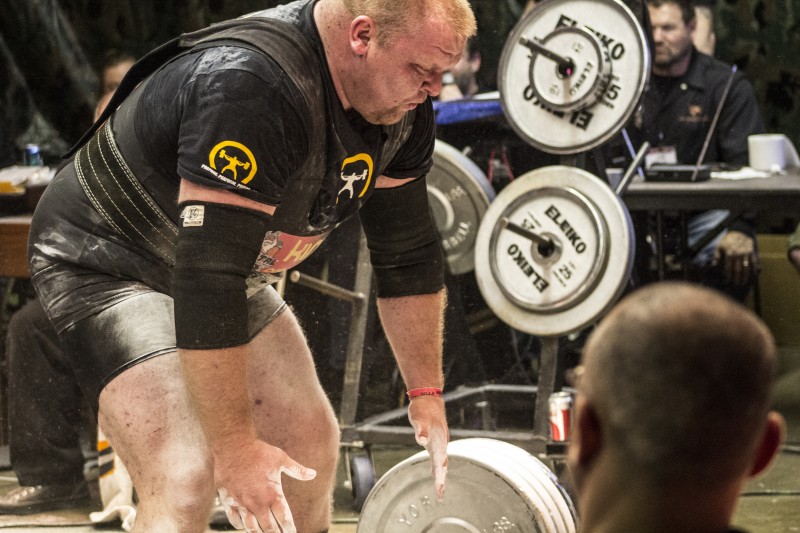
The Payback
J kept training and breaking records with the crew for the next two years. With newfound motivation and determination, he returned to school to become a strength coach. He could no longer train with the crew as the university of his choice was hours away from home, but he kept training and entering local powerlifting meets for the next five years while he earned his degree.
Due to his hard work in the gym and classroom, J was then offered an assistant strength and conditioning coach position and, over the next six years, worked his way up to being the head strength and conditioning coach. The methods he learned from the crew have been the core of his training programs and the results were amazing. J would call Tom from time to time for the first few years after he left but then lost touch with him and the crew.
Tom, now retired from competition, has moved the gym from his garage to a small private training center. His center has been producing great lifters for the past eleven years. Tom’s main goal with all his lifters was to help them achieve their elite status, hoping they'd pass on what they'd learned to the next generation of lifters.
His crew was now gearing up for the Nationals. Tom remembered the last time the Nationals were in his hometown twelve years ago. This was one of the best competitive days of his life, the day he'd set the federation world record for the 275 class.
The Nationals was a great meet for Tom’s crew and with no lifters in the last round, he found himself relaxing in the back row watching the deadlifts. The first round of guys took their opening attempts and the final lifter's opener was 100 pounds over the next guy. He didn't know the lifter's name but the guy was "jacked" and had perfect form.
The loudspeaker crackled, "The next attempt will be for a new 275-pound class world record!"
The crowd stood and Tom could feel the adrenaline building up inside him. Sure, his record was at risk, but this was what people train their entire lives for. Through the chalk and dust emerged the "jacked" lifter. He had a look of determination and a thousand-yard stare that only another powerlifter could understand. As he chalked his hands and made his way top to the bar, Tom could hear the lifter's helpers shouting words of encouragement:
"Back tight!"
"Tight grip!"
"Shoulders back!"
"Get some!"
....and "Come on, J!"
That last one hit Tom like a ton of bricks. He was taken back twelve years ago when he first met Jonathan at this very meet. Tom looked very closely at the lifter as he approached the bar and realized that this was the same kid he'd helped bring into the sport so many years back. Now, the "kid" was here and going after his record. Tom jumped up onto his chair so he didn't miss a thing.
J grabbed the bar and began to pull. Veins began popping out all over his frame. The weight rocked off the floor and began to stall right above his knees. The crowd was going nuts and everyone was now on their chairs. J kept pulling with everything he had. This was exactly what he got into the sport for.
The barbell kept moving inch by inch until he stood at lockout with the huge load in his hands. "Down!" the head judge shouted. J held the bar for a few extra seconds to savor the moment. He'd finally realized one of his longtime dreams!
Tom had to make his way back to the warm-up room to congratulate J for the awesome lift. As he approached, Tom noticed a young novice lifter speaking with J.
"Sir, that was a great pull," said the kid. "I didn't do so well myself. This was my first meet and I really don't know what I'm doing yet."
J looked the kid up and down and took out a piece of paper and handed it to him.
"My name's J and this is my direct phone number. Call me anytime and I'll help you set up a program for your next meet."
The kid thanked him and walked away with a look of hope and excitement in his eyes. One of the other lifters looked at J and said, "That was smart. Now that kid will be calling you every day."
J looked at the lifter. "I hope so. Someone took the time to help me once. It's what makes powerlifting such a great sport."
Tom heard the whole thing and recognized this for what it was: the greatest gift he'd ever been given. J had become a champion powerlifter and had learned more along the way than just how to bring up his weak points.
Tom made his way over. "You still pulling that sled around every day, J?"
J looked up and his mouth fell open. "Tom! It's great to see you, man, it's been a long time! I've been wanting to get in touch with you again for years to thank you for all you did for me."
"It was no big deal," Tom said.
That's when J told Tom the story of how he'd been at the end of his rope twelve years before, how he'd quit school and started sleeping all day and drinking and drugging all night.
"You took the time to help me out," J said. "You gave me something to live for. Training is great, but I also have a great job and family now. You and the crew were a big influence on my life and I can only hope to repay you for this someday."
Tom looked at J. "You've already paid me back more than you'll ever know."
And that's how a real powerlifter gets educated.
Your Turn
We would love to hear who, how, and when YOU got involved in the sport.
In two paragraphs or less, share your journey. At the very least, take a moment to thank those who introduced you to the iron game.
Originally published on T-Nation, March 2004
This is one of the best and most popular articles to ever be posted on the site. After you read this you will understand what it means to Live, Learn, and Pass On.
Rather than just writing one cycle, I’ve decided to make an easy-to-follow quasi-article containing all the different cycles for the squat I’ve used successfully. The first cycles will be for the Dynamic Effort squat without chains and bands. The second group will be with chains, and the last group will be with bands. Training with bands is still one of the most effective ways to train the squat. I’d recommend that everyone use bands all year round in some form or another.
A note about the percentages: These are taken off a contest squat with equipment. So if you’re lifting off a raw or no-equipment max, add 10% to all the percentages listed.
Squat Without Chains and Bands
Years ago, I’d have recommended a four-week squat wave, but after years of success in band training, I feel a three-week wave would be the most efficient. I also believe that there needs to be slightly different percentages based on the motor control of the athlete. This control is based on years of training, not the status of the athlete. For example, a beginner would have one to three years of training, the intermediate three to five years, and the advanced lifter over five years. The reason for this is quite simple: the more advanced athlete knows how to use his body more efficiently than the beginner and gets more out of a smaller percentage.
Beginner
- Week 1: 63% for 10 sets of 2 reps
- Week 2: 65% for 10 sets of 2 reps
- Week 3: 68% for 10 sets of 2 reps
The beginner has a couple more sets than the advanced and intermediate lifter. This is to improve the form of the lifter. The main goal of the beginner is to have perfect form, so in many cases, ten sets still won’t be enough and should be taken as high as twelve sets.
Intermediate
- Week 1: 60% for 8 sets of 2 reps
- Week 2: 63% for 8 sets of 2 reps
- Week 3: 65% for 8 sets of 2 reps
Advanced
- Week 1: 55% for 8 sets of 2 reps
- Week 2: 58% for 8 sets of 2 reps
- Week 3: 60% for 8 sets of 2 reps
Squatting with Chains
Beginner
- Week 1: 63% for 10 sets of 2 reps
- Week 2: 65% for 10 sets of 2 reps
- Week 3: 68% for 10 sets of 2 reps
Four to six reps over the three weeks must be above training percent. This is done in addition to the regular sets.
Intermediate
- Week 1: 60% for 8 sets of 2 reps
- Week 2: 63% for 8 sets of 2 reps
- Week 3: 65% for 8 sets of 2 reps
Four to six reps over the three weeks must be above training percent. This is done in addition to the regular sets.
Advanced
- Week 1: 55% for 8 sets of 2 reps
- Week 2: 58% for 8 sets of 2 reps
- Week 3: 60% for 8 sets of 2 reps
Four to six reps over the three weeks must be above training percent. This is done in addition to the regular sets.
Recommended Chains for Squatting
- Squat Max 200-400 Pounds = 60-pound chain
- Squat Max 400-500 Pounds = 80-pound chain
- Squat Max 500-600 Pounds = 100-pound chain
- Squat Max 700-800 Pounds = 120-pound chain
- Squat Max 800-900 Pounds = 160-pound chain
The chains are added to the weight of the barbell. Warm up with the chains on the bar first, then add the weights. When the barbell is in the rack, four to five links of chain should be resting on the floor. At no point should all of the chain be off the floor during the squat.
Squat Cycles with Bands
These cycles are only for intermediate and advanced lifters. The beginners would be better off sticking with straight weight or chains. If the beginner would like to use bands with his squat, then I’d suggest keeping the tension minimal and reducing the training loads by 10%.
Regular Training Phase (or Strength Speed)
- Week 1: 47% (RG Band) 8 sets of 2
- Week 2: 51% (RG Band) 8 sets of 2
- Week 3: 53% (RG band) 8 sets of 2
Four to six reps over the three weeks must be above training percent. This is done in addition to the regular sets.
This phase should be the core of your training and can be "waved" one after another. For better results, mixing in one of the Speed Strength phases after every couple of regular phases would be best.
Speed Strength Phase A
- Week 1: 15% (SS Band) 5 sets of 2
- Week 2: 20% (SS Band) 5 sets of 2
- Week 3: 25% (SS band) 5 sets of 2
Three to five reps over the three weeks must be above training percent.
This is a great phase for those who’ve never been through a speed strength phase. It lasts three weeks, with the first one being an introduction week to get used to the higher band tension. You’ll also notice the number of sets has been reduced because of the high physical demand on the body. After one or two times through this phase, you’ll never need to use it again because of the body’s adaptation process. Once the body has learned to adapt to the band tension with the three-week phase, it’s best to stick with phase B or C.
Remember, a speed strength phase will cause the barbell to move very slowly, so you must always follow a slow phase with a fast phase. Finally, make sure the bands are very tight in the bottom position.
Speed Strength Phase B
- Week 1: 20% (SS Band) 5 sets of 2
- Week 2: 25% (SS Band) 3-5 sets of 2, after sets work up to 1RM
This is the same phase as "A," except we’ve taken out the first week. The other notable difference is in week two. After completing three to five sets, you’ll want to increase the weight until you reach a one-rep max. When you reach the last set (your max), you’ll feel like your head will pop off. This is how you’ll know you’re doing it right!
Speed Strength Phase C
- Week 1: 25% (SS Band, plus more as needed) 2-3 sets of 2 then work up to a 1RM
This phase is designed for those with a lot of band experience. You want to pile on as much band as you can handle and start working up to 25% for a few sets of two, then head up to a one rep max. This phase is not for the weak at heart!
- Week 1: 47% (CM Band) 5 sets of 2
- Week 2: 51% (CM Band) 5 sets of 2
- Week 3: 53% (CM Band) 5 sets of 2
- Week 4: 47% (CM Band) 5 sets of 2
Three to five reps over the three weeks must be above training percent.
This phase is designed for pre-contest or pre-max training. This phase, along with the following de-loading phase, has been responsible for more personal records being crushed by a huge margin than any other training phase I’ve seen.
Deload Phase
- Week 1: 53% (RG Band) 5 sets of 2
- Week 2: 47% (RG Band) 5 sets of 2
- Week 3: Meet or Test Date
This deloading phase brings the speed back into the training before the max attempt or competition. This phase is a must after the circa-maximal phase. Some have done very well with a two-week deload, while others only like to do one week. If your choice is a one-week deload, then drop the first week of the phase.
Recommended Bands for Squat Training Phases
300-500
- RG Band: Orange
- SS Band: Blue
- CM Band: Silver
501-750
- RG Band: Silver
- SS Band: Blue and Silver
- CM Band: Blue and Orange
751-1000
- RG Band: Blue
- SS Band: Blue and Silver
- CM Band: Blue (2)
Keep in mind, for the bands to work properly, you must have tension at the bottom!
Accessories
After your squat training, you should hit the hamstrings, abdominals and reverse hypers, then call it a day. As you remember from the other articles, a max effort day should be performed later in the week to complement the dynamic effort work.
Rather than just writing one cycle, I’ve decided to make an easy to follow quasi-article that contains all the different cycles for the squat that I’ve used with success. YES to chains and bands.
The first and simple reason why I hate the deadlift is that I’ve always sucked at it, and making gains on it was the slowest process in the world. Actually, the only real time I made decent gains was when I stopped doing them altogether.
I never hurt myself (seriously) doing the deadlift and was scared to do them (how can you be scared picking something up?), and they aren’t that hard to do. Sure, if you do 20-rep sets, they will kick your ass, but so will 20 reps sets on just about any compound movement. My point is that there isn’t any real reason why I hate the deadlift so much, but I do.
Seriously
To me, the deadlift was just that thing you had to do in a meet before you could go to dinner. I was NOT one of those “the meet doesn’t start until the bar hits the floor” guys. To me, most meets NEVER started on time, and it sure as hell wasn’t when the deadlift began. To regress, deadlifting in a meet wasn’t that bad; it still sucked, but it was a means to a total, and I thought that was always the most important thing. What I pulled was always more determined by what I wanted to total than by breaking a deadlift PR. Toward the later years of my career, I knew I could pull between 700-740 pounds on any given day, if I trained the lift or didn’t. What I ended up pulling was based on how I finished the squat and bench.
Training the deadlift was much worse. The BEST thing about when I trained at Westside Barbell was that we didn’t deadlift often (many times not once for months). We did Pin Pulls, Close Stance Yoke Bar Low Box Squat, TONS of Goodmornings, and special movements, such as Reverse Hypers® and Glute Ham Raises. Not only did these increase my squat (and deadlift), but they also provided a means to NOT deadlift and that was AWESOME!
No More
Now that I’m retired from the sport, I don’t care if I ever pull another deadlift in my life. I don’t write my own programs, but I will admit if I see the deadlift or pin pull in the program, I WILL replace it. Even if I have to do three extra movements for 12 extra sets, I would much rather do that than a few sets of deadlifting.
I CAN’T stand the deadlift!
That ONE day
There was ONE day where I almost liked the deadlift, but as usual with the deadlift, that got shot down. I have no idea why, but at a local Ohio meet in 2002, I pulled my 650-pound opener and it was easy (it always was). I then jumped to 720 pounds for a PR total. Normally I would call it a day and pass the third, but the 720 was really easy. It was seriously really easy. I called for 770 pounds on my third attempt for a 30-pound PR. The bar flew up and right before lockout, without even slowing down, my right hand popped open, and the bar hit the floor.
At this point, I did the infamous hand stare. You’ve seen it. You may have actually done it. This is when you drop a pull and look at your hands like WTF just happened.
I was totally confused and did the hand stare for what seemed to be 20 minutes until Louie finally walked over and said, "Your pulls looked really good." I asked him what the hell happened to my grip. His answer, a classic Louie, just made me hate the deadlift more, "You were never strong enough to have a grip problem before."
Why
I’ve been in the sport for a very long time and taught hundreds (if not thousands) of people how to deadlift. For many people, it is really as simple as just bending over and picking it up. For others, it is a real struggle to teach them how to pull effectively and correctly. Unlike the squat and bench, where deep detailed instruction seems to work best, deadlift instruction seems to work best with very simple verbal cues.
This gave me the idea to send an email to Team elitefts and ask them for their top three verbal cues when teaching the deadlift. At the end of their tips, I post mine.
These tips are listed as Sumo or Conventional. Some of the team provided how they pull, while others provided tips for each.
Mike Robertson
Sumo
- Get your heels underneath the bar
- Sit down, push your knees out to keep shoulders over the bar
- Tight lats/pull the bar BACK
Zane Geeting
Sumo
- Get your hips low.
- Arch hard.
- Take the slack out of the bar and get your whole body tight.
- Spread your knees hard.
- Spread the floor.
Robert Ihlenfeldt
Conventional
- Drop your ass at the start of the pull to create more leverage.
- Keep your hips down.
- Don't quit on it.
Vincent Dizenzo
Both
- For any style deadlift, flex your triceps while pulling (this helps prevent bicep tears)
- The hook grip is an excellent way to protect your biceps and back. However, you must condition your hands for this, especially your thumbs. It gets better every week. Be patient.
- If you are riddled with injuries and still want to pull, try a trap bar.
Sumo
- Get and keep your hips flexible.
Marc Bartley
Both
- This applies to either doing 75 to 80 percent work. Ease the weight off the floor. Once it leaves the floor, about two to three inches, then apply as much speed as possible.
- Overextend at the top by trying to get the shoulders behind your waist as fast as you can. The bar will ride the legs and distribute the load better. Squeeze the UPPER glutes at the top to lock the quads in and limit bent-knee lockouts.
Sumo
- Going back to easing it off the floor, a way to know if you're getting the legs and glutes in it, once it comes off the floor, if you are holding the best leverages, you literally FEEL the weights drop into the legs, hips, and glutes.
Molly Edwards
Both
- Setup is key.
- Get one big breath before grabbing the bar. So many of us lose our air.
- Use your ass from the floor.
Conventional
Disclaimer: I'm such a non-technical lifter and still learning, so my thoughts may be completely wrong.
- Push your abs out as far as you can to take up as much space as they can vertically. When my abs push out, they also force my chest up and keep my lower back from rounding, which is important under heavy loads. The stronger your abs, are the more weight they can hold. I think of it as a turtle shell that runs from my nipples to my nads.
- DO NOT STOP PULLING! A lot of amateur lifters miss their pull because they thought that it was hard and mentally decided to quit pulling. Lifts CAN be finished! It's just like every grip event, you have to tell yourself that you will NOT quit. The only way that I will stop is if it simply falls out of my hands or drags me back down to the floor.
Al Caslow
Both
- Spread your knees out to get your crotch close to bar.
- Arch hard and pull your chest up.
- Spread the floor.
- Start pulling your head back.
- Be patient while driving off the floor.
Brian Carroll
Conventional
- Slam your heels down and head back to initiate bar movement.
- Keep the bar in to you as close as possible (you may bleed).
- Squeeze your glutes to ensure pushing your hips through at top.
Matt Rhodes
Conventional
- Pull the slack out of the bar.
- Don't jerk the bar off the floor.
- Push your feet through the floor and drive your head up.
- Set your feet in the most powerful position for your body.
David Kirschen
Sumo
- Pull yourself into your arch before breaking the bar off the floor.
- Keep your lower back tight, but your upper beck relaxed.
- Keep your arms straight, do not bend your elbows.
- Lean back to the point that you would fall if the weight was not there to counter balance you.
Harry Selkow
Conventional
- Keep your head in a neutral position. Neither up nor down, but straight ahead.
- Keep the spine "organized."
- Lean back into the heels and add tension to the glutes and hamstrings.
- Scrape the shins and then throw the hips into the bar like you mean to do on a Saturday Night.
Sumo
- Like in those ballet classes you got kicked out of, Plié. Push your knees out along the bar.
- Arch hard.
- Sink back into the heels.
- Put tension in your hamstrings and glutes and GO!
- Dip.
- Grip.
- Rip the skin from the shins.
- For a great deadlift, you have to have "skin in the gym, for the win."
Josh Bryant
Both
- Visualize yourself completing the lift ahead of time. The lift is done before you approach the platform.
- Speed is your cue as you approach the bar.
- Commit to the pull!
Julia Ladewski
Both
- Pull the slack out of the bar
Sumo
- Arch your lower back, but don't shrug your shoulders.
- Keep your hips down, but don't sit too low. Find the point where you're in a good position but still get some pop off the floor.
Jo Jordan
Sumo
- Drive down through your heels
- Pull up and back
- Drive your head back as you pull
Matt Kroc
Sumo
- Try to push out to the sides with your feet versus down, "spread the floor."
- Open your groin as much as possible to keep your hips in close and improve your leverage.
Conventional
- At the start of the pull, use your quads and try to squat the bar off the floor to get it moving quickly, which will keep you in a good position leverage-wise for the lockout.
- Keep your ass down and head up.
- After taking the slack out of the bar, rip it off the floor.
- Grip the bar with your hands directly under your shoulders to get the maximum length from your arms and to decrease the distance you have to pull the bar.
CJ Murphy
Both
- Flex your lats and tris when taking slack out (tri-lat tuck).
- Put your weight on your heels/big toe up.
- Drive your hips into bar once it passes the knees"fuck the bar."
- Fall back at lockout.
Steve Goggins
Both
- Get your head up at the beginning and keep it there the entire time until you finish the lift.
- Make your arms long and relax your shoulders.
- Pull on your heels, but keep your feet flat and toes down.
- Explode but don't jerk!
Conventional
Pull the bar into your legs as close and as hard as you can. Try to drag the skin off your legs.
Matt Ladewski
Both
- If you're having grip issues at lockout, you may be pushing the bar out in front of you when your hand is against your leg. Try widening your hand spacing.
- Don't be afraid to use straps in training. It will allow you to focus on the pull without the worry of your grip failing. It will also allow you to work your back evenly.
Conventional
- If you don't have a problem with lockout and miss off the floor, open your feet up and push your knees out to the side.
- When you pull, drive your heels into the ground as if you're pulling yourself into the ground.
- Don't try to lift the bar straight up! Try to pull the bar back into you.
Sumo
- When setting your grip, use your elbows to push out your knees before you pull.
Adam Driggers
Both
- Have a training partner flatten the bar before you pull. When the bar is loaded, sometimes it's left with a bow when it is let down from loading. If that bow is there when you begin the pull, it can cause an unusual recoil.
- Keep your head up, your chest bowed out, and your shoulder blades together.
- At the top, when the weight slows, squeeze your glutes like it's your first night in prison. This really helps the last few inches to lockout.
Hannah Johnson
Both
- "Squat the weight up."
- Thrust your hips forward and squeeze your glutes at the top.
- Keep shoulder blades tight.
Steve Pulcinella
Both
- Always think of your start as a PUSH with the legs, not a PULL with the back.
Chad Wesley Smith
Both
- Improve your hip mobility with a proper warm-up.
- Exploit the stretch reflex by snapping into your starting position quickly.
- Train all your max effort work from a dead stop, if you plan on competing.
Josh McMillan
Conventional
- Get back on your heals before you pull.
- Roll the bar into your hand for a better grip.
- Get your hips and butt down prior to pulling.
- Make sure your arms and shoulders are locked prior to pulling. I tore my bicep because I used to jerk the bar.
- Most importantly "grip and rip."
Dave Tate
Sumo
- When you set up, keep your crotch over the bar the entire time you sit down.
- Arch your lower back.
- Round your upper back.
Conventional
- Begin the pull by flexing your abs.
- Keep your arms straight.
- Keep your head UP.
- Try to fall over backward.
Originally published in 2011.
Dave Tate is the founder and co-owner of elitefts.com. He is the author of twenty books and has logged more than 40,000 hours of training and consulting. Dave is married to elitefts co-owner Traci Arnold-Tate, and they reside in London, Ohio, with their two sons. Personal Credo: Live, Learn, Pass on™.
The deadlift is just that thing you have to do in a meet before you go to dinner.
Originally published in October 2011
I've spent the last couple of days tapping out a “business tip of the week” post and, after doing some research, discovered that I was walking a very fine line on copyright infringement. It wasn't that I copy-and-pasted the material, but I signed a contract many years ago when I hired the consulting firm that taught me the material that I would not share in any way. I will find a different way later to touch on that concept.
I'm going to go out on a limb here and posting something I'm not really comfortable with, but I respect the person that asked me to do it. He feels there's a need for someone like me to write this type of material.
I guess we will find out soon enough.
The topic deals with my son, who has special needs (Asperger's Syndrome). I've posted about this once before and may never post again, so here are a few quick tips I will pass along.
I used to hate the term "special needs," but now I can't stand people who say they hate the term. After nine years, if there is one thing I know for a FACT, it's that my son has special needs!
READ: Throw Out Your Expectations
While all kids are different, and each requires their own set of needs, I'm willing to bet those with autism fall outside the spectrum in this regard. If you are a new parent coming into this situation, you need to come to terms with this because it's a fact, and the sooner you know, quit denying, placing blame, and expecting someone to have all the answers, the better parent you will be.
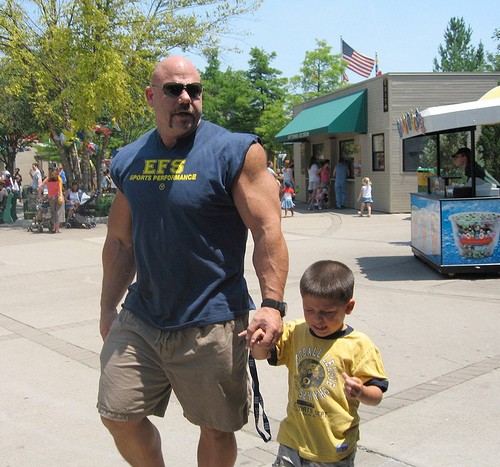
I will also go as far as to say that unless you have or care for a child with special needs, you have NO IDEA what the term special needs really means. You might think you do but trust me - you don't. Sit down with someone who has one of these kids and ask them to speak candidly. You will gain a MUCH better perspective of what this means.
Does this mean I feel having "special needs" means these children are "special" or better than others?
No, not at all.
ALL kids are special - they are our future!
There is nothing MORE special than our children, but some DO have needs that fall outside the normal spectrum.
Here a few tips that have helped me work on being a better parent.
- Learn all you can about sensory processing disorder. While this may not be the cause, there are several things that can make a big difference. Anytime you can learn more about how your child processes, the better. Simple things like pressure, spinning, bouncing, loading, straining, jumping, etc. can help to avoid or defuse a situation very fast.
- There is no point in trying to figure out what is making them, or made them, upset after the breaking point has been reached. If they are on the floor screaming in a fit, they have already forgotten what got them so upset in the first place. The more you probe, the more confused and upset you will make them.
- Regardless of how bad the situation is, let them know you love them but don't like their specific behavior. They need to learn that they are not their behaviors.
They are NOT bad kids,they are NOT Angry Birds, they are NOT confused kids, they are NOT crazy, they are NOT any of these "behaviors" – they are loved children first and ALWAYS.
- Determine what the problem is if they can't or won't do it. There is a big difference and if you take the time you will find out what they are really capable of. They can and will surprise you, but at the same time, never assume.
- Know when to fight and when to sit back. The school system, family and other outside factors can become VERY stressful. Most of the time, it's best to just sit back and keep your mouth shut, but when it does come time to speak, make sure you are heard and your point is clear. This is where effective communication is extremely necessary because there is no way to deal with this without emotion or take it personal. Practice what you will say, seriously.
There may come a time where you do need to be aggressive, pissed and emotional, but this is a card you rarely want to play and should only do so if it is the last option on the table.
- You will make mistakes. I can't begin to count the number of things I've done wrong, words I shouldn't have said, things I shouldn't have done, fights that could have been avoided, and frustrations that were blown way out of proportion. I can't go back and change any of these things but I can learn from them, move forward, and become a better father.
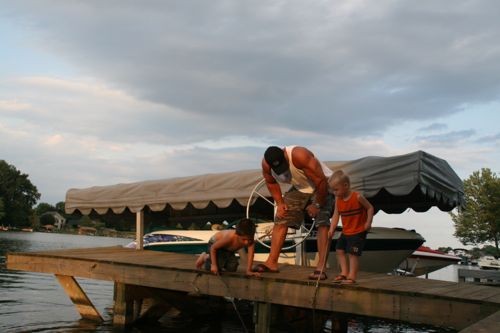
I have always refused to harp on any mistakes I've ever made (or will make) and will keep my focus on what is best for my family. This way, the next time I fail, I can get right back on track because isn't THIS the real lesson we want to teach our children? Isn't this what we want them to SEE?
Angry Birds knock things down but if you look closely, you will see the structure is rebuilt strong(er) when you move to the next level.
The birds don't do this.
The players don't do this.
It's all in the "programming," isn't it?
What lessons are WE programming with the examples we set?
I'm sure I could write hundreds of these but I will stop for now because I'm not sure I want to continue going down this road.
I've read many articles and books on autism, mostly by women.
I’ve spoken to many doctors, counselors, and teachers who were also mostly women.
I haven't seen very much written by men and even less written by meatheads.
ENTIRE SERIES
- Under The Bar: They are NOT Angry Birds!
- Under The Bar: They are NOT Angry Birds! pt.2.1
- Under The Bar: They are NOT Angry Birds! pt.2.2
- Under The Bar: They are NOT Angry Birds! pt.3
- Under The Bar: They are NOT Angry Birds! You Are the Parent
- Under The Bar: They are NOT Angry Birds! The Monster Within Special Education
- Under The Bar: They Are NOT Angry Birds! The Fight for Funding
- Under The Bar: They are NOT Angry Birds! The Holidays
- Under The Bar: They are NOT Angry Birds! Unleashing The Fury
- Under The Bar: They are NOT Angry Birds! Driven
- Under the Bar: Fathers and Children with Disabilities
- They are NOT Angry Birds! Normalcy?
I used to hate the term “special needs,” but now I can’t stand people who say they hate the term. FACT: My son has special needs.
As guys try to pull the barbell off the floor, I've seen everything you can imagine (shockingly from some of the top guys in the game). Sadly, the amount of potential wasted is grand. I would think to myself, "If only they did THIS…
If you follow these 14 tips, you may not have a perfect deadlift, but I can guarantee your deadlift will be better than it was.
1. Starting with the Hips Too Low
This is the king of all mistakes I see. Too many times, lifters try to squat the weight up rather than pull the weight. Think back to the number of times that you’ve seen a big deadlift and thought to yourself how much more the lifter could’ve pulled if he didn’t damn near stiff-leg it? I see it all the time. Someone will say, “Did you see his deadlift?” Then the other guy will comment, “Yeah, and he stiff-legged the thing.” Am I telling you to stiff-leg your deadlifts? No, not at all.
All I want you to do is look at your hip position at the start of the lift when you pull, and watch how much your hips move up before the weight begins to break the floor. This is wasted movement and does nothing except wear you out before the pull. The closer you can keep your hips to the bar when you pull, the better the leverages will be. Once again, next time you see a great deadlifter, stand off to the side and watch how close his or her hips stay to the bar throughout the pull. If you’re putting your ass to the floor before you pull, your hips are about a mile from the bar. You’re setting yourself up for disaster when the lever arm is this long. Consequently, this is the second most common reason why lifters can’t get the bar off the floor. (The first reason is very simple: the bar is too heavy!)
LISTEN: # 140 Travis Ortmayer | World's Strongest Man, Survivor, Texas Stoneman
You need to find that perfect spot—where your hips are close to the bar, your shoulders are behind the bar, your lower back is arched, your upper back is rounded, your belly is full of air, and you can pull toward your body. Nobody ever said it was going to be easy, but then again, what is? Definitely not training in a commercial health club...
2. Where to Look When You Pull
Your body will always follow your head. If you’re looking down, then the bar is going to want to travel forward. At the same time, you don’t want to look at the ceiling. Focus on an area that keeps your head in a straight, up, and back position, with the eyes focusing on an upper area of the wall.
3. Dimel Deadlifts
This exercise helped Matt Dimel increase his squat from the mid-800s to over 1000 pounds in a two-year period. To perform this exercise, grab a barbell with an overhand grip, hands about shoulder-width apart. Pull the bar up to a standing position.
At this point, arch your back and get your abs tight. Keep your back as arched as possible, push the glutes out, and keep the knees slightly bent. Lower the bar by pushing your body weight back onto your heels while pushing your glutes out. Try to lower the barbell to a position just past the knees. At this point, you should feel a tremendous stretch in the glutes and hamstrings.
4. Dumbbell Holds
There are very few things that I’ve found to work when it comes to helping with dropped deadlifts due to grip. Dumbbell holds, however, are one movement that’s shown great results.
Grab the top of a hex dumbbell, making sure that you don’t touch the numbers. Grab, stand, and hold for as long as you can. If you can go over 20 seconds, then up the weight.
5. Binder Clips
One easy thing that will help your grip for pulling is to use binder clips. These are the big paper clips that have a black end on them (and other colors). Use these like you would use grippers, but only use your thumb and little finger. You can work all fingers, but the little guy is the first to go.
Ed Coan told me this one a few years ago at the SWIS conference.
6. Get Strong(er)
If you drop your pulls, one solution is very simple—get stronger! Let’s say you always drop 700 pounds, but you can pull 650 pounds easily, and pulling 700 pounds with straps is no problem. Well, get strong enough to pull 750 pounds with straps. Then, 700 pounds will feel like 650 pounds.
7. Get Your Head Right
Training isn’t easy and won’t always be a walk-in-the-park. There’s more to getting strong than just lifting weights. You have to get an attitude with the weights and bust your ass. Louie once told me that he would NEVER train with anyone who didn’t scare him in one way or another. This is some of the best advice I’ve ever heard. I’m not saying that you should be a dick, but there’s a HUGE difference between “training” and “working out.”
8. Multiple-Rep Deadlifts
Next time you see someone doing multiple reps on the deadlift, take note of the form of each rep. You’ll notice that the later reps look nothing like the first. In competition, you only have to pull once, so you need to learn how to develop what’s known as starting strength for the deadlift. This is the strength that is needed to get the bar off the floor without an eccentric (negative) action before the start.
In other words, you don’t lower the bar first and then lift the weight as you do with the squat and bench press. When you train with multiple reps, you’re beginning to develop reversal strength, which isn’t needed with the deadlift. These two reasons are enough to keep the deadlift training to singles. If you’re using multiple reps with the deadlift, stand up between each rep and restart the lift. This way, you’ll be teaching yourself the proper form and developing the right kind of strength.
9. Not Pulling the Bar Back
The deadlift is all about leverage and positioning. Visualize a teeter-totter. What happens when the weight on one end is coming down? The other end goes up. So if your body is falling backward, what happens to the bar? It goes up! If your weight is falling forward, the bar will want to stay down. So if you weigh 250 pounds and you can get your body weight to work for you, it would be much like taking 250 pounds off the bar. For many natural deadlifters, this is a very instinctive action. For others, it has to be trained.
Proper positioning is important here. If you’re standing too close to the bar, it’ll have to come over the knee before you can pull back—thus, going forward before it goes backward. If your shoulders are in front of the bar at the start of the pull, then the bar will want to go forward, not backward. If your back isn’t arched, the bar will also want to drift forward. For some lifters, being unable to pull back can be a muscular thing. If you’re like me, I tend to end up with the weight on the front of my feet instead of my heels. This is a function of my quads trying to overpower the glutes and hamstrings, or the glutes and hamstrings being unable to finish the weight and shifting to the quads to complete the lift. What will happen many times is that you’ll begin shaking or miss the weight. To fix this problem, you need to add in more glute ham raises, pull-throughs, and reverse hypers.
10. Shin Placement
I’m not too sure where this started, but I have a pretty good idea. Many times the taller, thinner lifters are the best pullers, and they do start with the bar very close to their shins. But if you look at them from the side, they still have their shoulders behind the bar when they pull. This is just not possible to achieve with a thicker lifter.
If a thicker lifter with a large amount of body mass—be it muscle or fat—were to line the bar up with his shins, you’d see he would have an impossible time getting the shoulders behind the bar. Remember, you need to pull the bar back toward you, not out and away from you. So what I believe happens is that many lifters look to those with great deadlifts to see how they pull, then try to do the same themselves. However, what they really need to do is look to those who have great deadlifts and who have similar builds as them and follow their lead.
11. Pulling with Big Air
As with most exercises, you must learn how to breathe. Stand in front of a mirror and take a deep breath. Do your shoulders rise? If so, then you need to learn how to breathe. Learn to pull your air into your diaphragm. In other words, use your belly! Pull as much air into your belly as possible, then when you think you have all you can get, pull more. The deadlift isn’t started by driving your feet into the floor; it’s started by driving your belly into your belt and hips flexors.
One note on holding air while you pull: You do need to try and hold your air as long as possible, but this can only last for a few seconds while under strain because you will pass out. So for a long pull, you’ll have to breathe, or you’ll hit the floor... and people will stare. While there are several people out there who may think this is a cool thing, I disagree. It’s much cooler to make the lift!
So when you reach the point where you begin to really have to fight with the weight, let out small bursts of air. Don’t let all of it out at one time, or you’ll lose torso tightness, and that will cause the bar to drop down. By letting out small bursts, you can keep your tightness, continue to pull, and lock out the weight.
12. Rounding the Lower Back when Deadlifting
This is another mistake I see all the time, and most lifters know better. It happens most of the time because of a weak lower back or a bad starting position. Even though your shoulders should be rounded, you must keep your lower back arched. This will keep the shin straight and the shoulders behind the bar, allowing your body to be in the proper position to pull big while keeping the back under minimal stress.
If you pull with a rounded back, the bar is going to drift forward away from the legs—putting your back in a very difficult position from which to recover. When the bar drifts forward, the weight of it will begin to work against your leverages and cause you to have a sticking point just below the knees or mid-shin level. When you pull, you can either arch your back in the beginning standing position before you crouch down to pull or once you grab the bar. Either way, it’s important to keep the lower back arched and tight.
There are many ways to strengthen the lower back for this. Good mornings, Reverse Hypers®, and Arched Back Good Mornings are a few. You can also use a band around your traps and feet for simulated good mornings. With this technique, you only use the bands and train for higher reps (in the 20- to 30-rep range) for local muscular endurance.
13. Pulling Your Shoulder Blades Together when You Deadlift
This is a mistake I made for years. Stand in a deadlift stance and pull your shoulder blades together. Take a look at where your fingertips are. Now, if you let your shoulders relax and even round forward a little, you’ll see your fingertips are much lower. This is why we teach a rounding of the upper back. First, the bar has to travel a shorter distance. Second, there’s less stress on the shoulder region. It’ll also help keep your shoulder blades behind the bar.
14. Pull the slack out of the bar
Even if you are not using a texas deadlift bar, you still want to make an effort to pull the slack out of the bar before accelerating the bar to lockout. What this basically means is to begin pulling until you feel the bar get tight against the plates and begin to bend. Once you reach that point—where you feel the bar bending—THEN begin the pull off the floor, thinking of accelerating the speed more and more with every inch the bar moves.
Originally published in July of 2013
Dave Tate is the founder and co-owner of elitefts.com. He is the author of twenty books and has logged more than 40,000 hours of training and consulting. Dave is married to elitefts co-owner Traci Arnold-Tate, and they reside in London, Ohio, with their two sons. Personal Credo: Live, Learn, Pass on™.
His not-so-secret deadlift tricks and personal tips for fixing those bad habits. Insight from the man himself, Dave Tate.
When I first came to Westside, I was driving up on the weekends and training at the “Bingo Hall Location,” which was also on Demorest Road and, at the time, was a commercial gym. It wasn’t long till Louie closed that gym, giving half the equipment to a gym Matt Dimel Opened called MM Gym, and the other equipment (the PL equipment) moved to the Sullivant Location. I entered the picture full-time at that location but split my time between there and Matt Dimel’s place for several months. Limited at the time with what I could do in the gym because I was in a cast, Matt’s place offered me machines I could use.
The “Boxer in the Basement” gym is where I started training with Kenny, Todd, Chuck, and Joe. Our crew lasted through that location and continued lifting together at the Demorest Black Location.
Joe McCoy was there before me (the early ’90s - 01) and had two WPC World Titles. He lifted at Westside for close to a decade.
Todd Brock was also there before me, but he was in and out for years due to work. Despite this, his total time spent at Westside was over a decade.
Kenny Patterson began at Westside well before the “Paint it Black” gym, around ‘86 or ‘87, and was still there close to when the gym moved to Westbelt Drive. Kenny’s first meet was in ‘88, when he was part of WSBB. He stayed a part of WSBB until around 2002, holding about 15 years (or more) of experience lifting at Westside.
Chuck Vogelpohl was also there before me and was a part of why I ultimately went to train there. Chuck got there before Kenny (it may be as far back as ‘85). It is safe to say that Chuck has at least two decades of experience lifting with Westside and three decades of competitive experience. Chuck was there for all of the Westside gyms, from Louie’s Garage to the location the gym is in today; he lifted through it all.
I started coming to Westside around ‘91 and became full-time in ‘93. I ultimately left the gym in 2005, but this is the Westside that I remember.
Written June 11, 2019
While my memory isn’t what it used to be, I’ll write out what I remember. I started training at Westside Barbell when it was still a commercial gym. It soon moved to a crappy hole-in-the-wall place where a resident boxer lived in the basement. I called this gym location the “Boxer in the Basement Gym.” Soon after came the move to the “Painted Black Gym,” which got its name from the painted black window so nobody could see into (or out) the gym. The “Painted Black Gym” is probably the gym and time that Westside Barbell is most known for.
RECENT: Add 100 Pounds to Your Squat — 5 Seminar Takeaways
Only a handful of people were there to move into that gym and were still around ten or so years later when the next move happened. These people included those who were there training every session or every week: Louie Simmons, Dorris Simmons, Chuck Vogelpohl, Amy Weisberger, and me. Several others were there this entire time, but I can’t say for sure that they were there every session, every week, or every year.
My point is the active Westside Crew was not as big as many think. MANY would visit, many would move, stay a few weeks, and leave, and numerous more would spend their vacations there. Westside wasn’t a vacation, that’s for damn sure. You also had no fucking clue what it was like to train there until you were there a couple of years. After three years, I would say you knew what it was really like. Any less, and you “were not and wouldn’t be Westside to me.”
Look, I know I was one of the biggest dickheads in the place, and you will find few who disagree with that. This was because I knew why I was there, what I was giving up, and after a while, what Louie was working to build. I took — and still take — pride in this.
Westside vs. The World
I highly suggest you see this documentary. You can find all the info on the documentary and where you can see it HERE.
This is some of what I remember…
Last month, Louie asked me to write down some of my memories from the gym during my time there (the mid to late ‘90s). When I first came, it was a commercial gym, which then moved to the “Boxer in the Basement” location and finally to the place in the projects.
I won’t be posting these stories, as they will be for Louie, but I may drop an occasional one here and there in my blog because, as I realized as I took notes today, there’s a lot! I didn’t just train there; Louie was my direct training partner. I traveled with him to all the meets, seminars, and trade shows and broke him out of the hospital after his partial shoulder replacement. I loved and hated that fucker.
When asked about my time at Westside, what always comes to my mind first are the rules we had. Most were nothing new to me since the lifters and groups I’ve trained with my entire life had the same philosophies. But all of the ones I had prior weren’t as “real” as they were at Westside Barbell, and I loved it! Some rules were stated, but others were learned and done so quickly.
It was an easy place to visit, stay, and train for a week or two. Those who did this saw a small fraction of the training club atmosphere and shared several meals with Louie. They saw the outer layer of the club, and I am sure they had great vacations.
I have been to many areas of the Caribbean and loved my stay. But I also know that living there year around would be 100% different than my one-week stay by the pool.
Over 95% of those who came to train and stay didn't last one month.
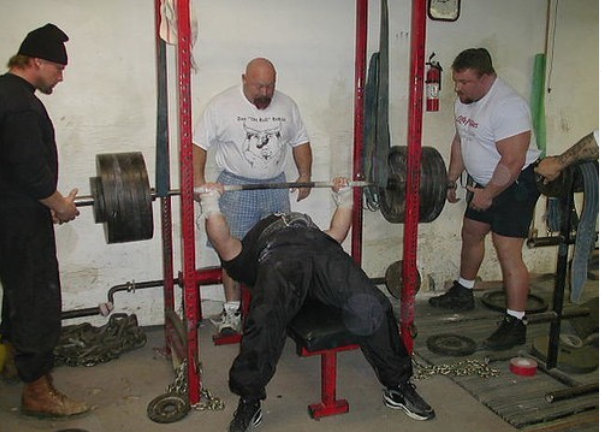
Some of the Rules I Remember
- Powerlifting had to be your No. 1 priority.
- Don’t miss sessions, EVER. Don’t be late, EVER! I saw and was part of kicking out lifters for those two.
- You compete or leave.
- Once you commit to the meet, you do it, no matter what. I never missed a meet and had many poor meets or bomb-outs because I lifted injured. Never back out!
- Make those less than you better than you
- Never sit during a dynamic squat or bench session
- Leave your drama outside the door. It took me years to discover that some of the guys I trained with were married. We talked shit, and we talked training. That was it.
- Go to meets to help your team and pay your own way there.
- ONLY enter the open division.
- Everyone trained the same lifts on the same day (except supplemental movements that were weak-point specific)
- Know the program
- There are an A.M. crew and a P.M. crew. No other crew. Train in one or the other — or not at all.
- Keep your hands off the board unless you were putting your name on it.
- No cameras.
- Make the gym better.
- If you get called out, step up.
- If your ego started to get the best of you, you would quickly be reminded to take it to the meet. In other words, shut the fuck up. It doesn't matter in the gym.
- Realize you don’t matter — your numbers do, and those are only as good as your last meet.
- Training hard was not expected. It was a given. If you couldn’t handle it, leave.
- Don’t be the one who worked the least. That would make you a “tweed,” and your exit would be soon.
- If you got on the cover of PLUSA, your lifting days wouldn't last much longer. Publicity was the kiss of death to a powerlifter.
- Stay out of the bullshit and let your lifting do the talking.
Some lesser-known items and ones that would not get you kicked out but were always noted:
- Do not get married — a spouse will fuck up your training
- Don’t bring wives or girlfriends to meets
- Don’t have kids (they will also fuck up your training)
- Don’t date strippers or use crack.
If you think I am joking, ask some guys from the ‘90s. They will tell you. Better yet, ask their wives or ex-wives. That would make a great reality TV show: The Wives of Westside Barbell.
I will be the first to say, while I was there, we didn't know what training "optimal" was yet. Louie learned what too much was from watching us (and from HIMSELF, as he was right at the top of the mix - in his 50s). Good or bad, it fits the group's mentality from the ‘90s, so maybe it was optimal for us. In time he did learn what was optimal for training, but admittedly I didn’t listen, and neither did most of the others.

While this should be hardcore, and I am sure many of you are thinking, “That’s exactly how a gym should be,” “This is how we need to be thinking,” and so on. Let me continue to explain and supply examples to provide context.
Here are some of the “cool rules” I got to see and be a part of. I think many will see that the image and bravado of these rules are not the same as reality. Remember that none of these rules were ever explained to you or posted on the wall. You had to figure them out on your own.
Here are a few of the many situations I saw and was a part of when enforcing these rules. These demonstrate the reality of Westside:
5 Minutes
I watched a Top-5 ranked training partner, who might have been on the board at the time — a person with the most explosive squatting strength and potential I had ever seen in my life, someone I liked training with and had fun joking around with and had been training with us well over two years — get tossed out of the gym for being five minutes late — ONE TIME.
"Hey, you know what time it is?"
“Yes.”
"You know we start training at eight o’clock."
“I'm five fucking minutes late.”
"Get the fuck out."
“Are you serious? I’m five minutes late.”
"The rest of us are here 30 minutes early. Get the fuck out."
“Fuck you and this gym.”
Training Differently
I was part of a vote to kick out someone who had more than ten years of experience training at Westside. He had started at Westside long before me, and the vote was called because he wanted to train his deadlift differently and would be traveling out of town to do so once a weekend (on a day we didn’t train) and wouldn’t be missing ANY of our main training days. The vote count was in, and he was gone. You were either Westside or not Westside. There was no "almost Westside" or "kind of Westside." It was all in or nothing.
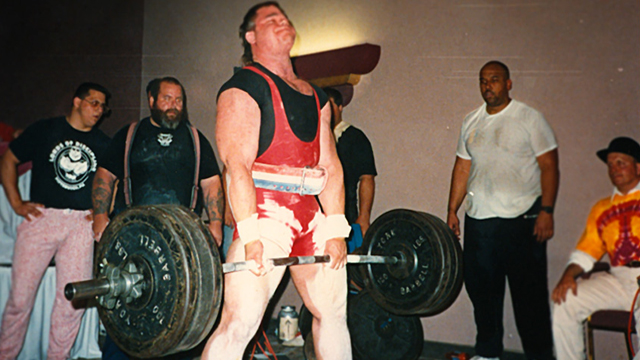
Bad Day
One day during max effort work, one of the B Crew Lifters, an 800-pound deadlifter (I say B Crew because he didn’t have his elite total yet, but was close), whose effort was not at 100% and was not “on point” (to our standard) got called out for it and didn’t back it up with the rest of his sets in training that day. Again, I was part of the vote, and another lifter with two or more years of experience at Westside was told never to return. All it took was one insufficient session, and this vote was unanimous because we all knew that shit could spread like wildfire.
This is the thought process behind this rule. If it's an A or B lifter, and the effort isn’t there, and they aren’t present enough to give their maximal effort on max effort day, it was seen as if they didn’t want to be there — they were on the edge of being out. It’s six to ten seconds of their life to do the lift — make it or not. If they can’t get their shit together for 10 seconds, they weren’t helping us. We didn’t train in a vacuum, so others saw this. What did those ranked under him think? Those who looked up to him? Those who were busting their asses that day to beat him? What did those listed over him believe? What did this do to the standard two decades of lifters set before us? In my opinion, FUCK THAT! There is no reason not to be able to pull your shit together for ten fucking seconds.
This stuff happens to all of us; HIS REACTION was the problem. Some dumbass excuse! If he was pissed off (I've had lousy max effort days that pissed me off until that same day next week when I made it right. By "pissed off," I mean bothered me every single day). We once had one that flat out said he lost his confidence. Who says that? In those cases, we busted their ass verbally — fiercely — and that's one of the many reasons I wanted to tear my car apart and destroy them all, as I was on the receiving end of this several times. We all were.
The issue here is that the lifter didn’t care, so why should we invest more time in someone who doesn’t give a shit when it’s one of our top priorities?
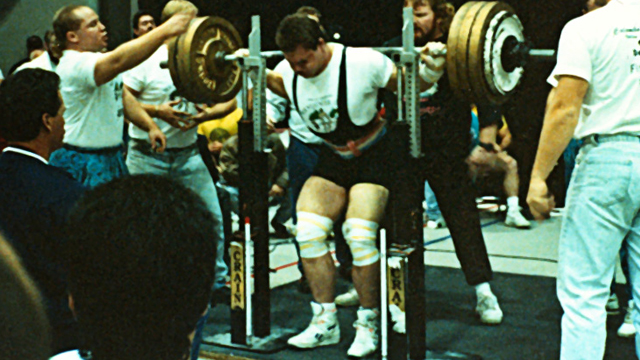
Helping at Meets
Many lifters who couldn’t make it to meets to help, for whatever reason, came to the gym that following Monday and were told never to come back.
Atlanta, Georgia, Texas, Florida. I was assigned to positions I wasn’t qualified for and to meets that were not on the list that Louie wanted me to do. I was broke AF and found a way to get there and back. It wasn’t easy. Once, it was a Greyhound bus, but there was no way I wouldn't be there to help and risk being tossed out.
Unless it was a meet Louie disapproved of, you could do it. You would be on his shit list, but NOBODY FROM THE GYM would come to help. You were on your own! I did this once and had to find a third party to help me lift in a friend's bench meet. I never did it again. It wasn't worth the bullshit.
Disrespect
Louie can be an asshole, and he’ll piss you off. He WILL get into your head, but one of the fastest ways to get your ass kicked out of his gym is to disrespect him. Talking shit and busting balls is one thing, but disrespect is another. If you don't like anything about him, you take it up with him or keep it in the gym. If you talk that shit outside of the gym and think you will stay, you’re wrong.
He wouldn't toss you out; we would. If you did this in front of others in the gym, there was a good chance you would not only be asked to leave, but you'd end up being physically tossed out the door.
To be honest, I could write more examples — an entire book of examples. The rules look good on paper, but it's another thing to live by them. I saw Westside was selling a poster some time ago of Louie's rules — many of the ones I covered were on there; there were others I forgot. All I thought about when I saw that was the number of gyms that were going to buy it and hang it up because "it's real," "cool," or "the way it should be." Yet I would bet not a single one will enforce any of them. It will just be a cool poster on the wall.
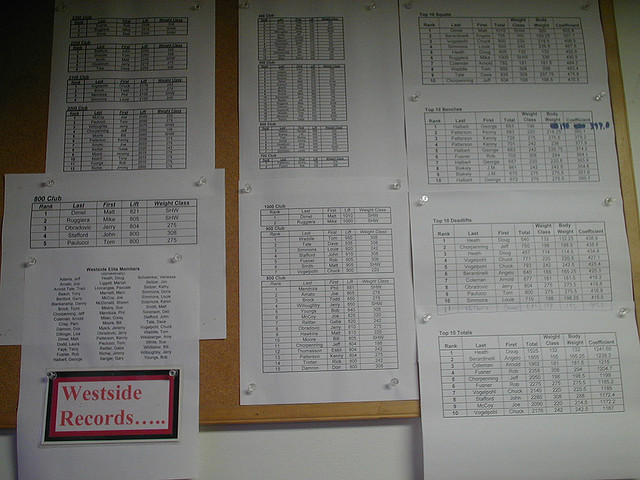
We didn't have a cool poster on the wall. We had these rules you had to figure out on your own that had severe consequences. Few lifters who ever trained in those four walls while I was there were never asked to leave or kicked out. VERY few. I am one of a small number, and I KNOW several votes were taken about me. Some of the club's biggest names were kicked out at one time or another. Fortunately, most of them made their way back. I am not sure if they were better or worse for it, but their numbers kept going up.
A lot of the time, it sucked, but in a fucked up way. I liked it; I liked the challenge Westside presented. I spent my entire gym life working to be the top dog in a gym and then find a stronger one and do the same. I knew when I ended up at Westside Barbell I would never be the top dog. Too many years, too many injuries, maybe because I didn't believe I could. I DID know I could outlast everyone. While I did fall short on that one, it was not because of my will or effort. My body couldn't take anymore, and I could no longer give the gym what it was built on — NUMBERS.
If I couldn't put up the numbers (my best or better), I was doing nothing to help the gym within those four walls. I did last well over a decade, which is FAR more than most, and while I wasn't done on my terms, I was not kicked out. Only those who have trained there for over a few years know how rare that is. Then again, maybe I am looking at this wrong because far better lifters than I were asked to leave.
Big Takeaway — Not to be Missed
Don’t get me wrong. I do not think anyone who trained there looks back at their time at Westside with ill will. There was far more good than bad, but I have never pretended it was easy, and I think it would be a disservice to paint a picture of all blue skies when it was cloudy, raining, or storming like hell most of the time.
We just learned to dance in the rain and live in hell if we had to.
I can’t begin to count the number of times I left that place wanting to tear the steering wheel of the dashboard and beat Louie, or many others, over the head with it. I'm not talking mad — I’m talking full-on pissed off!

I also knew every exit from my house to the gym (a 30-minute drive). I knew them because many days, I wanted to return home and not have to deal with the shit anymore. Not just the mental shit but the physical shit as well. It took me years to learn to deal with the mental game, play it, and master it, but it wasn’t easy. The physical part was also on me, as in my mind. I was already on borrowed meathead time before I got to Westside Barbell due to accumulated injuries. I had to learn and master the culture quickly because I wanted to become the best I could in the time I had left and not leave the sport asking, "What if?"
The professional side of me wanted to learn all I could from Louie Simmons. He earned my respect as a kid for taking the time to help me. Later, when I saw his knowledge and wisdom first-hand, I was amazed and wanted to know all he did. I had breakfast with him when I could afford it, and work allowed it. If we traveled to a meet, seminar, consult, or anywhere that allowed me to ride with him, I did. I am willing to bet that, after his wife, I have spent more time in the car with him than anyone else, ever.
Do you know what he talked about? Training! Always training!
I have posted this before, but I think it’s fitting to provide more context in this article on the time and changes happening around us.
For reference: in 1990...
- Milli Vanilli got busted for lip-syncing.
- Home Alone, Ghost, Pretty Woman, and Total Recall were popular movies.
- Friends, The X-Files, and The Fresh Prince of Bel-Air were among the most popular TV shows.
- I was using a beeper for work.
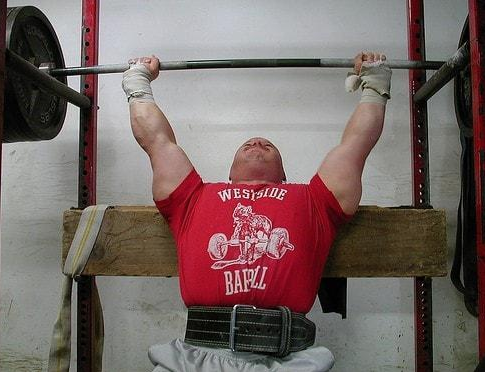
Westside Training Over the Years: 1992–2004
I can’t tell you what’s going on at Westside today. There are only a very small handful of people who can do that, and those people train at Westside Barbell.
What I can tell you is what I saw during the time I was there, from the early ‘90s to 2005. To list every change I remember in detail would take a book. However, I can list several things as I remember them and see what happens.
In short, and in no specific order, here are some of the changes that I saw:
- Bands were added.
- Chains were added.
- Weight releasers were added.
- Board presses were added.
- Floor presses were added.
- Dynamic effort cycles went from five weeks to three weeks.
- Max effort work cycled from three weeks to one week.
- An assload of new special exercises were added.
- The reverse hyper and glute ham raise became huge (from one day per week to 5–6x per week in some cases).
- General Physical Preparedness was added.
- Trap bars, dips, and overhead work were canned.
- Kettlebells were added.
- Stability balls were added.
- Mantarays came and went.
- Cambered bars were added.
- Dynamic effort work with safety bars was added.
- Lactic acid tolerance training was added.
- The Lightened Method was added.
- We moved gyms three times.
- The belt squat became a machine instead of a huge box with a hole in it.
- The sled mill was added.
- If you didn't work hard, you would be tossed out.
- Sometime after 2000, we started to implement powerlifting gear into the training.
- Powerlifting gear improved.
- I remember the GREAT day when the monolift was added — no more taking the weight out of the racks at Louie’s height.
- Circa maximal phases were added.
- Recovery became more important.
- Restoration sessions were added.
- Extra workouts were added for weak points.
- We became better at figuring out how to overcome sticking points.
- The 45-degree back raise was added.
- The back attack was added.
- Members came, and members went.
- It was always required that you help at meets.
- Suspended max effort work was added (concentric only).
- Teaching became a big part of the process. At one time, we had four guys writing articles and three doing seminars.
- Single leg work came and went.
- Standing ab work became vital.
- Louie came out of retirement.
- The record board began to change at every meet.
- The club's “top” list got very freaky and keeps growing today.
- We tore through four to five stereos.
- Fat bars were added.
- Percentages for dynamic work were lowered.
- If you were late for training, you could be kicked out.
- Grip work became more important.
- Timed work was added for recovery.
- Max effort waves that built on each other were added.
- We were tough on which max effort movements tested our strength and which ones built our strength.
- Weak point analysis was based on technical performance more than structure.
- Heavy ankle weights were added for GPP work.
- Weight vests were added for GPP work and sled dragging.
- Wheelbarrow work was added for GPP work.
- Speed training rest periods were slightly increased as band tension got heavier.
- Band tension was taken to extremes and then lowered somewhat to fit each lifter.
- Lat work for many of us dropped in daily volume but was done four days per week. For me, I had two row days and two pull-down days.
- Speed pulls were added after speed squats.
- Speed squat cycles changed and advanced with each meet, based on the results that the last group had.
- Technique remained the most important variable.
- The new guys never made the same mistakes we did, but they made their own. This is the progression of success.
- The roller hyper was added to the mix. This gave us a different way to do hypers and added variety and sessions per week.
- The plyo-swing was added, offering a way to build greater explosive strength.
- Decline max effort work came and went and then came back again.
- Belts squats were used more to unload the spine.
- Your feelings didn't matter; your total did.
- The Tendo unit was added. However, it told us what we already knew, so it was only used sparingly for testing. Having the device on made many lifters too concerned with what the machine read and distracted them from actually doing the lift. I was one of them.
- We were taught that we were only as strong as our weakest guy, and it was our job to make him better. The exact words used were more like, “Stop bitching about how weak he is and make him stronger. He’s weak because you suck as a training partner.”
- Strapped-up good mornings were a disaster.
- Although weight releasers were used sparingly, they gave very good results when used correctly.
- As the gym became more popular, the door was always open for coaches and lifters. The entire time I was there, I met close to 100 coaches and only saw three of them train or even try a movement. I met with even more lifters and never saw any of them train.
- Louie pissed me off well over twice a week, and if I did my job, I pissed him off more times per week than that.
- Louie would tell me the same damn thing 101 times and would finally stop when I did it on the 101st time. It was really what I needed to do in the first place, but I was too ego-driven to do what I sucked at. Some coaches think they have a hard job. Try walking into Westside and teaching those guys what to do! There’s only one way it will get done, and it’s by earning their respect “under the bar.”
- After 10 years, I finally got through one session without hearing AC/DC.
- Ultra-high reps were added for recovery—reverse band presses for 100 reps.
- Timed good mornings (five minutes) were added for a short time. THESE REALLY SUCKED.
- Timed dumbbell presses lasted longer.
- Just because they’re in the videos doesn’t mean we did rolling dumbbell triceps extensions for eight sets of eight (20-second rest) twice a week every week of the year.
- Doing 100 rep band pushdowns with the light (purple) bands for extra workouts twice a week makes a huge difference for many lifters.
- Floor presses with chains were added.
- The chain bench press was added (work up to 50 percent and add one chain per set until you max out).
- The front squat harness broke and was never replaced. Squats and pulls still went up, and our balls were saved.
- We discovered that you have a better chance of getting injured with triples and fives than with singles.
- Dynamic squat (speed squat) training evolved to include other bars outside the straight bar. These included cambered squat bars and safety squat bars.
- Dynamic bench work also evolved to include cycles of speed work on the floor, off low pins, and off boards.
- Bungee cords didn’t work as well as bands.
- The gear got better (bench shirts and squat suits), so training had to change. The strength work didn’t change, though, because the program was designed around getting stronger in and out of gear. However, the new gear added a new skill aspect to the sport. We added in some sessions just to get used to wearing the gear, but this didn’t happen more than four to five times for each meet (at the most). This may have changed since I left the gym, but I doubt it.
- More warm-up sets were added for each lift. You didn’t work up until you were ready.
- More control on max effort work was added. By this, I mean that smarter decisions were made. In the past, we just said screw it and loaded the bar whether or not it was a good day or a bad day. This is one thing that I feel has helped the newer guys stay healthier than we were in the past.
- Toward the last few years, if we felt beat up, we rested and just did supplemental work. This goes along with the previous point.
- Most speed pulls advanced into speed pulls with one or two double mini bands.
- In the beginning, all max effort work for the lower body was done raw, and we used to bust the balls of anyone who tried to use gear— even a belt. In time, the belt and briefs were used, and we were healthier because of it.
- Most people who think they can last there never will, and those who think they don’t belong will become one of the best. This will never change.
- All of us used to do the same max effort work regardless of what we wanted to do. When the gym moved, we did the things that we needed to do and not so much what everyone else was doing.
- Supplemental work became extremely important as time passed, as we all began to see what Louie had been telling us for years. As I like to say in seminars, “You can either train a lift or build a lift. The choice is yours.” Supplemental work builds lifts.
- Hamstring work is HUGE, but we never did Romanian Deadlifts or stiff-legged deadlifts. Hams were built using glute ham raises, pull-throughs, banded leg curls, squats, and pulls.
- Supplemental work was waved based on individual needs. At first, we just did what we did. In time, we stayed with one movement until it stalled and then moved on. In many cases, we knew what we needed to do, but we weren’t conditioned to do that movement. We would have to use other movements to build up to the movement we really needed to build the lift. For example, if I needed to do hanging leg raises so that my toes touched the bar, then I had a problem if I couldn’t do one. I would have to start with other stuff, such as pillars, knee up leg raises, and eccentric full leg raises, to work up to full hanging leg raises. We used and created many supplemental progressions like this. The same concept was also applied to many of the max effort movements differently. In this case, we would take what we were doing and what was working and find ways to make it more taxing and difficult progressively.
- From Day 1, every movement had a reason, or it wasn’t done.
- As benches got bigger, upper back work got more important. In many cases, it was done four times a week (dumbbell cleans, face pulls, and seated high rows).
- What I call “coaches” were created at a faster rate. When I first got to Westside, it took time to learn what was happening (how the training worked and what technical flaws to look for). Louie would point things out to us repeatedly until we began to think and notice new things on our own. We had a group of guys who trained together for a very long time, took it all in, and worked very hard to help each other get better. Many weak points were addressed and overcome. When new people were brought in, we quickly showed them what to look for in us so they could help us get better. Louie has always said, “We knew what Westside could do for them, but what would they do for Westside?”
- The learning curve got shorter as we became better teachers. When I speak to Louie, I see this curve getting even shorter (and quicker) with the newer lifters. What used to take a few years to do in both teaching and under the bar is now being done within months.
- When I first got there, most (but not all) exercises were standard. They became more specialized as needs changed.
- If you were not helping others, you would get kicked out.
- I’m very fortunate to have come to Westside when I did. Louie had already suffered many injuries and mistakes. By the time I got there, he had a hell of a lot figured out and had two decades of champions to back it up. I came in at a time where experimentation and learning were at an all-time high (at least this is what I think — Louie was doing it for years before I got there). He was getting the guys who were willing to try more new things to get better. At the time, Louie wasn’t training very hard, and I would venture to say that he was retired. Then one day, something was said to him: “Old man, you will never have 700 pounds on your back again.” That day was a huge turning point for Louie’s training and for the gym. In time, Louie kicked all of our asses in the gym (this is seen in many of the videos) and made a huge comeback. This gave us instant respect for him. Before, we had listened to what he said or did what he told us to do, but now we actually SAW what he had been telling us.
- Everyone who stayed and could last at least one year put over 100 pounds on their total.
- It’s a whole other ball game when you actually SEE what Louie says works, and all of a sudden, you believe it will also work for you.
- With each move, the bathroom got better.
- The last place had a garage door, making it easier to get more equipment in.
- It’s important to note that the training was and always is evolving. New things were added and tried. Some stuff worked, and some didn’t. The old stuff worked for us the same way it would for you today, but things only work for so long before you have to find new ways to advance. In many cases, the old things are what advanced us to the new ones. They are what prepared us for the new stuff.
- If you felt you were more important than the gym, you would be kicked out.
Before Westside, I was lucky to make four to five changes to my training in a year. I used the Western method of periodization and progressive overload. I changed what I could, but there were no checks and balances to work with as there were with Westside training. I didn’t have max effort work to gauge my progress or videos to show me how my bar speed was looking. My focus was simply on making everything stronger and bringing up my weak points. Training is more complicated than many make it out to be, but it’s still simpler than some think. The key is to understand the methods and use them to the best of your ability.
The gym was getting smarter — at one point in time, George Halbert, Jim Wendler, JM Blakley, Louie Simmons, and I were all writing articles for magazines. This is a testament to Louie Simmons, as he was teaching us all to teach others. We were not the only ones who understood the programming and training. MANY others in the gym could have also written articles but were in different careers.
Almost all of us got better at our chosen jobs or professions. The skills and lessons learned at Westside made us better at our jobs, businesses, and lives. This is NOT to say that putting it as our first priority didn’t have damaging effects. It did, and for many of us, they were bad, others worse, and for a few, it cost them everything. Many of us will pay the piper for the rest of our lives.
Here is a conversation I had with Kenny Patterson about our time at Westside. Kenny was there for 14 years, and we had 10 years of training together that overlapped — all during out time in the morning crew.
Since this has become a long article, I will add this excerpt from My Iron Evolution Series written for T-Nation.com.
The Mental Aspect of Westside Barbell
Over the years I was at Westside Barbell, many things changed that will go far beyond the scope of this article. The gym moved three times, it got smarter, more advanced, innovative, stronger, and better. Much better.
Though the key principles remain unchanged, I know things at Westside continue to evolve and improve. I'll only present what I was there to see, learn, and was a part of (1991-2005).
I can't tell you what's going on at Westside today. There are only a handful of people who can, and those people train at Westside Barbell. Anyone else is bullshitting you.
The Other Big Three
I've learned more from my time at Westside than any other period in my training life. There's no way one installment could do it justice. I also doubt anyone wants to read an article of Dostoyevsky-type length, although Crime and Punishment would be an appropriate subtitle.
To that end, the Westside period is going to be divided into three parts, after the three areas that must be accounted for in your training to avoid getting stuck: the physical aspect (what most are familiar with, including, but not limited to: the Repetition Method, the Dynamic Method, and Max Effort Method), the technical aspect (exercise technique, arguably the most important), and the rarely talked about mental aspect.
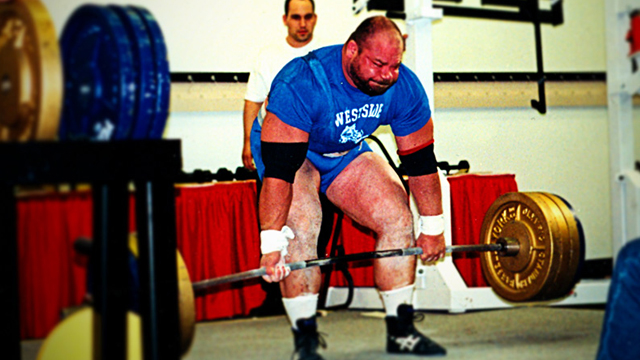
What is the Mental Aspect?
I often meet young lifters at seminars who are fascinated by Westside Barbell. They've read the articles, watched the videos, and have structured their training to best match the principles Louie presents in his Westside DVDs and certification courses. "I'd give anything to train at Westside," they gush.
I do my best to encourage them, but I know most wouldn't make it.
If Westside Barbell is anything like what I experienced, 90 percent of these lifters won't last a week. They might be able to withstand the physical pounding, but the mental stress would chew them up and spit them out.
Here's a test I use:
Young lifter: "I'd love to train at Westside."
Me: "If it were a perfect world and you could move to Columbus and train at Westside for three months, do you think you could put 50 pounds on your bench?"
Young lifter: "Absolutely!"
Me: "Then why don't you bench that now?"
That's the mental part. That's how I know they wouldn't make it. All the info is out there, between the Internet and certification courses and videos. But they focus on what they don't have, which is the ability to train within those four walls. That's how I know they don't want it.
That's how I know Westside Barbell would crush them.
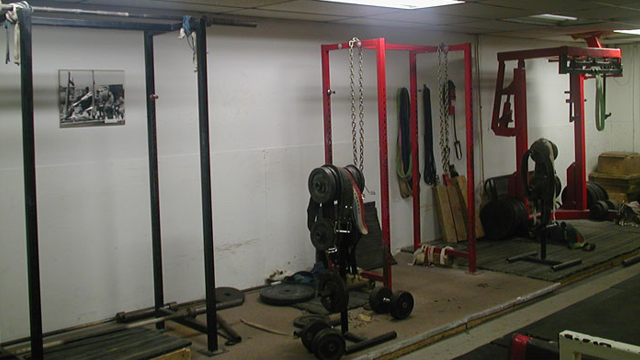
Humble Beginnings
One of the last times I spoke with Louie before packing up and moving to Columbus was right after I tore my pec. "You're going to be out of the sport within a year if you don't change your ways," he said, and it stuck with me. I was going nowhere anyway. What did I have to lose?
Yet it should be noted that I wasn't a Louie Simmons disciple when I arrived at Westside Barbell.
I studied exercise physiology in college and read countless journals. I was strong, experienced, and not easily fooled. Louie talked about speed and dynamic lifting, and none of it jived with what I'd learned.
My earlier impression was that Louie talked a good game but was basically full of shit. I always thought there was some secret method or routine that Louie kept under wraps, and all this speed shit was just to distract the competition. I wanted to find out what that thing was.
When I showed up, Westside was in the process of changing from a commercial-type gym to a private powerlifting club. Louie had sold all the machines to Matt Dimel and took just the powerlifting essentials to a rat hole in West Columbus.
To say this place was a dump is an understatement. There were holes in the floor, and the ceiling leaked. As I recall, there was even some dude living in the basement.
I was just a few days post-surgery and still in a sling. I was stuck training on the machines at Matt's place and doing physical therapy, so all I could do at Westside was spot. That sucked. My weight tumbled from 270 to about 240 before I was finally cleared to lift at Westside.
The gym moved again only a year or so later to a much better place, about twice the size; it was better organized and had no holes in the floor.
This would be my home for the next decade.
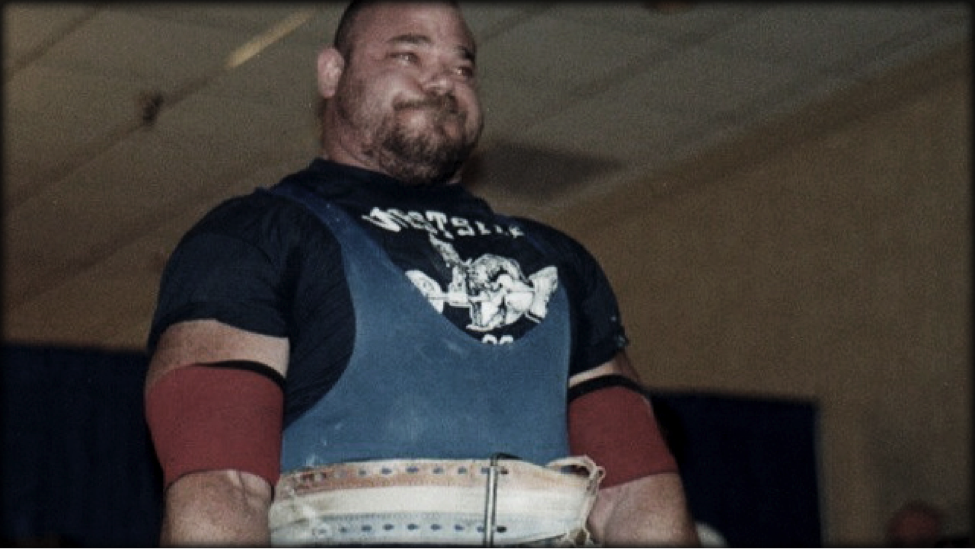
The Louie Simmons Skeptic
Louie's guys trained in the morning or in the afternoon, but being a Louie Simmons skeptic, I opted to train with a small crew at around 1 p.m. I followed my progressive overload program, did a meet, and put maybe five pounds on my total. Progress, sure, but five pounds? I wasn't impressed.
I told Louie as much, and he started busting my chops again about not following his methods. He'd been after me to train his way with the morning crew since I'd arrived, but it didn't fit with my new job. And I certainly didn't see his system as something I should turn my life upside down for.
Louie was persistent until finally, I snapped. I told him that I didn't think his methods would work for me, and just to prove it, I'd quit my job and start training his way — and when I didn't do shit at my next meet, it would be his fault.
Well, that's how I figured it out.
I started training with the morning crew. I followed everything he said. I did a meet and put over 200 pounds on my total.
That's when I realized that the last 15 years of my training and education were bullshit. All the classes I took, the seminars I attended, the coaches I spoke to, and my time in the gym educated me, but it didn't make me the expert I thought I was. What it did do was put me in a position to really learn my trade. My education was about to begin.
Mecca of Powerlifting
Guys online have almost mythologized Westside. People call it the "Mecca of powerlifting" and "the place every powerlifter should aspire to be."
I agree. It is the Mecca of Powerlifting and what I consider to be one of, if not THE strongest gym in the world — but the place wasn't Muscle Beach. It was brutal, both physically and mentally. This is part of what made it work for me.
Guys training at Jerk Off Fitness might not understand this, but when you train at a place like Westside Barbell, there's an enormous amount of pressure. The stress of the weights is one thing; the stress of having the strongest guys in the world expect you to keep up or surpass them is overwhelming. If it's not overwhelming, you're definitely not a good fit for Westside — you expect far too little of yourself.
Becoming exceptional at anything requires commitment, discipline, and sacrifice. At Westside, that gets you in the front door — maybe. To survive at Westside, you must match the level of dedication and sacrifice of the rest of the crew. This alone was a huge challenge. While we did have some "normal" people in the gym, we also had several who bordered on insane. You had to bring yourself up to another level, or you'd get run over or run out.
Responsibility
When Louie told me after I tore my pec that I could be better, it wasn't a vote of confidence he was giving me, but responsibility — responsibility to be better, and if I was going to make it at Westside, I’d better get better.
Louie made me expect more from myself than anyone else. He made me believe that I should be the strongest squatter in the gym, and when I wasn't, the frustration drove me deep into a part of myself that only elite athletes can relate to.
I was told that my potential didn't mean shit unless I realized it, and making that happen was 100% my responsibility. The word “potential” may sound positive, but to a coach like Louie, potential meant, "What's holding you back from being great?"
According to Louie, I was also responsible for making everyone on the team better than me. With most powerlifting clubs, there's usually one King Pooba. It's everyone else's job to make sure Pooba has a good lift. They carry his bag, wrap his knees, and load his weight – it's seen as paying your dues.
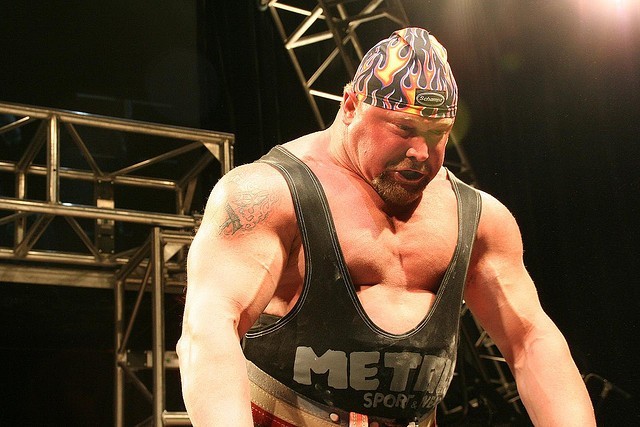
Not at Westside. Our job was to make every other lifter capable of beating you, even if it meant helping the new guy who'd eventually erase your name off the board. It didn't matter if you didn't like the guy — it was your job to make him stronger than you. Then after he beat you, it was his job to make you better than him.
When one group would squat, no one else would do a thing. Say you have 12 guys in the morning crew. Two or three guys would squat, three others would spot, and the remaining eight would coach, yelling cues like "head up" and "knees out." Then we'd all split up and do our accessories.
If you were lifting, all you had to do was lift. You didn't have to change the box, monolift height, look at the clock — nothing. Your job was to squat and give all you have doing it. There was no bullshit chatting; it was about building a better squat.
This created an environment where every time you hit a sticking point, you'd have a dozen guys trying to come up with solutions. Having other strong guys looking for ways to make you strong is better than just tinkering alone. There’s also an ungodly amount of pressure because now you're accountable to those guys to get better. And you better improve.
For me, the issue was always ab strength. So after the main lift, I'd have guys barking at me to do abs with them, and when one of those guys is someone with ridiculous work capacity like Chuck Vogelpohl, you got smashed. Or you got better.
That's why when one of us broke a world record, it wasn't just the guy under the bar that felt pride. We all did because we all worked for it.
Tension
There's obviously a massive downside to this kind of pressure. If you let any stress get to you, it could rip you to shreds. Louie warned us not to let powerlifting be our entire life, but for many of us, it was.
At times, the tension was ridiculous. You're crammed into a small room full of huge guys, all on edge, a second away from exploding. I've seen fist fights during speed bench day, plates get thrown around, and countless uncomfortable heated arguments.
But the training never stopped. Ever. Guys would be at each other's throats on Friday, but we'd be back on Monday because that's when we squatted.
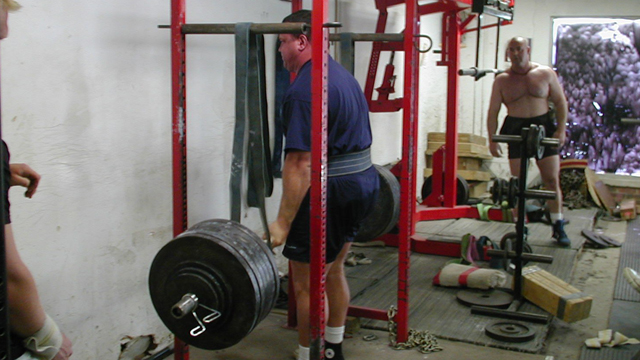
Every gym has drama. We were conditioned not to give a fuck. I trained alongside some people I'd never associate with outside of the gym, but within those walls, they pushed you to get better, and you’d do the same for them. I still have no idea what some of the guys I trained with did for a living. Hell, some I only know by the nicknames we'd given one another. In the gym, we were all the same.
When someone wasn't holding their own, we’d let them know. I'm not talking about the lazy slackers in commercial gyms sitting on the leg extension reading the paper. I'm talking about guys who didn't bring their balls to the gym that day. The ones who weren't willing to push past what they were truly capable of.
Discipline
You weren't allowed to be a pussy. That's where the real mental brutality was.
Louie was the master of finding ways to motivate you. Often he'd tell another lifter that I was going to do shit at an upcoming meet, knowing that lifter would repeat it to me.
I'd get pissed off, but what was I going to do? I could get angry, but the only way to shut him up would be to get stronger. Looking back, there were numerous times when my forearms would cramp up driving home because I was trying to rip the steering wheel off.
Louie would find ways to fuck with you, get under your skin, or use other lifters to mess with your head. The result? There was a meet where our top bencher forgot his shirt. That would've knocked most lifters entirely off their game, but he just borrowed another shirt and benched—no big deal.
Miss my opener? Big deal. Put on 40 pounds. I'll get it.
Nothing could happen at a meet that could compare with what we dealt with at the gym. A guy blew out his knee? Unwrap him and roll him out. It's my turn to squat.
Guys grew to need this mental trauma. They thrived on it. I remember one guy doing Max Effort bench work. He'd worked up to his max and missed, but no one said anything. This enraged him so much that he got up and started ranting.
"I just missed my lift, and none of you guys said a thing!" he yelled. "You guys don't even fucking care!?!"
I knew what to say.
"No one said anything because your bench is shit. Because your triceps are shit. And until you get some triceps and some balls, your bench will always be shit, so we quit caring, and we quit talking about it."
He was about to explode. "I train triceps all the time," he screamed, to which the whole gym laughed.
To the outsider looking in, it would've looked like a scene from an insane asylum — or a prison yard. We were just giving him what he needed.
Brutality
Although I acquired most of my injuries before I arrived at Westside, there was no room there for being hurt. We created an environment of 100 percent balls out all the time. No deloads, no easy days, no quit. If it hurts, wrap it. If it's heavy, fuck you, and pull harder.
I can't blame Louie for this. I couldn't count the number of times he told me to back it down, only to see me add another 40 pounds and blow my nut sack off.
We never gave each other a free pass, especially on Max Effort lower body day. We never knew what movement we'd be doing but always knew the goal – to strain.
We'd start at 8:30 a.m. If you were late and Louie still allowed you to lift, you jumped in at whatever the weight was. If 405 was too heavy to open with, fuck you. Next time, don't be late.
For that reason, we'd always get there early, arriving at about 8 a.m. to eat McDonald's and drink coffee. During that time, we'd ask one another what lift we wanted to train that day. No one would agree on anything until finally, someone would roll in limping and say, "I don't care what the hell we do, as long as it's not low box squats. That would kill me today."
There. It was decided. Today we'll do low box squats.
We were lifters first. We trained Monday, Wednesday, Friday, and Sunday morning. Always. No exceptions. If you had a meet on Saturday, you lifted Monday, just maybe a bit lighter. Christmas, Easter, or Thanksgiving, it didn't matter. If it was one of those days, you trained. And you strained.
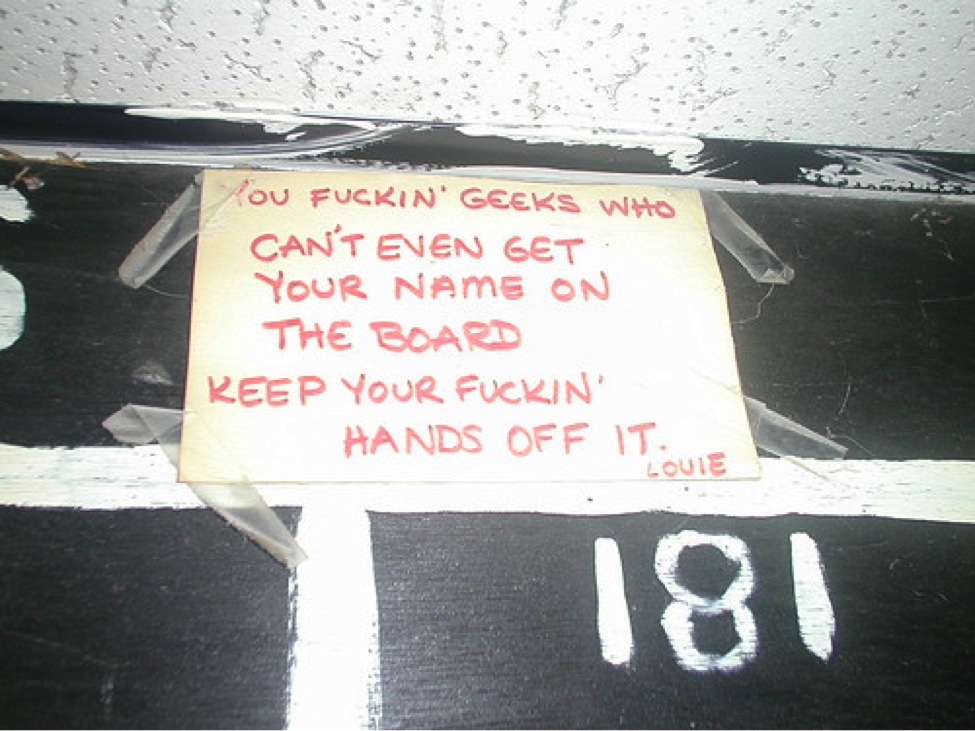
The Board
The ultimate goal of everyone at Westside was to get on the board. It meant more to us than a world record. It pushed you to do better, to join the elite. But as it was written in chalk, it could easily be erased. There was a reason for that. Anyone could erase YOU. Getting up there only meant that now the crosshairs were on you.
Today, the numbers on the board are ridiculous. 2,700-pound totals. 1,200-pound squats. Those who visit see it as "an amazing record board," but to the guys training, it's their reason for lifting. No lifter at Westside was better or more important than another, so every lifter believed they could get up on the board – and knew they'd help another lifter get up there.
Louie had many systems like the board. Every Sunday morning, we'd meet for breakfast at TJ's before heading out to a small garage gym to bench. The catch was that you had to either have totaled elite or benched 500 pounds to get the invite, and the lifts had to have been performed at Westside. My pre-Westside 500-pound bench was irrelevant, so I wasn't allowed to join them.
Again, I was pissed. I deserved to be there, and Louie knew it. It motivated me to train harder, so I could bench 500 again and eat and lift with the Sunday guys. Before long, I got to where I and Louie knew I should be.
Louie's Mental Strength
The fact that Louie was right in there, lifting and straining with us, was hugely motivating. When I first arrived at Westside, Louie was retired. That is, until Kenny Patterson said something during an argument like, "What do you know, old man? You'll never have 800 pounds on your back again."
That was it. Suddenly, a then 50-something Louie Simmons was right in the middle, lifting with us. That was motivating enough, but when that old guy starts beating you, the respect level climbs another notch. Louie Simmons possesses a level of mental strength that is unmatched.
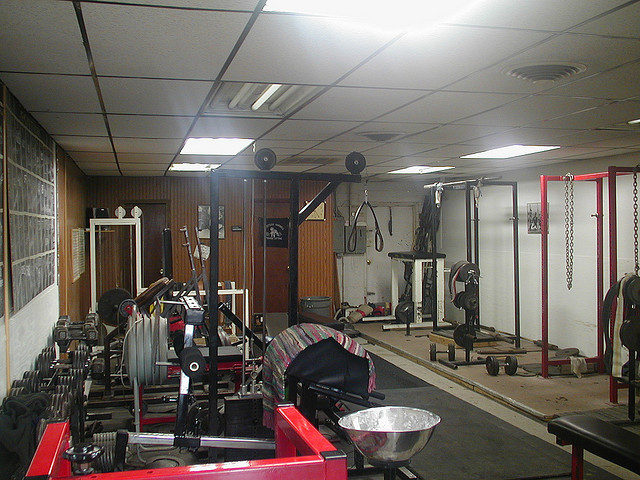
What I'd Change Mentally
As stated, Westside Barbell is constantly evolving and improving. Since my time, they've adapted and changed for the better to keep churning out the strongest lifters in the world, but I can only comment on what I'd change during my time there.
I'd Train Smarter
I tore up my body primarily in my pre-Westside days, but I still would've backed off a bit more while training there. There was no room for being a pussy, but that mentality eventually catches up to you.
I think the current permutation of Westside has moved in this direction. Again, it's purely speculation on my end, but I don't see the frequency and severity of injuries I did during my years there.
I'd keep Zippy out of the gym.
Zippy was the name given to my competitive lifting alter ego. I'd do a set of 455-pound squats that would feel heavy. I'd flip a switch, and Zippy would come out – I'd kill 455 and demand more plates be put on.
All Zippy wanted to do was strain. My back would rupture, and my knees would blow out before Zippy would accept missing a lift.
Zippy was a fantastic tool, but I should've saved him for the meets. Louie frequently reminded us of the vast difference between a competitive and training state, but I rarely listened. When training in an environment like Westside’s, every lift had the pressure of a meet. I let myself become a hyper-aroused competitive lifter far too often when I should've just been a calm, focused (sane) lifter. And I missed many lifts because of it.
Final Thoughts on Louie
Even though I'm long removed from Westside, I'm reminded of Louie's brilliance every day. He didn't invent speed training or the conjugate system – nor has he ever claimed to have invented them – but he made sense of it and put together a cohesive design that delivered results.
The Creator, Not the Recruiter
Westside Barbell has a reputation for recruiting already good lifters. This train of thought ultimately diminishes Louie's abilities as a coach and pisses me off. It's not entirely true.
Louie was taking ordinary local high school kids and developing them into elite lifters, like Chuck Vogelpohl and Kenny Patterson. Westside was the first gym Chuck ever joined. He remembers benching 135 pounds for the first time there. Westside Barbell had produced 40 or 50 elite lifters before anyone from outside Columbus moved to train there. I was the first, perhaps the second lifter, to do so.
Today, Louie has the luxury of having great lifters from around the country, even the world, as they move to Columbus to train under his tutelage. He's paid his dues and earned the right to take the great ones and make them extraordinary.
But if anything, that only further validates how great Louie is. Anyone who’s worked with lifters knows it's much harder to take an elite lifter and make them pro than it is to take a beginner and make them elite. Still, despite opening its doors to the world's best, many of Westside's current top lifters are guys born and raised in Columbus.
The Mad Scientist
New ideas were constantly being test-driven. Some stayed; some were abandoned. In my time at Westside, I witnessed a fair amount of changes: the introduction of the monolift, boards, chains, bands, floor presses, something other than AC/DC playing on the stereo, and more.
I remember watching Louie drop a few hundred bucks on stretching bands at a basketball seminar. Driving back to the gym, I asked Louie if this meant he wanted us all to stretch more.
"No," he said. "We're going to attach them to the platform and wrap the other end around the bar for squats."
Greeeeat, I thought. And so it began...
The Human Calculator
Louie is like the powerlifting Rain Man and could rattle off the exact numbers you needed to move a weight. Are you trying to squat 900 pounds? On your dynamic days, you need 455 pounds and double blue bands.
He also knew your meet PRs and all your max effort records. We didn't need to keep a log because Louie knew your numbers.
He was the master of figuring out (and telling you) why you're stalling. He could tell in a second what assistance lifts you needed to squat, pull, or bench as well as the other guys.
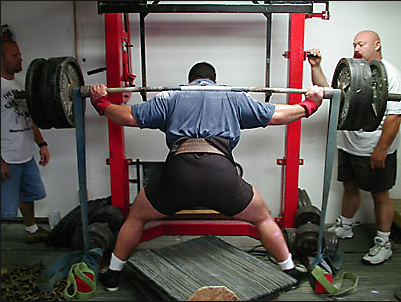
The Ageless Motherfucker
He's also just totaled elite again – at 62 years old! That certainly says something. The guy has totaled elite in five decades!
The Expert Motivator
Although his mind-fuck approach pissed me off more than I care to remember (I know I pissed him off almost as much, so I'm calling it even), I can see now that I never would've accomplished what I did with a more tender approach.
Louie might've told me twice in 12 years that I was doing a good job. But he never once told me I sucked or that I was a failure.
The Incredible Coach
Take 300-pound pit bulls full of anger and adrenaline, each with something to prove, and cram them into a 600-square foot prison cell. Now create not only an orderly environment but also one where every lifter believes they're no better or worse than any other lifter.
These were guys who, to a man, could've walked into any commercial gym and assumed the title of "strongest guy in the gym," but Louie had them all believing they were just spokes in a larger wheel. Think that's easy? Hell, it's even tough to manage the egos on a girls' soccer team.
The Answer
You might be wondering if you're cut out for Westside. Maybe you're strong, really strong, and think you might have what it takes to survive there.
But what about your mental strength?
Getting back to young lifters who tell me they aspire to train there, here's another test I use:
"Why do you want to train at Westside?"
There's only one correct answer: "I want to break world records."
Westside knows what it can do for you. They'll want to know what you can do for Westside?
Be Better
I've always dealt with shit. Overcoming adversity is nothing new for me. Louie reinforced that I can accomplish things if I step up and do the work. I can realize the potential I have.
Louie gave me the mental strength to push my body past my self-imposed limitations. He knew it from day one and had to inspire, show and lead me to it. I may not become the best lifter in the world — but I'd undoubtedly become the best I could be.
More importantly, I became better than I thought I could ever be.
These are lessons in mental strength that have trickled down from training into my business, my family, and how I approach every day above ground. It's made my life so much better, and I have Louie Simmons to thank for it. He taught me that it's possible to be better than your best.
With our Westside Table Talk episode coming up I thought I’d add more background to this article on Westside and the lifters I met there
From Dave Tate
The Unity program has been a project John and I talked about for close to a decade. Last year when John approached me about doing this, it was different because our conversation wasn't about why it wouldn't work (blending max effort, dynamic effort, and basic powerlifting principles with his high volume principles). Looking back, I wish we would have captured all of those conversations because there were so many things that shouldn't be done together in effective and safe ways (high volume and maximal loading for one).
What made this doable is we are both already implementing it; him with his clients and me with those I consult. After we got down into the weeds, we saw a path to improve our method.
I quickly went from not liking the idea to loving it...
Let's jump right to what you need to know.
THE UNITY POWERBUILDER 1.0 PROGRAM WAS CREATED AND INTENDED FOR THE INTERMEDIATE LIFTER INTERESTED IN BUILDING MUSCLE AND GETTING STRONGER.
Here is a video John and I made regarding the type of equipment needed for this program and a couple of other things you should know before purchasing.
Before getting into John's message, I should note this program has been offered on John's website and social media pages for the past couple of weeks and has been one of his best-selling programs ever. If you already picked up The Unity Program, we THANK YOU and REALLY appreciate the support.
We know you'll love the program!
PICK THE UNITY PROGRAM UP HERE
From John Meadows
Finally, the Unity is complete and ready for you! We started working on this last year. We built it, revised it, then revised it again. It took us a long time, but I think you'll find that it was worth the wait!
In the DC Universe, there are three “Mother Boxes” that, when combined, form a “Unity." The Unity is an extremely powerful singular box that allows you to take over the world and make it your own. We are not necessarily shooting for world domination, but we are shooting to conquer a worldwide lack of muscular development and strength. We will beat puniness and weakness once and for all as we combine bodybuilding and powerlifting to form the ultimate “Unity."
What is Powerbuilding?
Powerbuilding simply means intelligently combining some aspects of powerlifting and bodybuilding together. Generally, this will mean:
- Using the big-3 lifts as the foundation of the program—squat, bench, deadlift
- Max effort work—incorporating specific heavy lower rep range targets more common to powerlifting
- Dynamic effort work—incorporating some medium weight dynamic speed work that powerlifters use for rate of force development
- Using isolation work that is more common for bodybuilders
- Using more of a variety of movements to achieve maximal development of each muscle group common for both powerlifters and bodybuilders
- Incorporating medium- to high-rep pump work more specific to bodybuilding
Combine all of this intelligently, and you get powerbuilding.
We are super proud of this program and think that you'll be very challenged by it. As a result, you'll grow and get stronger!
Let's get to work!
Regards,
John Meadows CSCS, CISSN, IFBB Pro
PICK THE UNITY PROGRAM UP HERE
Related Videos
We will beat puniness and weakness once and for all as we combine bodybuilding and powerlifting to form the ULTIMATE unity.
After decades as a beat-up old powerlifter, what do you do for a warm-up?
Vincent Dizenzo, Jim Wendler, and Matt Rhodes, the retired meathead super-trio gather, and listeners in a similar state of wear-and-tear want to know: How do you warm-up, boys?
To put it simply, you don’t warm up that much.
All three of them have tried every warm-up under the sun, with dozens of different moves cycled in and out., They’ve cut it down to the least amount of movements possible the longer they’ve been in the game.
Jim Wendler has now transitioned to doing some form of resistance training every day and he does yoga every morning. Now that he is not beating the hell out of his body with powerlifting training, he doesn’t need much of a warm-up. With fatigue properly managed and a holistic training method prioritizing conditioning and mobility on top of maximal strength, an extensive warm-up does more harm than good.
He has cycled through a few warm-ups but here’s an example of one he still uses very often: Grab a kettlebell, do ten goblet squats, five bottoms-up presses, then five snatches. Repeat for five to ten rounds. The focus here is warming up the entire body in a short amount of time, with little equipment or movement around a home gym with a limited footprint.
Matt Rhodes has a simple warm-up using one tool. He lays down on his back with one end of a band looped around his foot and the other in his hands. He stretches his hamstrings with a straight leg position, lets his leg fall away from his body to stretch his groin and adductors, then across his body to stretch his glutes. Then he shifts that leg to a figure-4 position to stretch the glutes in another angle. That’s the whole warm-up (once repeated with the other leg). If he remembers, he does some duck unders underneath the hurdles to help warm-up his hips, but it’s not mandatory. He is done in three to four minutes.
Vincent Dizenzo does 15 back raises on his very beloved professional-line back extension. This is the only thing that he has kept consistent in his warm-up and he has to keep it in. Here’s the rest of his warm-up: Forward and backward bear crawls (30-40 feet), side to side crawls, 15 push-ups, and 15 squats. It’s not too complicated and requires very little equipment. His warm-ups used to grow more and more complicated and he’d become frustrated with an inability to do it all. Now with the less he does, the better he feels. Even as someone with a long history in strength sports, he still fell victim to information overload and paralysis by analysis. His advice is to ignore social media entirely when creating your warm-up and training program.
“Compliance is the science”.
Your training program, your diet, or your warm-up are the ones that you can successfully follow consistently, and see results from. If you can’t stay consistent, it doesn’t matter how theoretically perfect your plan may be.
Text By Mason Nowak
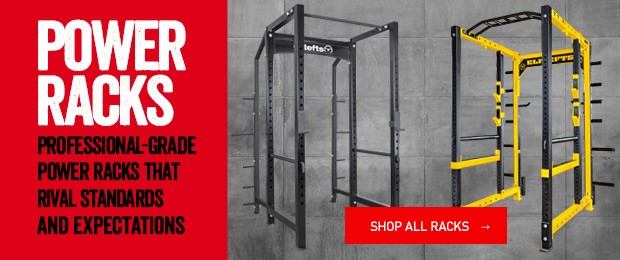
Nearly a decade of training combined, and what have Jim Wendler, Matt Rhodes, and Vincent Dizenzo learned about the perfect warm-up?
Doug Heath was friends with Louie Simmons during the birth and rise of powerlifting. Louie was so young that the Reverse Hyper™ was pieces of wood laid across a power rack with weights tied to your legs. It was 1976 and they were training together and things were simpler. As young healthy men, they were progressing easily and didn’t encounter many roadblocks. This meant Doug didn’t get to see the high level of experimentation in training methods that Louie is now known for. Doug then left Columbus in 1978 and began communicating with Louie via phone. He probably wore out his welcome for Louie’s open-book policy as he kept calling him with training questions constantly up until 1984.When Doug started having back problems Louie was sure to send him a Reverse Hyper™ right away. Doug never used it, he stuck to his old plywood power rack method.
Dave and Doug both liked Louie and thought not enough people know how funny Louie is. Sometimes hilarious, and sometimes a master manipulator, he knows what jokes will cut a little too deep and start a gym rivalry. Take for example, before Westside when Dave was still a teenager, bench was probably the strongest of his lifts. He was competing against another powerlifter with a giant ZZ Top wizard beard. They were in the 220-pound weight class and they were on their third attempts. Dave picks 420 pounds for his next attempt and Gandalf picks 425 pounds. Dave wasn’t so sure he had 425 in the cards but Louie told him not to worry. If Dave hit 420, his competitor was going to miss. How did Louie know? As each bench got heavier, the bearded man was touching the bar higher and higher on his chest. After jumping from 400 to 425, the bar was going to touch on his beard, and lift his head off the bench. Lifting his head off the bench was a violation of the rules and the lift would be disqualified. Dave was highly skeptical. What kind of Rube-Goldberg-esque bench failure is that? Louie insists he has seen this happen dozens of times. What do you know, 425 comes down, touches the beard, and lifts the man’s head off of the bench, resulting in a failure. Turns out this crazy bald motherfucker might know a thing or two about powerlifting. Despite Louie being terrifying to Dave at the time, he started to trust him a little bit. Everyone he was training with was telling him to avoid people like Louie, but he started a friendship anyways.
A couple of years later Dave was at another meet warming up to try to squat 800 and battling for first place in the 275 weight class against John Florio, a long time mentor for Dave when he was younger. John was the best at squatting and missed his third attempt so Dave had a very strong chance of catching up with him, but he needed that 800. Louie pulls him aside before his attempt and says, “Let me back spot you.” Dave didn’t give a shit who back spotted him so he said sure go ahead. After Dave walks it out and settles, Louie cues him to push his belly against the belt. Dave pushed as hard as he could against his belt and squats the easiest 800 pound of his life at the time. Dave stands up with blood gushing from his head because he had smashed his head into the bar getting hyped up, which he does not recommend. If you see a rule against smashing your head against the bar, you can thank Dave. He got thrown out of a meet because the head judge was in the splash zone during one of his squats. But he has now just finished this life-changing easy 800 pound squat and asks Louie what the hell just happened. Louie tells him he needs air during a squat, but Dave doesn’t understand how the hell the air in his lungs changes a squat. It’s the air you pull into your belly and brace, not your lungs. Louie is in the warm-up room punching Dave in the stomach over and over trying to teach him out to brace. Once he figures out the front, he punches him in the side repeatedly. A thorough beating later and Dave had figured out how to brace his entire torso. Louie tells him to put his fingers into his obliques. After the thorough beating Dave had just received he tried to jam his fingers as deep as he could into Louie’s side. Problem is when Louie flexes, so hard and so quickly, he about broke Dave’s fingers. Years later at Westside Barbell, Louie was about to jam a dowel rod into his side, and flex his obliques with enough force the rod shot out of his hands across the room.
As Dave is back at that same meet and wrapping it up, he is able to eke out five pounds over what John Florio totaled. Afterward, they shake hands but John has a smirk on his face that says he knows something Dave doesn’t. He later learns that while John was competing in the 275-pound weight class, it was only because John missed his cut to 242. John only weighed 244. While Dave won his weight class, it wasn’t close on the best lifter award, judged by Wilks formula. Dave knew he gave it his all to win the weight class, but he had been bested.
Text by Mason Nowak
Nothing like getting together with pals and talking old powerlifting stories. From Louie Simmons trying to break your fingers after beating you in the stomach, to having rules made specifically about you.
What did Dave Tate and JM Blakley do for tendon strength?
Dave Tate didn’t pay attention to tendon strength until his pec tendon popped off of his shoulder and he lost the ability to move his arm. Then he started caring a whole lot. Once he was totally healthy, the first thing he did was ultra-high reps trying to use the least amount of muscle force as possible. For example, for his pec, he would do a high rep, reverse band bench press where it is essentially zero pounds of weight at his chest for 100 reps. The first time his triceps would burn at around 60 reps. That means that he was using too much muscular force. If he was feeling a burn in his triceps, that meant there was blood that wasn’t going towards the tendon. He had to push with only a couple of pounds necessary to be able to get one hundred reps. Getting the blood to go into your tendons and not your muscles if very tricky, so you must deliberately try to apply little muscular force and just go through the range of motion.
When strengthening his elbows, he would do even higher reps on band tricep pushdowns. Often performing these for 100 reps, he would push up towards even 150 or 200 reps. Still, he wouldn’t have any soreness the next day. If you are getting sore from this you are applying too much muscular force. If you pushed as lightly as possible and didn’t resist the eccentric at all you could focus solely on getting blood into tendons, not your muscles.
Dave’s third exercise for tendon strength is overcoming isometrics for 3-5 second pulses with no weight. To make sure he still trained his full range of motion he would move the pins up or down every 15 degrees of the joint angle so he strengthened his tendons in all positions. As he got closer to the meet, he started to pull these out of his training. When he was close to competition, the stress of the isometric work wouldn’t be worth including, so he would pull it out and use something less intensive like the band pushdowns. He would also not try to progress in weight on these exercises. With the difficulty of getting the blood in the tendon and not the muscle, adding extra weight or more band tension only made it harder to keep the focus where he wanted it.
Close to the competition he would just focus on not gaining large amounts of weight too fast. Bloating up 25 pounds in one day would be unnecessary and changes your leverages too much, both externally and internally, that you would be at a higher risk of a lift going wrong or tearing something.
JM has his own methods here. He thinks the heavy loads will build your tendon strength just fine on their own. Wolffs Law of Bone says that bone that has high loads placed upon will remodel to become stronger and more resistant to heavy loading. After lifting heavy weights or doing other high impact exercises like running or jumping, your bones will grow thicker where the stress was placed. However, this is true for other connective tissues like tendons and cartilage. If your tendons are feeling beat up, you’ve just applied too much stress to them and they are yet to remodel stronger. When progressively overloading with heavy weights, the tendons will adapt and grow stronger. Being in tune with your body and listening to your joints if they start hurting is key.
Your tendons also have a specific sensory organ in them, called the Golgi tendon organ. The Golgi tendon organ or GTO measures tension in your muscle fibers. When rapidly loaded, it triggers the Golgi tendon reflex or “stretch reflex” to push back even harder. If overloaded too much, it triggers the inverse myotatic reflex, which is the opposite of the stretch reflex. If rapidly overloaded, the GTO will simply cease all force output in your muscle as an attempt to save your muscles from being damaged. If in the middle of a lift, you will just drop the weights and collapse instantly without even thinking about it. This happens because it is a reflex, meaning the nervous system response doesn’t even get sent to the brain. The signal reaches the spine and instantly receives a message back to the muscles to stop contracting.
JM does have one special exercise for his tendons. There was once a period where the inflatable Swiss balls first made their way into Westside Barbell. JM would grab heavy dumbbells and set up to bench press off of the Swiss balls. After hammering out a high rep set to pre-fatigue his muscles, JM would relax into the bottom position of his dumbbell bench, but he stayed there. After two or three minutes hanging out at the bottom of a bench position, your muscles become so fatigued they have no choice but to totally load all your tendons in the fully stretched position.
Text By Mason Nowak
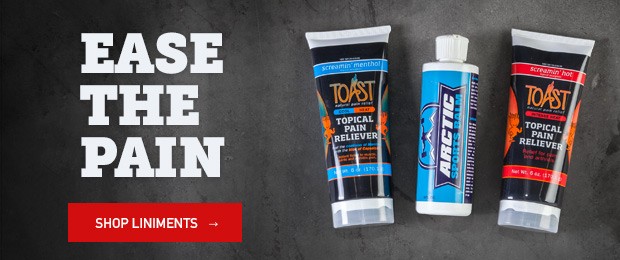
JM Blakley and Dave Tate have had their fair share of tendon problems. From tears to tweaks, they’ve learned how to strengthen their tendons to help lengthen their careers and put up bigger numbers. From ultra-heavy reps to ultra-light ones, here’s a variety of tendon tools at your disposal.
“You need a giant ego if you’re going to lift big weights.” -Dave Tate
A bold claim but it makes sense. You cannot have any doubt that you are the greatest, and acknowledging that you have any imperfections doesn’t do you any good when the bar has been loaded. If your ego has grown swollen enough, you won’t even recognize that you have a big ego. There will be a lack of awareness about yourself in any of your behaviors and actions, and it will never cross your mind if you have an ego. That problem arises when you have the rest of your life to live outside of the gym. If you can’t switch your ego off, you’ll mess up your career, or business, and your relationships as they are incompatible with a giant ego. You won’t be reliable to make good decisions if everything revolves around how you feel about yourself. But that doesn’t mean your lifting is screwed without an ego. Without the ego holding you back, you still have behaviors that benefit both your lifting and your life. Consistency, discipline, conditioning, and diet will do something other than build your squat.
One day your competitive lifting will come to an end, likely due to injuries or physical restrictions. Will you still be holding on to that ego long after? Your friends and family will still be dealing with the aftermath of your ego years later, wondering when you’re going to stop being that same asshole. Dave Tate knows of his experience with ego problems and his regrets that resulted from it, along with him and Mark Bell witnessing how the monstrous ego that JL Holdsworth wielded constantly.
JL used to have no idea what to do in life without resorting to his ego first. While it was a trait to be preserved when he was burying massive squats, everyone would have to try to reel him in so he wasn’t messing up his life or getting in fights. Think about it. If JL ended up in jail or hurt himself, his workouts would get messed up. If he breaks his hand he can’t bench...
JL is a whole lot different now, but it took time. In layers, he was able to shed his ego and change who he was, gain self-awareness, and acknowledge the regrets he has from life. Now he is an entrepreneur, business owner, strength coach, father, and leader.
Text By Mason Nowak
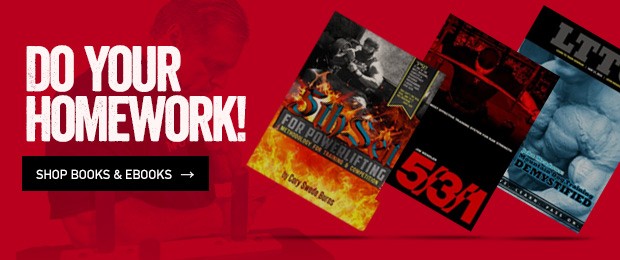
Sometimes ego helps you out in powerlifting. Sometimes it doesn’t. Here’s where the ego will bite you, and how to mold yourself for your best lifting and life.
Louie Simmons is both famous and infamous. He got to talking with Mark Bell and Mark thought it would be really cool to share what he used from Louie’s methods to put almost 200 pounds on his squat in one cycle. Mark modified Louie’s published circamax phase to be box squats in his squat briefs plus the squat suit with the straps up for a much tighter fit. At the time, Louie included almost zero squatting with the straps up, and never box squats with a suit on. In Louie’s highly abrasive style, he informed Mark that he did it wrong.
The program that Mark used to add 180 pounds to his squat in one cycle was apparently done incorrectly.
A very strong argument could be made that if you break PRs, let alone by that magnitude, whatever you did was right. But Louie Simmons is not your common man, he operates on his own rules with his own perspective. Louie is surrounded completely by his own methods. He has trained his own athletes, in his own gym, and created his own world in focus. There is nothing wrong with that, as Louie has had great results with a multitude of different athletes across different sports.
Dave Tate is quick to defend Louie and the fact that he sees things and thinks in different ways than the average person, and has been the genius of conjugate training from the beginning. Eventually, Louie just threw on the blinders and focused exclusively on what happens in the four walls of Westside Barbell. If he cared what was working for everyone else that would be taking focus away from making things work for his own athletes. Eventually, Louie has developed one hundred percent confidence in his own systems, and doesn’t want to listen to what Mark Bell might think would be better. Dave thinks that the level of confidence in his own system is a necessary byproduct of the type of innovations made and success seen by Louie.
Dave doesn’t consider himself at the same level of genius. When he has a problem he has to be willing to look outside of what he already knows to asks the other geniuses who have been in that scenario, then adapt their methods to himself. He won’t have the same problem solving or spark of creativity that people like Louie have to find new solutions.
Dave has a challenge for the doubters: Trade athletes with Louie. He will give you any of his multi-ply powerlifters and see if you can get them any stronger. Then have Louie take, as an example, your team of sprinters and try to make them faster. Dave knows who will succeed.
Text By Mason Nowak
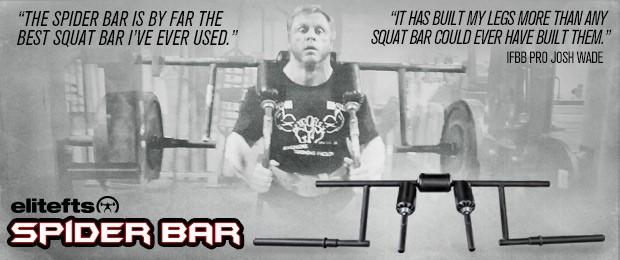
Everyone likes putting their own tweak on popular programming. Louie Simmons was not very receptive when he learned Mark Bell had changed his, however. You’d think a 180-pound squat PR would speak for itself, but apparently it was still no good.
Tim Edmunds our Head of Social Media and Mason Nowak the elitefts Strength and Conditioning Editorial Intern return to the Table Talk to discuss the future of the podcast moving forward. They discuss where Dave is and when he is returning, we ask you what you want to see on the podcast including branching out into new topics. The elitefts team and the articles published on the website are experts in a variety of topics and can provide expertise on subjects including powerlifting, autism, bodybuilding, running a gym, selling books, and running an online training business. Comment and let us know what you want to see!
What are people most interested in seeing on the podcast? Who would be the perfect guest? Which topics should be covered? Talking the future of the podcast and when Dave is returning!
Brian Carroll, Dave Tate, and most other elite-level powerlifters have dealt with back pain or injuries at some point in their life. For Brian, these problems were only resolved when he brought in top expert Dr. Stuart McGill. Dr. McGill helped Brian recover from a devastating back injury and return the top of the sport of powerlifting. They have now collaborated to create a book on the process and how any athlete can bounce back to peak performance.
Stuart McGill’s books and ideas have skyrocketed in strength sports and have helped many people recover from injury and become stronger lifters while living pain-free. Unfortunately, this has meant a dilution of the ideas as they spread in popularity much to the frustration of Brian. Now that he has been garnering momentum in his lifting progress, Dave wanted to know what Brian has kept in his routine now that he has moved out of rehab mode into progress mode. For Dave, after learning all of Stu’s content and applying it to his own rehab, he is now hyper-conscious of his body positioning. He’s careful about his sleep posture, how he sits down, and how he stands up from a seated position. He is sure to keep his core highly tense and not overly flex his spine. So what is it that Brian sees people fucking up?
Fallacies of the Overconfident
Firstly, if you haven’t read Stuart McGill’s books or learned from his program you are only dealing with a glimpse of his full ideas. Stu has written thousands of pages of books, research, and articles and given hundreds of lectures. Basing your knowledge off of a couple of bullet points you’ve seen here or there, you don’t have the full picture.
Secondly, you’re coupling an incomplete knowledge base with false confidence. People often claim to have 10/10 perfect movement quality every second of their day. Brian will ask them to sign a waiver for training and treatment. However, this waiver will be placed on a countertop slightly above waist height. Almost every single time someone stoops over and slumps their shoulders, falling into the poor posture and flexed position. Brian says you have to be loading your hips during everything you do! Bend your knees and sit back to use tables and don’t flex your spine forward. If you have to tie your shoes and you’ve got a big power-gut from your latest dreamer bulk, raise that foot onto something that allows you to lunge and reach your shoes. If you watch a golf player pick up a ball they execute a perfect lunge with zero flexion of the lower back. Replicate this if you ever pick things up off the floor.
Deloads That Work
This all may sound excessive, but it’s the details that matter for fixing pain or chasing elite performance. While you may be an 1100 pound squatter like Brian, picking up a bag or even just a scoop of dog food can cause problems one movement at a time. Your entire body weight is behind every movement you do, and a hundred moves every day can “pick the scab” per Dr. McGill’s terminology. So Brian demands movement perfection. Get your core stiffer than you thought previously possible and perform your exercises every single day with perfect execution. It is an entire system. You need a precise diagnosis of your problem, removal of the cause, and build stronger and pain-free movement capacity. Your bones and connective tissue take months to change, so this is a lifetime commitment. This leads to Brian’s frustrations being shoehorned as the “deload guy.” Brian is big on deloading effectively. Brian isn’t satisfied with people just “bodybuilding” every once in a while as their form of a deload.
“Bodybuilding is a really good way to stay injured for a long time.”
Brian takes a very methodical approach to his deloads. Deloads extend beyond programming and into rehab so they must be treated clinically. His deloads are highly specific, so he wants to completely deload his spine, and only work on exercises that improve the health of his vertebrae. Rehab needs to be highly specific to your goal. Start completely from scratch, and introduce only what you need to build an iron core.
Dave Tate has also seen some asinine methods of deloading. It’s common for powerlifters to try to deload exclusively the spine, which has somehow turned into just the removal of squats. While you have physically removed the weight from the top of your spine, plenty of pressure is still enacted on your vertebrae during lifting. Deadlifts still load the spine! But even bench press, dumbbell overhead press, foo-foo cable bodybuilding work, or rowing motions will all prevent a total deload of the spine. The worst offender is doing heavy lunges while your low back flexes and twists all over the place! Your spine doesn’t measure pressure in pounds on a bar or in a dumbbell, it only knows the result of your cumulative movements.
Text By Mason Nowak
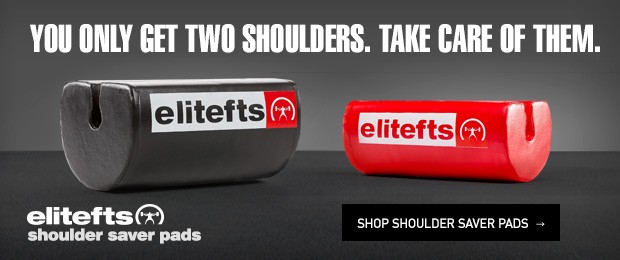
Stop screwing up your deloads and you’ll see less back pain and significantly increased performance. Then stop screwing up how you tie your shoes! Done incorrectly, small movements can add up to exacerbate back pain.
 Are you a coach training complete beginners? Are they very young or getting into it as the first time as an adult? Are you a coach fighting against a perspective formed only on media and the misconceptions that they've been told?
Are you a coach training complete beginners? Are they very young or getting into it as the first time as an adult? Are you a coach fighting against a perspective formed only on media and the misconceptions that they've been told?
First things first, you need to understand your client's perspective. Why are they coming to you? Have their parents or coaches told them they need to start training with you? No matter the reason, you need to understand what they currently expect from you and possibly shift expectations towards something that aligns with your ideals. Even if you both compromise significantly, you need to agree on what their training and results may look like right away. So far they’ve been sold quick tips, six-pack secrets, and training hacks that promise to add slabs of muscle to their frame while simultaneously dropping them to two percent body fat. You will need to educate them that this is all bullshit. Even worse, everyone else that your words are competing against are saying that all these secrets do exist! It’s a leap of faith to get them to believe that everyone else in the world is lying. Otherwise, you have to promise these same quick hacks, and in a couple of months, they’ll realize you were full of shit and move on to the next trainer. You need them to trust in a very long term plan that will last the rest of their life.
Mistake #1: Not understanding your client’s perspective.
Part of establishing trust with them will lie in the workouts you will do. Fortunately, a very fresh lifter will make gains doing almost anything, so you can compromise here so that they aren’t immediately turned off from training by an incongruency between what you want them to do and what they expect to do. One, two, or three times a week, they will make very similar amounts of beginner games. No fitness hack or even steroid has ever beat the power of beginner gains. Later on down the road, you can start tuning in what you think is more ideal, but keep your eyes on the prize. Get them focusing on adding weight to compound lifts, improving their form, and increasing the focus they bring into each session. Educate them as you go, and then it will be an easy sell when they need to do things like up their frequency. This education should make your client more independent as you go. If they are the ones who actually know what is important in their training, they may not rely 100 percent on your guidance, but they will recommend you to anyone who ever asks.
Mistake #2: Stop trying to achieve perfect technique on day one.
If you actually fix one thing at a time, after six months they will have perfect technique. If they are totally new to exercising you are trying to fix dozens of exercises they’ve never done before. If you started a new sport and your coach expected you to be able to run 20 plays perfectly in the first two weeks you’d be driven insane. If you’re already totally overwhelming them with exercises, the second you start talking about nutrition or recovery they’re going to be totally lost. Communication isn’t about getting them to understand what you say, but getting yourself to understand how they are already thinking. Speak their language and have reasonable expectations for their motivation. A lot of beginners or intermediates will be highly optimistic about their current motivation and strength levels. They will want to lift seven times a week and base their training around hitting their next milestone rather than where their abilities currently lie. You have to ignore that and trust the gains as they come. Everyone else out there is trying to make their buck by overcomplicating things.
If you are actually the curious beginner or intermediate reading this, the best thing for your progress is the proper training environment. A team of people who want to help each other get stronger will be more effective than anyone rolling solo. Find people who can share experience, answer questions, and keep an eye on your form and overall training. They can watch your attitudes, your focus, what you have been neglecting, or overemphasizing. They can pass on everything they’ve learned so you don’t have to live it all yourself to understand it. This all leads to the most important factor in your training: Understanding yourself better. Even if you have a coach, you need to learn to autoregulate your training. You need to learn when certain exercises need to be replaced or dropped, weights need to be changed, and sets and reps modified on the fly. If a coach isn’t helping you learn this as you go, they are failing to improve your long term progress. Most importantly, you’ve now shifted the blame out of your own hands and into theirs. If you aren’t doing these things yourself, it can be easy to blame the coach instead of realizing you should have been doing this for yourself.
Text By Mason Nowak
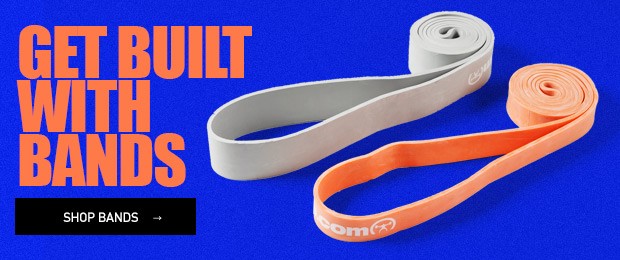
What does the fitness landscape look like for beginners, and what can we do as trainers to help them best? It’s oversaturated with con artists, and we need to understand the beginner’s perspective to be able to help them best.
elitefts Table Talk Podcast coming back at you with another Strength History podcast. This week Tim Edmunds and Mason Nowak are narrowing their focus on powerlifting, and discussing Dave Tate's pick for the most underrated powerlifter.
Steve Goggins was a massive force in powerlifting for decades. Shattering the heaviest squat of all time with 1102 while weighing only 265 should put him as one of the best immediately. But he maintained insane levels of strength for decades. In competition, he first deadlifted 805 in 1986 and held this strength until 2005 when he took a long hiatus from competing. However, that didn't mean he wasn't training. He was still hitting over 800 pounds in training and had pulled 965 pounds using straps.
Despite him going head to head against everyone regardless of weight class, he was still beating out guys significantly bigger than him.
Some of his accomplishments are:
- 220-Pound Class #9 in the Deadlift with 821 set in 1,987 (one of the longest standing on any top 20 list)
- 242-Pound Class #9 in the Squat with 1,045 set in 2005
- 242-Pound Class #4 in the Deadlift with 871.9 set in 2004
- 242-Pound Class #10 in the Total with 2,481 set in 2004
- 275-Pound Class #7 in the Squat with 1,102 set in 2003
- 275-Pound Class #7 in the Deadlift with 881 set in 2003
- 275-Pound Class #15 in the Total with 2,535 set in 2003
Text by Mason Nowak
Who becomes great? What matters now to keep your legacy moving to the next generation? Steve Goggins is Dave Tate’s pick for the most underrated powerlifter, and he has his theories for why he isn’t mentioned.
A common problem: A sudden change in your lifting schedule has left you with only three days per week to train, although most training programs revolve around a four-day training split. If you find the few programs that actually fit three days a week, you don’t actually like them. Dave Tate has a simple solution. Stretch out your program of choice. A 4-day training week program done over a longer period of time still works. You can train harder, beef up the program a bit, take deloads less frequently, or use any strategy that accommodates for your extra day of recovery each week. The part that becomes more complicated is if you are planning to peak for a meet or a specific day. A simple solution is to arrange your program in reverse from when you plan to max. Don’t let max day sneak up on you, you can plot it out so that you can be better prepared for when you need to have your last heavy lifts.
You can take this to an even greater extreme as well. It isn’t uncommon to only have two days a week to train. Dave Tate has seen this conversion from four days a week to two days a week numerous times. This however requires more modification than the same work done over one week. You almost always want to push a little harder, add some more accessory work or extra volume in your main lifts.
Text By Mason Nowak
If you’re struggling to make your workouts fit a new and tighter schedule, Dave Tate shares his pro tips for making 3-day and 2-day week splits work with great results.
elitefts Table Talk cohost Tim Edmunds is joined once again by Mason Nowak, the current elitefts strength and conditioning editorial intern. After digging through Dave Tate’s Powerlifting USA magazines and pulling out the highlights in strength sports history, Tim and Mason pulled out some of their favorite feats of strength for a segment called Strength History (following the theme on our Instagram account). Clips will include powerlifting, bodybuilding, strongman, and sometimes just freaky strong feats captured on film.
We’re looking at freaky feats of strength across the board of strength sports. Listen to this first Table Talk podcast: Strength History.
The key to a long and successful career in any strength sport is learning more. When you first start training, you learn a lot about the general principles of lifting weights by reading articles and books, watching videos, and trying out every program that catches your eye. You throw in random exercises whenever you find them, and this experimentation gives you a big pool to build from as you start figuring out what makes sense. Eventually, common sense isn’t enough. Everybody is doing what they see in books and the cookie-cutter programs, but they’ve adapted it to fit their needs. This leaves a lot of people confused as to what will work for them. It is hard when no one can tell you exactly what you need Dave Tate thinks that beginners often need a kick in the ass to learn what working hard means, and the more experienced often need to be cut way shorter than they prefer.
You need to do some thinking yourself.
This can be what you find to be your edge over other competitors and other training programs. Dave Tate talks about how he rarely used the super yoke but how it can be a valuable tool for some of the powerlifters at elitefts. The stability challenges of walking with the super yoke on your back are extremely taxing on the core muscles and do a better job of improving the ability to unrack and support extremely heavy weights than traditional ab work might. Brian Alsruhe saw a similar effect. After picking and walking with 800 pounds or more, and a good night’s sleep, a 500-pound squat feels significantly easier the next day.
But there are two definitions of the edge. As you get stronger, the heavier weights create bigger stress to your muscles, joints, and nervous system. What was an average workout a few years ago, may now put you out of commission for a week. Your edge is that line you ride, where you need to reach as close to the edge as possible to make training adaptations, but blasting over the line has the potential for injuries and overtraining. Dave knows that he used to push past the edge way too far, and it took way too long to learn to stop doing that kind of damage to himself. He sees the same problems in the lifters around him, but he is able to guide them to stop just a hair shorter to avoid falling off the edge. While leaping off the edge for a max effort grinder looks cool on social media, maximal does not always mean optimal.
Text By Mason Nowak
Dave Tate and Brian Alsruhe both know you can’t do the same thing forever and expect results. In the pursuit of maximal performance, you have to find your way to step ahead of the crowd. How do you identify what your own edge is?
elitefts co-hosts Tim Edmunds, Matt Goodwin, and Nate Harvey sit with Eric Cressey, New York Yankees Director of Health and Player Performance to discuss all the things that Eric is doing to get his MLB players ready for the season in spite of COVID-19. Eric is also a recognized powerlifter and sheds insight on how he uses his experience with powerlifting to improve his overall training methods. This is a great episode for anyone interested in Sports Conditioning, Powerlifting, Fitness Training, and Baseball.
Our Guest
Eric Cressey is currently the Director of Player Health and Performance for the New York Yankees. He was brought onto their team after his massive success running Cressey Sports Performance where he trained over one hundred professional baseball players, so many of who were Yankees players that he was the perfect fit. Eric also holds several state, national, and world records in powerlifting with competition bests of 540 squat, 402 bench, 650 deadlift, and 1532 total in the 165-pound weight class.
Eric Cressey, a strength and conditioning legend known best for his expertise in baseball athletes, joins the Table Talk Podcast to talk with our elitefts co-hosts. This talk sounds off how to get athletes stronger, healthier, and better in spite of COVID-19.

Dave Tate has been in the powerlifting game, in some form, for 40 years. 40 years is a long time to remain focused on one thing. When asked, “What is missing from younger lifter’s approach to training?” he has several decades of information to pull from to tease out any sort of trend. Certain things have fluctuated up and down in popularity, so to name one style of training over another would stop being true if you just wait a couple of years. But in every industry, we have seen an increase in ease of access to information. While Dave used to walk to the bookstore to pick up his monthly copy of PowerliftingUSA and blast through it in a day, now you can type “powerlifting” into Google and get 43 million results in less than a second. The farther you go back, the more you were automatically put into one box of training concepts.
With only a hammer, everything looks like a nail. You could learn the ins and outs of a particular training style but would wait for the trends to swing into another direction to learn anything new. Barring taking a trip to a new coach and gym, you were locked into what was available around you. Given all of this, Dave isn’t against being able to flip through a different article post every day of opposing viewpoints on a whim, but you need to impose your own commitment. Jumping from program to program, and quitting when times get tough does nothing to further your knowledge. Sure you’ve probed a little bit of everything, but you haven’t picked up enough practical training knowledge and experience to guide yourself. You’ll need to decide to commit to a deep dive of learning to actually gain mastery over the technicalities.
So is that the only thing that is different amongst newer lifters? It’s an indicator of a broader theme of personal accountability.
Personal accountability in powerlifting used to be when you wanted to be a better lifter. You would find a way to learn more about training, either programming in general or how you respond to it. Nowadays, when you think you’ve hit a wall, you find a new program or hire a coach (or a new coach). Blame can be more easily shifted towards another entity, either the program or coach was bad.
Coaches are not inherently bad. Dave understands the idea of wanting to not have to worry about the intricacies of your program and just being able to lift weights and get stronger, but this may be suboptimal. The more you want to achieve, the more you will need to learn about yourself and your training. You’ll rely more on autoregulation, and if your coach isn’t helping you to learn more about how to train, this autoregulation will be reliant on them, therefore imperfect.
There are pros and cons to the changes we’ve seen over time, but the key is always to keep learning and remain focused.
Text By Mason Nowak
“The children now love luxury; they have bad manners, contempt for authority; they show disrespect for elders and love chatter in place of exercise. Children are now tyrants, not the servants of their households. They no longer rise when elders enter the room…” — Socrates
Chris Lambert is today’s guest on the Table Talk Podcast joining our co-hosts Tim Edmunds and Josh Goedker of elitefts. Chris is a retired police officer and current gym owner of Atilis Gym in New Jersey, in operation since 1996. There are now five Atilis Gym locations, and one of them has been in the news lately for opening up despite orders from the local government. This opening was in tandem with organizing a protest, which led to two issued summons to the franchisees and a shutdown ordered by the New Jersey Department of Health.
Chris lends his insight on how he is working on a council with the New Jersey government to best prepare gyms to reopen safely and to negotiate to open businesses that can meet these requirements sooner rather than wait indefinitely for an opening date.
Chris Lambert joins us to talk about gym closures in New Jersey. Listen as he explains the news-breaking controversy at Atilis Gym in Bellmawr.
Adding a new twist to Table Talk Podcast, co-hosts Matt Goodwin, Josh Goedker, and Tim Edmonds interview Chris Bartl and Scott Paltos. But wait...
WHERE'S DAVE TATE?
Don't worry, he'll be back for specific episodes. We hope you enjoy this new format. Be sure to give us feedback in the comments below. In this interview, the guys discuss the state of their gyms, adjustments made to their training style, athlete transition out of quarantine, business decisions post COVID-19, and more!
Our Guests
Back to our guests, both Chris Bartl and Scott Paltos have been featured on our site as they are valued customers of elitefts.
Chris Bartl is the strength coach at Mount Baker High School in Deming, Washington. Read more and check out his school's layout!
Scott Paltos is a middle school physical education teacher, a high school football coach, a gym owner, and a lifelong elitefts customer. For the past 15 years and counting, he runs Foundation Training Systems, a gym where he trains both athletes and general population adults. View Scott's home gym!
Our Co-Hosts
Tim Edmunds is a Canton, Ohio native and currently lives in Lexington, Ohio with his wife Dairia, two sons Tyson and Braxton, and dog Moose. Growing up in a fitness-obsessed family, Tim went on to Bowling Green State University to study Exercise Science and built his career in the Health Club and Sports Nutrition Industries. Over the past two decades, Tim has been involved with everything from health club and CrossFit ownership to working with large sports nutrition websites and brands on their digital marketing. Tim joins the elitefts as an integral part of their eCommerce sales and marketing team.
Matt Goodwin, Director of Sales at elitefts is closing in on ten years of equipment sales experience. He's the husband to Tracy and the father to Kaleb. Matt loves football, baseball, lifting the weights, and long walks with Bella the bulldog. On the contrary, Matt hates sharks, oceans, snow, rain, and light beer. "I enjoy selling people their dreams, nothing better than seeing a weight room come together. " Words he lives by: Never count on money you do not have and complacency is the enemy of success.
Josh Goedker is a Detroit, Michigan native and currently lives in Dublin, Ohio with his wife Kim. Luckily for Josh, his passion is geared towards the digital media realm and not Michigan football. Josh got his bachelor's degree in Television and Digital Media Production from Ferris State University in northern Michigan. After a short stint with Whitehouse Post in Chicago, Josh has been leading the media department at elitefts for the past six years.
A fresh new layout with new cohosts kick off episode 51 with guests Scott Paltos and Chris Bartl.
Every decision you make has both risks and rewards to its possible outcome. In powerlifting, the scariest risks are debilitating injury or death. For some, they may even risk losing their jobs, families, and homes with what they are willing to do for the sport of powerlifting. Universally, there are risks and rewards to every decision, and if asked, everyone would agree with that statement. Yet for some reason, while many are aware of these risks, many behave in a manner as if those risks didn’t exist. It’s shockingly common for people to look only at the possible rewards of any action they make, and then act surprised when things turn out poorly for them. It is easy to fall into the trap of believing that things will turn out differently for you than the worst-case scenarios that you often see. There seems to be an internal belief that either you will do things smarter or better than everyone before you, and it probably won’t happen to you. There’s a glimmer of truth, it is highly possible you can minimize an actual risk, or maximize your odds of getting the rewards. But minimize has never meant to eliminate.
Dave Tate knows this better than anyone else. You’d be hard-pressed to find any reason to say that he hasn’t taken a risk or two to pursue the next PR on the platform. A torn pec, busted shoulders, and two hip replacements can be accurately described by Dave as, “drawing the short stick.” Unfortunately for some, these kinds of injuries are the price you have to be willing to pay when you’re aiming to draw the big stick out of the pile.
Dave aims to give you a wake-up call. Whenever you make a decision, be fully conscious of the worst-case scenario, because you are not immune.
You’ll have to ask, “What is the worst thing that could happen? Am I okay with the very worst possible outcome from my decisions? Am I okay with being the one percent?"
If you aren’t okay with that 1 in 100 chance, then that chance isn’t a risk you should be willing to take. For some, this sticks with them for life. They were never prepared for the risk they undertook. However, always being prepared for this risk has left Dave in the position he is in. He was able to leave the sport with zero regrets, rather than leaving himself wondering, “Why did this happen to me?”
Text By Mason Nowak
Every action has a reaction. If you remain indifferent to the negative reactions while only focusing on the positive reactions, you’re likely going to experience a major wake up call sooner or later.
JM Blakley was known as the black sheep of Westside Barbell. He’s well educated, speaks in a calm and soothing voice, and dispenses wisdom on the metaphysical powers of positivity. His disposition, however, has never stopped him from being very strong-willed and unafraid to speak his mind.
Team elitefts member Yessica Martinez was fortunate enough to get some hands-on coaching with JM on how to bench more effectively in her shirt.
Yessica would soon learn that her bench methodology didn’t quite line up with JM’s.
If you’ve ever heard JM talk about the bench press, there is always his strong battle against the term “leg drive.” While many people emphasize driving through their legs during a bench press to remain stable, he has valid concerns over the semantics of how much power is actually a result of using your legs. ears of frustration have created a hard rule that he will never cue “leg drive,” and he’ll argue with you if you do.
This didn’t stop him from dispensing valuable wisdom. Yessica saw the value and immediate carryover in applying more leg pressure to remain stable during the eccentric portion of her bench press. Dave Tate was quick to chime in as well with what he saw as a valuable cue for “leg drive” (sorry JM) in the bench press.
“Take the slack out of your skin.”
When you bench press, no matter your coach, there is a great deal of emphasis in creating a very strong base where your shoulders meet the bench. That is your point of contact with the solid earth and is the first spot to begin bleeding power in a poorly executed bench press. You are teaching both to remain stable, and simultaneously drive down into the bench and backward on the bench with your legs.
Yessica then shifts the questions towards Dave. Where does Dave think that one should place their feet while bench pressing? Should you have your legs out far and wide, or tucked tightly underneath your body?
Much like a deadlift stance, Dave recommends being proficient in both. Depending on if your back has been tweaked or your hamstring is cramping, you may have to make a last-minute change to your bench form to be able to finish your attempt and be able to improve your total. You can’t just walk away and give up your second attempt because you don’t want to move your legs around. Maybe you have to lower your next bench attempt a little bit, but you just kept your body fresh for your deadlift, and are still in a position to be able to hit the highest total possible.
Yessica is sure to take what she can away from what JM had to say. It’s always worth listening to other perspectives, especially from someone of JM’s caliber. Find something to take away from what someone had to say, but don’t throw out everything you have found to work. Make small changes to see if they work, rather than doing something like picking up an entirely new bench setup.
Text by Mason Nowak
In hindsight, what was Yessica Martinez’s biggest takeaway from working with the bench press wizard JM Blakley?
This one time, at Westside Barbell…
Is always a great lead into a fantastic story. When Dave Tate was doing speed work, they were blasting through reps. Just like everyone should be during dynamic effort, it was as soon as the last person was done you sat down and hit your set, because there was only 60 seconds between each of your sets. If you’re still fiddling with your wrist wraps then you’re going to slow everybody down. Somehow an argument had turned into a fight behind them and before you knew it the spotters had one hand over the bar and the other making sure the fight didn’t roll into them while they were still trying to bench. The good news for them is the fight quickly turned into a one-sided beating and the lack of contention allowed the chaos to be contained at a sufficient distance. This really brings to light what Dave means when he says you don’t have to be friends with your training partners…
Dave is quick to address that Kenny Patterson was one of these more disagreeable members. While he comes across a mild-mannered guy during his Table Talk Podcast appearance, he was an expert at antagonizing the other people.
One time a world-renowned strength coach had come in to visit Westside Barbell. Everyone was board pressing and the coach had taken a seat on some boxes to watch them train. Kenny Patterson throws a casual invite his way, “Hey man, you jumping in?” The coach politely declined but Kenny had something in him that day that made him feel more like bothering somebody. Starting with an empty bar he asked every time they added any more weight, “Hey man, you jumping in?” Except he found a new way to ask him every time. “Come on dude, you’re up.” “Yo dawg, it’s your time.” Every single time until they were up to 700 pounds. Clearly, because he hadn’t gotten underneath the coach's skin yet, Kenny said, “Oh I see how it is. You’re just waiting for me to finish so you can one-up whatever I do. I’ll even load the bar for you!”
Who knows what made him the designated victim that day. Maybe he walked in with a bit of an attitude. It’s probably a good idea to show some respect at a world-renowned private gym that you have been allowed to train at. They weren’t the first coach to come in and many knew how to be polite. Observe when you come in, and let them train until they're done. If these lifters feel like answering your questions, save it for the end and they’ll be much more likely to actually want to talk to you. You could probably apply this advice anywhere else in your life as well.
Text By Mason Nowak
Great coaching, brawls and talking trash all go hand in hand at elite powerlifting gyms. When Dave Tate has a story to tell about Westside Barbell, it’s a good idea to stop and listen.
Due to the nature of becoming a monstrously jacked and bloated meathead of a powerlifter, it can get harder over time to be able to get your shoulders in a comfortable enough position for a low bar squat. Most powerlifters eventually reach a careful juggle between bench and low bar squat volume to ride the line of what causes them elbow pain. This isn’t a given for everyone, especially if they improve their shoulder mobility (or sub low bar out for more SS Yoke Bar work). If low bar positioning isn’t agreeing with you there’s a couple of common mistakes that Swede Burns sees people making.
Number one is to stay on top of the mobility work. If the pain stems from your shoulders being unable to get into the correct position and you can fix it, you won’t need to worry about putting band-aids on your current training plan. You can also ask yourself if you’re pushing for too extreme of a low bar position. If moving the bar an inch lower on your back only adds ten pounds to your squat max but ruins your bench training, just squat with a bar position that is pain-free and stable. We all have different abilities due to bone structure, muscle mass, injury history, and natural flexibility, so don’t force the lowest bar position possible. The most common adjustment Swede makes to his client’s squat form is moving the bar up an inch or more. It tends to bring huge amounts of relief to their shoulders with little to no change in actual weight lifted, and often accompanies an increase in bench and deadlift strength from better pain-free training.
“What's the best answer for your total?”
Given the initial question addresses only having a movement deficiency in one arm, it is often best to get in touch with a physical therapist or some other medical practitioner. If your shoulders give you consistent pain, a change in bar position can only do so much.
If you’re taking all the steps you can to improve your mobility and you’re still looking for a quick fix, Swede drops some golden technique nuggets as well. Wearing wrist wraps while squatting can help you get into a better position by taking some of the stress off of your elbows and shoulders with a more solid wrist. If you’re pulling the bar into your back on the squat, you should probably stop. Pulling down on the bar is going to come back to bite you when you hit the bottom of a squat and the bar flexes, and even a squat bar will flex a little. When the bar whips back up it’s going to torque your shoulders and elbows even harder.
At the end of the day, you have two other lifts besides the squat. Don’t allow tunnel vision to make you lose sight of what is most important — improving your total at the meet.
Text By Mason Nowak
Being jacked as hell got your shoulders a little tight? Here’s how you fix your squat bar position for better performance, less pain, and a bigger total.
When someone asks, “What Age Should Kids Start Lifting Weights?”, they often have two reasons. Either they are seeking an answer relating to the biology of child development, or they’re wondering how to turn their fifth grader into a tank for his next flag football game. Dave Tate and Swede Burns may not be considered the top experts in biology. Still, they know a thing or two about how to have a competitive and long-lasting lifting career and a successful segue out of competition while still holding up powerlifting as something meaningful.
Swede began lifting at 12 years old, and Dave began lifting at 13. Those numbers have zero correlation with what is going to be the correct answer for someone else. The true answer is that a kid should start lifting weights when they want to lift weights. If someone has been lifting weights or playing a sport for 10-20 years, the least important thing is going to be when they started. What’s going to matter more is the amount of enthusiasm and enjoyment they can bring to training after the first year. If Dave or Swede had been forced into training when they were ten years old and had no interest, they likely would have never had the desire to continue when they were teenagers and adults.
What can you do then? Lead by example. Let kids choose their forms of physical activity. No one can deny the importance of physical activity and exercise, especially as more Americans live a sedentary lifestyle. Anything they don’t find fun, in some way, will be much harder to get them to commit to. Dave opens up from his childhood and admits that his father loved football and pressured him to focus on it constantly. Dave ended up hating it and even directed some of that negativity towards his dad. Would Dave really have been any worse off, in the long run, had he focused on wrestling instead? He might be more interested in football than he is now!
But what if powerlifting had been ruined for him, too? Dave is pretty sure he would have ended up in jail if he didn’t have the outlet of powerlifting to mold his life around. Swede doesn’t have to wonder as much. Swede has been in and out of prison and knows that powerlifting is one of the reasons he was ever able to break the cycle. If that had been spoiled for him at a young age, he’d never have worked his way up to be one of the world’s best powerlifting coaches—a journey that takes multiple decades. The little he’d gain by starting at a younger age would be immensely overshadowed by the lifetime he’s spent being a student and teacher of the weights that saved his life.
Text By Mason Nowak
Did you miss out on your peak potential by picking up powerlifting too late? Or would you be nowhere near where you are by starting too early?
It ain't easy weighing 330 pounds.
You’ve heard Dave Tate’s bulking diet, but he wasn’t the only powerlifter on a quest for mass. While it didn’t have as many Oreos, Swede Burns takes the time to lay out his 9,000-calorie diet that he ate every day to maintain his 330-pound body. To fit in that many calories it’s a lot easier to take them in liquid form. Every day was kicked off with a triple scoop of apple-flavored protein powder mixed with maltodextrin, which he now buys in 20-pound bags. He drank four of those concoctions every single day. The first half of his breakfast contained two cups of dry oatmeal (which is four normal servings, or as Swede describes it, “27 cups of oatmeal once you’re done cooking it”), blended with several heaping globs of peanut butter. He was also drinking his infamous “chicken shakes,” consuming about two pounds of chicken each day blended with water.
The semi-solid element of his breakfast every day was in the form of “an insane amount of eggs.” His lunch was 20-30 tuna rolls from a local sushi buffet because he wanted it to be a lower fat meal so he’d digest it faster and be ready for his next meal sooner. For dinner, he had some form of a red meat entree every day. Most nights were capped off with ice cream, as well as a “treat” for eating everything else that he didn’t find as enjoyable. Day in and day out, he consumed this absolutely miserable diet. He was insanely consistent and documented everything, so he has food diaries going all the way back to when he was 18 years old.
A little tip from Dave Tate that Swede backed up, when you’re trying to gain weight, you can weigh yourself at night to encourage eating more every day. But when you’re losing weight, you can weigh yourself in the morning after a shower and shit to feel closer to the lower weight you’re aiming for. If you’re like Swede, you might have to limit how often you weigh yourself or you’ll be bloated out of your mind ready to try to sleep and beat yourself up mentally because you’re off by a couple of pounds.
As alluring as this diet sounds, being 330 also makes you feel horrible. You’ll be tired all the time, your joints will ache, and you’ll have to sneak mini naps in between driving places and trying to get out of your car. Weirdly enough, after dropping to 260, Swede feels significantly better, his sleep, energy, and joint pain have improved too.
Text By Mason Nowak
Need a little bit of bulking inspiration? Swede Burns and Dave Tate trade tips. Swede lays out the entirety of his diet he used to maintain a 330-pound bodyweight as a powerlifter.
Ever had a point in your life where you knew it all?
If you’ve been 16 years old before, then yes. Dave Tate was no different. When he was in high school he got a job as a personal trainer at a local club. He had memorized all the Weider Principles, done a few powerlifting meets, and beyond that, what else is there to learn? His first client was a somewhat large man and Dave wanted him to bench press so he slapped a plate on the bar and handed it off to him. News flash for Dave: The untrained person doesn’t typically take 135 pounds as their first warm-up set. The lift-off felt harder than he predicted and ended up doing a partner bench press and upright row to get the bar back into the rack. Needless to say, Dave decided to drop the weight to an empty bar for the next set. Dave’s mind was blown that day when he realized the gap in his standards and expectations between what he would be seeing in his general population clients.
Just as he started thinking he had it all figured out once again, he went and took his first couple of college classes. Yet again, he had a giant hole ripped into his blindspots (and his ego). A couple more powerlifting meets and courses later, he was sure that he had finally learned it all! Until his lifts started stalling and he started listening more seriously to Louie Simmons. Then he finally started to realize that maybe he wasn’t ever going to have every single answer right away.
Looking back, Dave values these moments where he saw why always learning matters. Starting off as a general population personal trainer really challenged his creativity and ability to work with a wider variety of physical abilities. Not everyone wanted to run a linear periodization powerlifting program (or warm up with 135 on the bench press). Dave has constantly spoken on the value of knowing your own personal biases and how they can skew your viewpoint. Pre-internet, it was possible that the strongest person a young female strength coach knew was their dad or boyfriend. On the other side of that coin, you have the powerlifter who is surprised that not everyone can do a push-up. Dave started going to seminars or conferences once a month to try to fill in the gaps in his knowledge as quickly as possible. Often the best thing you can do is look outside your wheelhouse and gain new perspectives.
Text By Mason Nowak
Dave Tate knows it all right? Not always… Here’s a major blunder and how he bounced back.
Call them the three amigos, this trio crowded around our table for episode #18 in July of 2019. They're back and for this episode, we're in each of their homes as everyone is following Trump's mandates, practicing social distancing to flatten the COVID-19 curve.
If you need a laugh, relax and listen, this episode is for you.
Click one of these platforms below to listen:
Jim Wendler is currently the strength and conditioning for the London Red Raiders high school football team. He played football and graduated from the University of Arizona, where he earned three letters. Jim’s best lifts include a 1,000-pound squat, a 675-pound bench press, a 700-pound deadlift, and a 2,375-pound total in the 275-pound class. He is the author of several books, including 5/3/1: The Simplest and Most Effective Training for Raw Strength.
As a self-coached athlete, Vincent Dizenzo held an all-time world record in the bench press and was a top-10 ranked lifter for over a decade. He has benched more than 600 pounds raw in three different weight classes and has a 900 equipped bench to his credit. Now, Vincent is focused on becoming a more fit version of himself. With his undertaking of Operation Be Less Fat, Vincent has lost over 100 pounds. Through this journey, he continues to provide invaluable advice on training, nutrition, and conditioning.
Matt Rhodes started his collegiate career as a lacrosse player at the University of Massachusetts Amherst from 1994 to 1996 and transferred to the University of Arizona, where he played football from 1996 to 1998. After college, he played arena football for the Richmond Speed before suffering a career-ending neck injury. Matt went on to coach football at the University of Richmond and later interned for Buddy Morris at the University of Pittsburgh. After eight years as a personal trainer, he returned to the collegiate ranks as a strength and conditioning coach with stops at Yale, the University at Albany, and the University of Rhode Island. Currently, Matt oversees the strength and conditioning program at Morehead State University.
The three amigos are back! Need a laugh? You’ll want to watch and listen to this home edition of Table Talk.
How do you know when it’s time to quit?
A lot of competitors don’t want to quit. They also don’t want to hang around if they know they can’t increase their total. The simple solution: don't admit you have a problem. Beware, eventually, it starts to get impossible to deny the toll that has been taken on your body.
Dave Tate first contemplated quitting when he tore his pec. He tore it in a meet while benching, and wanted to delay the surgery, however, it didn’t get any better on its own. He could still mostly use his arm by relying on his delts and triceps, but when a month had passed and he was unable to unrack a bar on a bench press and he couldn’t do an unweighted chest fly off of the ground he started looking into getting his pec tendon surgically reattached. Then came his powerlifting rebirth. He decided to start training at Westside Barbell and embracing the conjugate system instead of linear periodization. At that point, what did he have to lose? He hadn’t PR’d his total in four years and he was still getting injured. He decided to go all in on changing his training style and not look back at “what ifs” from that point on. He was going to go 100 percent in and accept the outcome.
However, eventually, all powerlifting careers come to an end. There are two ways in which a powerlifting career can end. Sometimes it is taken from you by injury, but if you’re lucky enough, you get to pick a proper time to exit the sport on your own terms. If it is taken from you and you didn’t already plan an exit strategy for how to live your life you can often be left grieving. Imagine: one of your top priorities and often a way you defined yourself... ripped away.
This is where Dave and JM Blakley had slightly different exits. JM started to weigh the consequences the longer he competed. Every meet prep he would see fewer results of each training cycle but greater joint pain. As he continued, the pain grew until he had to ask if the diminishing results were worth a rapidly decreasing quality of life. He told himself he would try for one more meet, but when he finished he knew he didn’t want to continue any longer.
No matter where you are in your powerlifting journey, make sure you are developing some form of after plan. One day you’ll be done powerlifting whether you like it or not.
Text By Mason Nowak
The idea that powerlifting might not be an option one day is terrifying, but at least Dave Tate and JM Blakley can share some wisdom for you to be prepared.
elitefts Classic
You're sick of your gym. Overcoming this issue is one of the missions of elitefts. In this part, you'll understand how you can start a private or home gym of your own — on a budget. It's not as expensive as you might think.
When you are setting up a place to train on a limited budget you have to prioritize your items based upon a budget. There are a few things that you must have and others that would be nice but can wait until later. I have separated these by:
- A-List: Items you have to have to get started.
- B-List: Items you should have but not necessary to get started.
- C-List: Items that are nice to have but not 100% necessary.
A-List
Combo Power Rack
This has to be the one item all gyms have to be based around. We offer racks from $900.00 to $3000.00. You do not need a $3000.00 rack for a home gym. The combo power rack is your best bet. We have built this rack to be the best on the market for this purpose. It has pinhole settings at every inch from the bottom of the rack to the top. This is to serve several purposes. It will allow you to perform deadlifts off the pins from below your knees with the plates only a few inches off the floor. It also provides you with many options when performing pin presses for your bench press. Now you can work your EXACT sticking point in an isometric or static to dynamic position. It also allows for better spotting when training alone. You can set the pins up so if you miss the pins are positioned to take the bar. The safety pins we use are also a pipe and pin setup. This means the pipe will absorb the shock of the weight and not bend the pins or damage your bars. One other notable feature of the rack is its sumo base. This is built so you can squat with a wide stance without the rack being in the way. The combo rack also comes with a free-standing bench (built to competitive standards) for all your bench press training. For any home or private gym start up this should be the first item you should consider. Click here for more Power Rack information.
Bars
The first bar you need is a good power bar. The Texas Power Bar is the best all-purpose bar you can get. Do not skimp on the bar or you will be buying new ones all the time. I would also recommend the cheapest bar you can find for all the pin pulls and pin presses. There is not a bar on the market that can handle this abuse without bending over time so get something cheap and use it. It does not matter if you use a bent bar on these movements so save your good bar for the squats, benches, and deadlifts. Click here for more Power Bar information.
Plates and Dumbbells
With these items be smart. Do not buy from an order or internet company unless you plan on a huge order. The shipping will kill you. First, check your local paper and trading times. Many times you will find these items for free or very cheap. If this does not work then visit your local sporting goods or exercise equipment shop. Regardless of the price, you will save if you pick the plates up instead of having them shipped. But purchase only what you need. Get as many 45 pound plates as you feel you will need then only (2) 25’s (4) 10’s (2) 5’s and (2) 2.5’s. This will give you everything you need to lift any increment of weight needed.
For the dumbbells, only buy the ones you will be using. Save the rest for later or when you get stronger. Hex dumbbells are the cheaper option but may break in time. Pro-style may be a better bet for long-term usage. Do not go with dumbbells you put together. These tend to rattle which can place stress on the elbows and will always have a post sticking out of them making movements like the rolling dumbbell extension very uncomfortable. Click here for more Plate and Dumbbell information.
Rubber Mats
First, make sure you really need them and if so find out the bare minimum you will need. If you buy these from an equipment manufacturer you will get killed on price. Try to visit your local Horse Supply Shop or Tractor Supply Shop. They have very good quality 4x6 1-inch thick rubber mats for not much more than $45.00. This is about ½ the price you will pay from an equipment manufacturer or supplier.
Box Squat Boxes
I feel the best squat boxes are those like what we used at Westside Barbell. The way they are made is very simple. We use a 2x4 frame with one support running down the center and a ¼ inch piece of plywood for the top. Each box is 4 inches in height with a 24x24 top surface. We use a series of these boxes and 1-inch rubber mats (cut 24x24) to get the desired height. The mats go between the boxes to avoid slipping. This makes it easy when two or three people are squatting to change the box height. You can also use the 4-inch boxes for deadlifts (you stand on them). We also use the boxes to jack the bench up for incline or decline work. Click here for more Box Squat Box information.
Board Press Boards
These are also very easy to build. I suggest using 2x6 boards that are 14 inches in length. I suggest making a one-board (one 2x6), two-board (two 2x6’s screwed together), three-board (three 2x6’s screwed together), and four-board and a five-board. These will be used for all your board press work. Click here for more Board Press Board information.
Dragging Sled
Using a sled in your training can have great effects on your recovery and general conditioning. If you are not in shape you will not recover as fast as if your body was working more efficiently. We have several articles in our articles section detailing the use of this item so I will not expand on them here. Read more about the Sled here. Click here for more Dragging Sled information.
Chalk
Now that you have your own place you can use as much of the stuff as you like. Get a box and start making your OWN mess! Click here to shop for Chalk.
B-List
Reverse Hyper
I feel this should really be in A-list but based on a budget it may not be possible to get this at the same time as the other items. I feel this is a must have for several reasons. First, lower back strength is one of the biggest problems for most lifters and can put an end to one's training experience. Having a strong healthy back is a very high priority in the training process. If your back is messed up then it does not matter what type of rack you have because you will not be able to squat and deadlift.
The Reverse Hyper is the best machine for developing the muscles of the lower back. This is because the range of motion the machine offers tends to hit the muscles of the lower back in glutes in a way no other movement or machine can do. Many have tried to simulate this or tried another type of machine but when they finally get a real Reverse Hyper they can’t believe the difference. There are three models. For the private gym, I would suggest the Pro or the Standard. The only difference is how much weight the machine can hold. The standard is best suited for those who squat 500 and below. The Pro is for everyone regardless of the weight they can lift. The standard will hold up to 350 pounds while the pro can hold up to 600 pounds. Click here for more Reverse Hyper information.
Glute Ham Raise
This is the absolute best way to hit the hamstrings because it works the muscle from both the knee and hip joint at the same time. This is how the body works when it runs, jumps, squats, and deadlifts. We have spent much time on the design of our unit to make sure the body placement is perfect. I have not seen another GHR that was built correctly. You have to have the pad just right and the toe plate has to be big enough to push your toe against. Most other machines fail at both of these specs. When you do the GHR you want to start with your body parallel to the floor. Then with your knees 2” behind the thigh pad you want to curl your body up into the horizontal position. Click here for more Glute Ham Raise information.
Safety Squat Bar
Besides a good power bar, the Safety Squat Bar is the most important bar you will buy. The reason for this is what happens to your body when you use the bar. Most lifters fall forward when they miss a squat or a deadlift. This is because they can’t keep the shoulders behind the bar. When you use the Safety Squat Bar for low box squats and good mornings the bar is constantly trying to throw you into this same forward position (where you're likely to miss the lift). To keep this from happening you have to use the muscles of your upper and lower back to keep the bar is a straight line. This bar will work the muscles of your lower traps (between the shoulder blades) like nothing else. Did you ever notice how thick elite lifters are in this region? This bar can help you achieve that. At Westside Barbell we did all of our max effort low box squat with this or the cambered squat bar. We did not use a straight bar for Good Mornings or Low Box squats for over 6 years! This is how much we believe in these bars. Click here for more Safety Squat Bar information.
Cambered Squat Bar
As described above, we used this or the Safety Squat Bar for all of our max effort good mornings and low box squat work. The Cambered Squat Bar works much different than the Safety Squat Bar. The camber of the bar is 14 inches lower than where the bar sits on your back. This places the hands in a lower position taking much stress off the shoulder as well as placing more stress on the muscles of the back, glutes, and hamstrings. Heavy squatting with a straight bar on max effort day coupled with dynamic day squatting may be too much for some lifters’ shoulders and elbows. This bar gives these muscles a rest while still allowing you to work the posterior chain to its fullest. Click here for more Cambered Squat Bar information.
Cambered Bench Bar
This is a great bar to add in for variety. JM Presses and low board presses are great with this bar. The low board presses with this bar are excellent for bringing up the bottom of the bench press. Click here for more Cambered Bench Bar information.
Bands
If you have not heard about training with bands then you are already behind the times. The bands have made an incredible difference in the strength of many elite and non-elite powerlifters across the country. These can be applied in a variety of different ways to enhance your strength to levels you only dream about. For more information on band training, watch the Westside Reactive Method Video. Click here to shop for Bands.
Chains
Training with chains is another one of the training principles that has changed strength training over the years. Chains work by adding more weight at the top of the lift, which is where you are at your strongest point. You want to make sure you are attaching them to the bar correctly and using the right amount of chain. For more information on this method. click here. Click here to shop for Chains.
Manta Ray
If you can’t afford the Cambered Squat or Safety Squat bar then look into the manta ray for a change to low box squatting for max effort work. This piece of equipment places the bar higher on your back by increasing the distance from the load of the bar to your hips. This will train your lower body and back harder than just using a straight bar. Click here for more Manta Ray information.
C-List
Power Bench Rack
Tired of training on sub par benches where you have to press the bar out a mile before you even begin to press? Tired of trying to figure out how to attach bands? Tired of training with benches that are too low or too narrow? Then this is the bench for you. Hole spacing every inch for all your lockout training needs. Support beam off ground so you can run bands under, built to competitive width and height, dense hard pad, and adjustable J hooks. Training on this bench will take your bench training to the next level. Click here for more Power Bench Rack information.
Mono Squat Stand
This specially designed squat stand allows for optimal squat training. The hydraulic lift and lever support stands make for the best training environment for serious squat training. This is a must for heavy band usage. Click here for more Mono Squat Stand information.
Belt Squat Machine
This is the best way to train the hips, glutes, quads, and hamstrings while keeping the bar off your back. Click here for more Belt Squat Machine information.
Pro Elite Pull Down
This machine is the "best of the best" lat machine. The machine is 96" from floor to top pulley with removable seat and low pulley setup. Great for pull throughs and low and high lat work. Click here for more Pull Down information.
Weight Releasers
Weight releasing is one of the best ways to build explosive and starting strength. With the weight releasers, you can add as much weight to the top and eccentric phase of the lift. At the reversal point, the weight releasers kick off the bar to allow you to finish the concentric phase of the lift.
Weight Trees and Bar Holders
If you're going to spend all the money on plates and bars you should at least keep them out of the way so you are not tripping all over them. Click here for more Weight Tree and Bar Holder information.
There you have it. Everything you need to build your own gym. You can spend as much or as little as you like. Start with those items on the A-List, then if needed, progress to some of the other items on the B and C list. If you need any help with any of these items or setting up your gym feel free to contact us by clicking here or give us a call 888.854.8806.
Sick of Your Gym?
In this part, you’ll understand how you can start a private or home gym of your own — on a budget. It’s not as expensive as you might think.
“Just do what you have to do.”
Dave Tate wrote an article on his 6 Training Rules for the Washed-Up Meathead but was asked to elaborate. If you are truly the older washed-up meathead, you probably have a pretty good idea of what you need to do to progress and what you could probably cut out. If you have what you do written out, take a glance at your previous sessions. How much did you actually need to do?
Dave thinks that you could have cut out probably one third to half of your program and still make progress. Why do you still have it in there? Get rid of whatever doesn’t move you forward. Be willing to keep in some fun things, but understand that if you’re doing something just because it’s fun, it’s likely cutting into your recovery.
It is not daily increase but daily decrease, hack away the unessential.
-Bruce Lee
Do the least amount possible to yield the greatest result. You can also increase your training density by not resting for 10 minutes each set. The same amount of work will require more effort and likely yield better results with less wear and tear.
Text By Mason Nowak
If you can count on one hand the number of joints that don’t hurt right now, you might want to heed some of Dave’s training tidbits.
Your upper back can never be too strong for powerlifting.
While there are many different areas of the upper back, Dave Tate gives you his best overall recommendations. First, if your upper back strength starts lagging behind, you can put upper back work in every single day you’re in the gym. You can do lots of light work before every session and you will probably start feeling more stable in your big lifts right away. Rear delt work, facepulls, and band pull aparts can be implemented in your warm-up but can also be used as your accessory work at the end of a session. However, doing this work before your main lifts make it a lot less likely you will skip it, which might be what got you in this situation in the first place.
For heavier work, the SS Yoke Bar in a close stance to a low box will have a ton of transfer to your squat and deadlift. Whether for max effort work or as a supplemental movement done in the 3-5 rep range, this can be really pushed for two weeks of this theoretical four-week plan. As a second aid for learning to hold an isometric position in your upper back, Dave Tate says he will have a lifter hook a band up to a power rack and hold his arms like he’s in a back squat position. He will isometrically resist the band tension for 10 to 15 seconds.
Combine all three of these for 3-4 weeks and you’ve got a plan to build high rep, low rep, and isometric upper back strength.
Text By Mason Nowak
Looking to beef up your upper back or increase your bench and squat numbers? Of course you are. Check out Dave Tate’s best advice on how to structure your routine to best gain upper back strength.
 Mark “Smelly” Bell, while he needs no introduction, is a world and American record-holding powerlifter. He has totaled 2,628 pounds and has PRs of a 1,080-pound squat, 854-pound bench, and a 766-pound deadlift in multi-ply powerlifting competitions. He has turned this powerlifting success into multiple successful businesses with his Super Training Gym in West Sacramento California, his POWER magazine, his “info-tainment” style YouTube channel, his highly popular “Mark Bell’s PowerCast”, and the unforgettable invention of the Sling Shot®.
Mark “Smelly” Bell, while he needs no introduction, is a world and American record-holding powerlifter. He has totaled 2,628 pounds and has PRs of a 1,080-pound squat, 854-pound bench, and a 766-pound deadlift in multi-ply powerlifting competitions. He has turned this powerlifting success into multiple successful businesses with his Super Training Gym in West Sacramento California, his POWER magazine, his “info-tainment” style YouTube channel, his highly popular “Mark Bell’s PowerCast”, and the unforgettable invention of the Sling Shot®.
Mark and Dave were joined by Mark's podcast co-hosts Nsima Inyang and Andrew Zaragoza. Nsima Inyang is a bodybuilder, powerlifter, and Brazilian jiu-jitsu competitor who personal trains and coaches other powerlifters, bodybuilders, and martial art competitors. Andrew Zaragoza is the producer of their podcast and photographer at the Super Training Gym.
Did you know Dave Tate and Mark Bell used to be training partners and competitors? Listen as these two friends sit down years later to talk about powerlifting, business, and life.
0:00 Introductions
0:30 Scot Mendelson and being so big you can barely touch your chest with 225 on the bench press
3:06 How to balance a career and being the best powerlifter possible
10:24 Adversity and growth
15:07 The current fitness industry and the way things used to be
29:54 How powerlifting shaped their lives
33:04 What was Dave's first gym like
40:34 Westside
48:35 Mark Bell writing for elitefts
55:22 Formal versus informal education in strength training
1:02:40 How does Dave manage the staff at elitefts to maximize the website's potential
1:08:44 How Dave learned to translate Louie Simmon's ideas to be more teachable
1:16:22 How much did the programming versus the environment affect their success at Westside?
1:24:48 Is there anything Dave used to write that you now look back and disagree with it for being biased?
1:27:45 What did Dave learn not to do from Louie?
1:37:22 What was Mark's catalyst for realizing he was capable of learning more than he thought?
1:42:22 Empowering others
1:46:44 Ego in powerlifting
1:50:03 Family and being patient while being a parent
2:01:05 How does Dave combat people's impatience in training progress?
2:05:44 What autism means in general and for Dave's family
2:14:30 How Dave's experiences affected his views of his son experiences
2:24:26 Dave's views on autism awareness and avoiding excuses
Dave Tate sits down for an episode of the Table Talk with Mark Bell and his co-hosts of the Mark Bell’s Power Project, Nsima Inyang and Andrew Zaragoza. Dave and Mark talk about their past time training together, and life and business lessons they’ve learned since then.
From 242 pounds to 270 pounds in only 24 hours!
Vincent Dizenzo dropped 18 pounds to reach 242 and was 270 the next day. Inspired by JM Blakley’s infamous huge weight class fluctuations, Vincent Dizenzo once competed in four different weight class in one year, benching in the top-10 every time.
Down memory lane: A nice long drive starting at 5 a.m. Vincent and Matt Rhodes were on the road to New York IPA Nationals. With Vincent bundled up in sweats and the heat cranked to full to sweat out his last pounds, he managed to sweat it all out through their long, body odor filled drive. After his successful weigh-in, he did what every classic powerlifter has done and went to the nastiest motel he could find so a friend of a friend with a modicum of medical-related experience could give him an IV to rehydrate. After a couple of missed pokes and minor blood spills, he was good to go on his homemade rehydration procedure. Cruising to the diner, Vincent was now simultaneously driving and rehydrating with his IV bag hanging from the “oh shit” handle to find an extra greasy diner for their refuel meal.
After Vincent lost his brother from complications due to gastric bypass he realized the super heavyweight weight-class might not be his home forever. He went from super heavyweight to 308, from 308 to 275, until he made it to 198. He thinks that having a set date of a competition and motivation to reach each incremental change while also focusing on performance helped get around the big mental hurdles that most dieters face. It was a lot easier to focus on his powerlifting meet than trying to think about how if he didn’t lose 100 pounds how his health might be at risk.
Text By Mason Nowak
Vincent Dizenzo, Jim Wendler, and Matt Rhodes come together to deliver a classic tale of body odor, sketchy needles, and a whole lot of that sweet power bloat. Complete with quite a few verbal jabs at each other in between, like does losing weight even count as a challenge as a super heavyweight powerlifter?
Brian Carroll is a world-class powerlifter who holds, or has held, multiple all-time world, national, and state records in the 220-, 242-, and 275-pound weight classes. He totaled 2730 pounds in the 275-pound weight class in the multi-ply category and has squatted over 1000 pounds in competition over 50 times, more than anyone else in powerlifting history. He’s benched 800 pounds in the 242-, 275-, and 308-pound weight classes. He is the author of the book 10/20/Life, co-author of the Gift of Injury with the world-renowned spine doctor Stuart McGill, and the owner of powerrackstrength.com for his coaching and consulting services.
Topics:
0:00 Introduction of history and accomplishments
10:05 Arnold cancellation and the Coronavirus
17:40 Powerlifting meets
27:39 Raw lifters getting into geared lifting
37:35 What have you kept and got rid of from your back rehab routine?
43:49 Pain killers
47:12 Family, TRT, regrets, and priorities
1:01:37 The spinal health habits you won't get away from
1:10:27 Having your ideas ripped off
1:20:50 Greatest of all time
1:28:36 Haters
1:39:08 Risk and rewards
Live Stream questions:
1:44:17 Dr. McGill has recommended against the box squat, what are your thoughts?
1:46:45 How do leverages change with weight gain?
1:50:17 Tips for a raw lifter trying to get into multi-ply lifting?
2:03:41 I’m starting powerlifting at 30 and currently have a 1300 pound total I’m 6’1’ in the 242lb weight class can I get to world-class total before my body falls apart?
2:08:35 How did you get into powerlifting and how did it change your life for the better or the worst?
2:13:07 Does a wider stance equal a stronger squat in multi-ply?
2:16:32 What are the best ab exercises to build a strong core for powerlifting?
2:32:13 Thoughts on using the reverse hyper outside of rehab?
Elite multi-ply powerlifter and world-class coach and educator Brian Carroll is on the Table Talk Podcast today to chat with Dave Tate. Whether it’s Brian’s methodology or his experience as a lifter and a coach, this under the bar duo is a wealth of knowledge.
Have you felt your leverages change as you gain or lose weight? Are you just a big guy overall who is thinking of switching between deadlift stances? What’s the sweet spot between an extra drive out of the bottom and the inability to reach a bar on the floor?
Dave Tate shares that the sweet spot to switch from a sumo stance deadlift to a conventional stance was when his torso was thick enough that he could drive his stomach into his thighs off the floor, almost like the bottom of a squat. This usually occurred around the 280-pound mark for him. However, that is only what fit Dave’s body best.
To determine your best stance at any given size, test it. No, you can’t just walk into the gym, max both, and pick whichever one is stronger to use in your next meet (or the rest of your competitive career). You have to give them both a significant amount of practice to really be sure if one is better than the other. For most people that means they have to put six months to a year of sumo deadlifting if they’ve never done it before. Dave always pulled in both stances from the beginning of his career so he was able to keep better tabs on how his size changes affected his deadlift. He recommends that everybody keeps both of them in your exercise rotation so that you don’t lose technique.
Beyond determining which stance is a theoretical best, the ability to switch between stances easily makes you more adaptable during meet time. If you really torched your hips on your squats, it was valuable to be able to switch from a sumo stance to a conventional stance. Even if your sumo deadlift was normally 50 pounds higher than your conventional, you could be facing a scenario where you’re only prepared to hit your sumo deadlift as an opener. Meanwhile, if you tweak your lower back during bench press, you might not be prepared to hit a heavy conventional deadlift. An all-time deadlift PR might not be in the cards that day, but this strategy can lead to an all-time total PR.
Text By Mason Nowak
Debating switching stances? How can you know which one is better for you? Dave Tate drops some wisdom on how you’ll know when it’s time to switch, and how to best train the deadlift.
A slight break from our regular action Dave Tate will be coming in with focused material on beginners, their training, and their programming! This matches this month's theme of beginners and will fit perfectly those who consider themselves new to lifting weights, or novice powerlifters. As always he will be taking live questions and we will include timestamps to each question and its answer in this article!
00:15 Complete Beginner
23:36 New to "serious" training
30:47 Do you believe beginners should run 6-week programs that are short enough to account for beginner gains?
33:07 I'd love to just train under Dave for one weekend, how would I go about that?
34:35 1 year into training mid-twenty-year old who does conjugate train, my squat has started to lag behind, what percentage of training should be dedicated to lower intensity max effort training like good mornings?
36:39 How do you go about programming for team sport athletes that play a lot of different positions without wasting a ton of time? Specific to hockey.
40:16 During the offseason will my competition squat be negatively affected if I spend all my time doing variations or should I occasionally train my competition low bar squat?
44:31 Best ab movements for a beginner?
45:46 How does one gain more confidence in their ideas if their ideas aren't fully tested yet?
47:01 What are IT-bands and what is there purpose in the deadlift?
47:22 Is there any supplement that you think has a crazy benefit for an athlete?
47:43 Is there any benefit to cutting calories or adding cardio when it comes to metabolic adaptation?
51:48 Having trouble teaching my 15-year-old son to squat, he has trouble with the bar sliding down his back and not staying in position, any cues you have to fix?
55:32 Is it a good idea to just use programs out of the "Programs That Work" ebook on elitefts and switch back and forth from different program styles? This has been working really well for me so far.
56:59 In the raw squat should a lifter focus on having an arch or squeezing their glutes through the movement?
1:00:20 I started a new conjugate program but I have been lifting for a while, how often should I change my max effort movements and dynamic effort movement?
1:04:41 What's the difference between rest-pause and cluster sets?
1:07:01 Should you use the competition grip or a close grip when doing movements like the floor press or a board press? What is your process for selecting your grip on squat/bench/deadlift and their accessories?
1:14:04 Dave is there an updated band tension chart with the mammoth bands on it?
1:15:30 Should a "bro-lifter" with a couple of years experience go back to the basics and address weaknesses when training for strength sports?
1:15:56 Dave once said that one of his top tricep exercises was cable standing french press, can he elaborate a bit in terms of the transfer, how to do it right, etc?
1:20:03 How do you fix the good morning squat? Can't get my glutes going in the squat?
1:21:13 What's a good limit on accessory work for an athlete running conjugate?
1:23:35 Dave often says there a big difference between training a muscle and training a movement, how would you recommend training supplemental and accessory movements?
1:27:50 What are your thoughts on Olympic lifting on dynamic effort days?
1:28:32 For a beginner that does full body 3x a week should I be doing accessory on off days or for a fourth day? Or do them after my main lifts?
1:29:09 Training a teenager who has never lifted, whenever they perform a strength movement they have good technique to start, but then they go all over the place, is this just bad motor unit recruitment?
Text By Mason Nowak
Table Talk #47 coming in live to answer your questions and teach you a thing or two! In today’s Table Talk Dave Tate will be focusing specifically on beginners and their programming for this episode.
 Dave: “After you benched how did you select your supplemental exercises, and how did you train them?”
Dave: “After you benched how did you select your supplemental exercises, and how did you train them?”
“You’ve got to practice the way you play!”
JM is referring to one of the first principles he was taught in school: the SAID principle aka Specific Adaptions to Imposed Demands. When aiming to bench 700 pounds he didn’t want to waste an ounce of energy on exercises that wouldn’t benefit his ability to bench heavy ass weight! He determined his weak point in competition and found ways to replicate them in the gym. He cycled through three main supplemental exercises due to their resemblance to his weak point, the lockout of his bench. He performed either floor press with chains, high pin presses, or reverse banded bench. Just as he trained his competition style bench press, he did three to six reps of the supplemental work as well. Detecting a theme here? Heavy lock out work to improve the ability to lock out heavy weight!
“You’re going to get really good at what you do what you practice so you should try to make your practice the way you play.”
Breaking slightly from the rest of his principles, he performed the namesake JM Press after his supplemental exercises to focus on strengthening his tricep tendons in that extended range of motion. Given his highly focused style of training, he chose not to perform any bodybuilding type work as he thought that would be more time he would have to spend recovering to perform his important strength work. He even began to cut out his leg exercises in-season as that was making it harder to recover from his bench workouts. That might not be an option for you, but success leaves clues. Stay focused on what is specific to making you better!
Text by Mason Nowak
Listen to JM Blakley talk about the reasons behind his supplemental exercise choices when aiming to increase his already massive numbers. Apply these to any of your lifts and you might find what you’re missing in your current program!
Always consult a qualified medical professional before beginning any nutritional or exercise program, or using any equipment from elitefts.com. Any recommendation for changes in diet including the use of food, supplements, weight reduction and/or bodybuilding enhancement products are entirely your responsibility and you should consult a physician prior to undergoing any dietary or food supplement change. Never disregard professional medical advice or delay in seeking it because of something you have read on elitefts.com. Any content, information and/or exercise equipment provided by elitefts.com, is for informational and educational purposes only and any use is solely at your own risk. elitefts.com, without limitations, is not responsible for any injuries which may occur as a result of our instruction, training, supervision, or dietary recommendations.
Here’s a little tip from Dave that was worth addressing for those who may have concerns about heart health.
After a question about the importance of potassium and sodium comes in, while Brian’s chaotic eating schedule can offer very little insight into how to plan yours, Dave gives a reminder that you should be extremely cautious when manipulating your intake of nutrients that have a direct impact on how your heart functions.
Potassium and sodium have a large impact on your blood pressure and heart function and so do many other vitamins and minerals. Before adding in any supplements, talk to your doctor because “fucking around with high doses of any of the things that are responsible for the way your heart functions is not a great idea”.
As dumb as it sounds, there have been many recorded cases, including people that Dave knew personally that were thrown into atrial fibrillation just from drinking a Gatorade that was too cold.
And if you weren’t already a little fearful of SOME of the supplements in your cabinet, Dave and Brian confirm, eating too many vitamin C tablets or chewables can give you some pretty nasty visits to the toilet.
Text By Mason Nowak
Whether you’re trying to avoid a heart attack or a stint of diarrhea you might want to heed the words of Dave and Brian about how you shouldn’t play around with your heart health.
Happy Valentine's Day! Episode No. 46 Dave is answering all of your questions, so grab your chocolate and hop in the live stream and ask away! He will be answering the questions that were brought to him on Instagram and any of the ones you can think of while listening!
1:54 Did you ever go through periods where you actually dread training because you knew you were just a shadow of what you were in your prime? Where the fear of failure and disappointment at your current state is so overwhelming you almost choke back tears because you know you won’t ever be what you were?
16:59 What was your favorite exercise for strengthening/stabilizing your knees?
28:30 What is the biggest mistake you see being made in programming? Conjugate or other?
33:03 Best accessory exercises for the squat?
39:16 What sort of program would you recommend for a 50 year old for 3x a week only sessions. Already an intermediate, 365 squat, 450 deadlift, 280 bench press. I have been on 5/3/1 for over 3 years.
42:16 Using conjugate as a raw lifter and about 8 weeks out of a meet. When you mention “peaking/taper” for a meet the last heavy deadlift 21 days out, 14 for squat, and 7 for bench press are these max effort movements with a reduction of volume on DE days?
45:01 Divebomb or control descent for squat? How to train for each?
49:21 When doing JM’s 6x6 how important is working up to a single before doing the 6x6 to having success with the program? JM usually only mentions it briefly.
55:09 When coming out of the hole should I think hips up or chest up first? Which do I lead with? For squat and box squat.
58:49 Dave, I have been trying for years to balance strength training and basic requirements for military/current first responder career paths. Is there a sweet spot between strength and fitness?
1:00:02 Training while sick? Take the days off or push through?
1:05:30 Speed bench on Saturday or Sunday on the classical conjugate template?
1:06:39 My goal is to keep being able to walk, life, and move well as I age. Is Olympic lifting, powerlifting, or bodybuilding good for that goal? How would you choose or help someone make that choice?
1:11:43 I’m in my mid 20’s with 2 serious years of training hoping to do a meet this year. I have borderline low T. Should I wait to use testosterone to make my levels more normal or just jump on now to be normal?
1:12:23 Is it a good idea to do max effort and dynamic work for the same movement on the same day?
Spoiler: "No."
1:12:33 Would you recommend anything other than sleep and nutrition for recovering after a heavy max effort day?
1:15:50 How to be better at loading the hamstrings at the bottom of a deadlift?
1:16:56 How to overcome forearm pain when just starting out shirt benching?
1:22:15 Struggle with conventional deadlifts right off the floor, what might be the weaknesses here?
1:23:12 What are your thoughts on the smith machine and people that critique the use of it?
1:25:48 Do you think the overhead press has a use to build general shoulder strength in order to increase your bench? Currently chasing a 400lb bench and have a 185lb overhead press.
1:27:40 How to imitate a belt squat without a belt squat machine?
1:29:03 How would you structure extra workouts while using the conjugate method?
1:32:17 Best way to improve grip for deadlift when you have short chubby fingers?
1:34:25 What are the cues you use to get a lifter to activate their quads in a sumo deadlift?
1:38:32 Assuming I already own a power bar, a deadlift bar, and a safety squat bar, what are the top picks for specialty bars and the benefits of each of them?
1:39:59 Are there any questions you haven’t been asked that you’re dying to answer?
Dave got you a Valentine’s day present… His undivided attention answering your questions from Instagram and Youtube! He’s rolling solo today answer prepared questions and live ones!
“Do you have any regrets in regards to the amount of time, energy, and focus you’ve spent over the years lifting? Lost time with friends, family, et cetera?”
As you chalk up another 10 hours of training this week, do you have any regrets? Could you have worked harder, dialed in nutrition better? Could you have taken a day off to attend your cousin’s birthday party?
When Dave Tate is asked, “Do you have any regrets in regards to the amount of time, energy, and focus you’ve spent over the years lifting?”, his answer may surprise you. No, he doesn’t regret the amount of Oreos he ate to achieve that epic bloat.
In memory mode, Dave recounts his mental energy 100 percent consumed by powerlifting. Rather than making some form of separation between the rest of his life. He realizes he treated his family and friends unfairly.
“Instead of fighting about training, it wasn’t always that way, she [Traci] was supportive for a lot of years, but over a period of time they begin thinking ‘When’s this shit going to be over?’”
With powerlifting on his mind 24/7, he was bringing the gym home instead of engaging with the other parts of his life to the degree they deserved — leaving his business and his family on the backburner. After considering his family there was a little voice in his head that asked, “Would being a better husband have made me a better powerlifter?”
No matter which way he looks at it, not prioritizing his family came back to bite him.
Text by Mason Nowak
“How much better could I have been if I had full support?”
Dave tells us his only regret after a long powerlifting career. At the end of the day, none of the training mattered if he wasn’t doing right by the people he loved.
Bringing you episode No. 45, strength and conditioning editorial intern Mason Nowak joins Dave Tate for another week of Table Talk. Beyond their weekly lesson (check out last week's lesson to catch up), Dave will explore basic conjugate. As a reminder, Josh will turn to YouTube's live feed to ask your questions near the end.
1:03 "Can you speak more about the long game? Stages of a lifter career and how you've seen lifters navigate the climb to their peak performance and their inevitable decline from that point."
19:36 "Can you speak to the risks and rewards associated with lifting?"
25:30 "What do you think is missing from how lifters approach their lifting in today's strength world?
36:30 "Does your max really matter for dynamic effort movements? Should you swap it for repeated effort if you are early intermediate?"
46:43 "I recently switched from conjugate to 5/3/1 due to time constraints, what are tips from switching from conjugate to 5/3/1?"
50:17 "Clarification on the older question, some coaches say that you shouldn't do dynamic effort if your squat is below 500."
57:25 "Any advice for having trouble getting tight and staying braced in a monolift?"
1:01:47 "Tips for bracing during a heavy front squat?"
1:04:06 Dave talks conjugate with the strength and conditioning intern Mason
2:09:51 "How to minimize neck pain on good mornings and how high should the bar be?"
2:10:44 "What's the difference between 45 and 90-degree angle back extensions, and how to do hyperextensions correctly, what to muscles to squeeze?"
2:12:36 "How to continue developing strength as a young athlete with no offseason?"
2:13:54 "What are your thoughts on the chair sumo deadlift to learn the sumo deadlift and what is the proper setup, chair height, and what is the right technique and what should I focus on?"
2:16:16 "Went from on toes bench to flat feet, elbows are now going lower than the pad, what would you suggest to get the elbows higher?"
2:17:36 "How effective would the dynamic effort method be for the Olympic lifts?"
2:28:30 "Should in-season athletes prioritize heavy compound exercises or accessory exercises more?"
After a sickness that kept Dave out of the office for a few days, he returns to the table to talk everything conjugate. Joining in on the collaboration, our trusty strength and conditioning editorial intern is by his side. Tune in and enjoy!
Would your favorite lifter be the greatest regardless of gear, era, or federation? Why do we see raw records surpassing the geared records of yesteryear?
JM Blakley and Dave Tate discuss both the factors that go into improving strength in the powerlifters we see today and the extent that training methods and equipment have played in molding the sport. They both kick back against what is typically said and discuss the underlooked traits that really elevate a powerlifter from good to the greatest.
This debate is of no interest to JM, as he finds it to have little value. When you try to compare powerlifters of different eras it’s only based in your own mind and won’t change the old or current records.
“You can imagine who is faster, The Flash or Superman, and we could go on and on about comparing that but I don’t think that gets us anywhere.”
Each era inherits something from the last and relies on the foundation of the past. The only thing that changes amongst the top lifters is what was learned and passed on to them. JM won’t compare himself to today’s lifters and makes it clear that he doesn’t care when they lifted, “They’re lucky I’m not 35 now I’d be beating them now, no matter what the lift is!”
Dave and JM don’t try to feed you anything about how great their era was but do reinforce the fact that the mentality and effort separate great lifters from the rest, no matter the era. Dave believes that you could pull the greatest from any year and they’d still hold the keys to success.
“I think the rankings would be the same regardless. If you take the guys that were ranked the top ten in ‘95 they would be the same guys ranked top ten today, you take the same guys that are ranked top ten today, put them back in ‘95 they would be the same guys ranked in the top ten. They get to the position they get to because of work, because of ethic, what they believe, who they know.”
The only way to prove you are a cut above the rest is to make it to the top and stay there longer than everyone else.
Text by Mason Nowak
There are universal traits that unite what elevates a powerlifter to the top regardless of what era you competed in. Rather than try to pick apart the differences of each we should focus on the things that the best still do today.
Dave Tate walks us through a live airing of one of his strength and conditioning informative meetings with our strength and conditioning intern Mason Nowak. Today's topic will be a crash course in block periodization. Strengths, weaknesses, book recommendations, and how to make it work for you or those you coach!
After that, he will answer previous questions and live ones that come in through the chat. Be sure to tune in live and ask any questions you have!
Timestamps:
1:13:29 Tips for staying tight as a sink and heave bencher for sets of more than 2-3 reps?
1:16:27 What are some exercises to strengthen the midback to prevent back rounding in a PR?
1:19:36 For someone who trains conjugate but doesn’t plan on competing at the time, how would you go about testing maxes as well as how would you plan the weeks before testing max lifts?
1:22:25 How to program seated calf raises?
1:24:40 Advice for someone in their first year of powerlifting?
1:26:51 What’s an exercise that’s really popular but does more harm than good?
1:27:41 Does the kettlebell swing have a place in powerlifting training?
1:28:02 How do you get the most out of a deadlift bar and how do you get the most squatting out of knee wraps?
1:34:33 Diet for powerlifting to lean out but keep strength?
1:38:16 When doing a block periodization type training, in the first phase of the training block do you add more weight each week? Or do you stay with the same weight for the first phase?
1:39:49 If my SSB camber is in a front squat position, will I still get the transfer from box squats and seated good mornings?
1:40:47 On my bench my right shoulder always protracts when I strain but not my left. I had a shoulder dislocation on that shoulder 10 years ago as well.
1:41:57 What do you do if you get a slight injury in your training cycle close to a meet, e.g. 1 week out?
1:45:10 My bench press is weak right off the chest, and my grip is close grip because of shoulder issues. What do you recommend to focus on this weakness?
1:46:49 Weak off the floor on sumo, what exercises should I do to bring up strength?
1:48:31 How do you get through truly max effort deadlift and have some left for accessories?
1:49:26 Mid 700s deadlift, mid 500s squat, my chiro said core is the reason for the difference, I think ab work and reverse hyper should help. How would you implement a heavy and rep day on the reverse hyper?
1:52:48 Do you believe rack pulls above the knee have an application or just an ego lift and bar destroyer?
1:54:13 Does having a straight bar path on a squat mean you have good technique? I have a straight bar path but a good morning style squat.
1:55:20 Do you change your programming while cutting or power through?
Text by Mason Nowak
This week’s table talk will be a combination of Dave’s weekly sport science meetings with the strength and conditioning intern and answering your questions. Whether you want to advance your knowledge as a coach or athlete this one is sure to be a knowledge bomb on everything strength!
Experienced in human achievement, JM Blakley is someone to listen to. His most recent advice is to reconsider speed work. To put it simply, JM is not a fan of speed work. He asks us to think about a time when high reps played into a max lift. As he states, reps are not part of the sport of powerlifting. In other words, it’s not about speed, but about force.
He also asks us to think about how many max lifts move faster than a snail’s pace. Whatever answer you’re linking of, think lower. JM cites the law of sports specificity as stating that you get better at what you practice. If you practice speed, you get faster — but do you get stronger?
Practicing speed, according to JM, doesn’t follow this law, as speed is not the same as force. For those who do practice speed, you may be missing an opportunity to practice strength instead. After all, this is powerlifting.
“This is a strength sport, not a speed sport.”
JM stresses that in the sport of powerlifting, you can’t go any slower than stopping; meaning, there’s no need for speed. Additionally, he notes that recovering from speed isn’t helpful. It’s important to remember that anything under your max moves faster and it’s all about practicing moving the weight at the speed it’s going to move.
Essentially, it’s about beating your own personal goals.
“I do not believe in plateaus.”
One method JM relies on is practicing with a set weight until he hits his max reps for that weight. His focus is on the weight instead of how fast he can lift it. After that, it’s time to begin adding more weight and starting over in hitting those max reps. Even just one pound is an improvement. It’s all about constant progression. Zero progress is zero progress.
“Do you expect to make progress if you stay the same?”
Of course, life happens; sometimes we get sick or injured. In that case, it’s a matter of reassessing how you will continue to meet your goals in consideration of that lost time. Too often a lack of progress is blamed on the training program, or sometimes even one’s effort. However, JM states that it’s not the program and it’s not a lack of effort; it’s a lack of recovery.
Getting enough sleep, getting proper nutrition, performing stress management, and having an overall training/life balance is the key to truly making progress in your fitness journey.
Is speed work really doing anything for your progress? JM Blakley is willing to bet that it isn’t. Powerlifting is about force, not speed.
Julia Anto, CSCS, is a coach to strength athletes, such as powerlifters, physique competitors and crossfitters as well as recreational lifters and those seeking body transformation through muscle-building and fat loss. She takes pride in helping people from all walks of life to see and reach their full potential. Julia is a former Division I strength and conditioning coach from the University at Buffalo, where she worked with every sport on campus.
Yessica Martinez earned her elite title in 2011. Currently, she holds the APF Florida State and National Record in the Junior and Open Women's Raw divisions with an 830.5-pound total. Trying to dominate the iron world, she is also a strongman competitor. As a raw powerlifter and strongman competitor, her ultimate goal is to watch the sport grow and know she contributed to that in some way. Her best lifts to date are a 358-pound squat, a 187-pound bench, and a 358-pound deadlift with a 903-pound total with wraps.
Alycia Israel is a nationally qualified NPC figure and bikini competitor and raw powerlifter. She has a master’s degree in exercise physiology and is an NSCA-certified strength and conditioning specialist and an ISSN-certified sports nutritionist. She was also the personal training coordinator at Ohio State University for seven years. She currently owns and operates Alycia's Barbell, an online training and nutrition business that helps clients lose fat for life or jump on the competitive bodybuilding stage. She can be contacted at alyciafit@gmail.com.
This episode will have a little less testosterone than usual, but don’t let that stop you from listening! Tune in to find out what makes these three women strong(er) than you…
“What are the main causes of hip shift in the squat or deadlift? Muscle coordination or imbalance?”
Dr. Jordan Shallow, aka the Muscle Doc, says that both muscle coordination and imbalance may be contributing factors. Ankle mobility or instability in one glute over the other are also possibilities. Maybe you’re shifting due to pain in one of your knees. There are a lot of factors.
“I think a good takeaway from a questions like this in the current landscape of rehab and corrective exercises and this sort of melding of scopes and the practice of coaches and athletes and therapists is don’t think for a second that your Bulgarian Split Squat loaded with one dumbbell is going to automatically affect your hip shift.”
You have to retrain the movement; you can’t out-correct a corrective exercise, and that’s a bad exercise.
Slow down the tempo and take time in the range that seems to be challenging but will still allow you to fix potential issues. Whatever you hone in on to correct the issue, you’re still going to have to practice the squat.
You can still do those corrective exercises, but you have to work on the movement that you’re struggling with.
Hate to break it to you, but you can’t out-correct a corrective exercise.
We've got a new face in the building. elitefts strength and conditioning editorial intern, Mason Nowak, joins Dave this week. Mason is an expected graduate from Iowa State University. He is working towards his degree in Kinesiology — Exercise Science and plans to become a strength and conditioning coach. He previously has internship experience with the ISU olympic sports athletes, as well as the football team and some time as a personal trainer for ISU recreation.
What training and coaching questions will Mason have for Dave? Likewise, will Dave have any strength and conditioning questions for Mason?
This week’s Table Talk features elitefts strength and conditioning editorial intern, Mason Nowak. Tune in to this dialogue between the industries of powerlifting and strength and conditioning.
If you wanted to train like Dave Tate’s athletes, now you can! Or at least you can warm up the way they do.
The warm-up circuit is the same for every training day. It doesn’t matter if it’s upper or lower body day or dynamic effort or max effort day. It’s always the same.
The exercises Dave selects all have specific functions that will be beneficial to his athletes, regardless of what training day it is. He’s chosen these exercises based on his personal experience; they’ve worked for him better than anything else did. These exercises will also get his athletes loosened up.
“There’s a difference between warmed up and loosened up. If somebody is too tight — and tight is a relative term, so a lot of these terms are relative; they have very little meaning without actual context, but for most powerlifters that I’ve seen, their hips are always too tight when they come in. I like to have exercises in there that are going to open their hips up.”
He also finds that powerlifters (or at least the ones coming into the S5 Compound) are weak in their abdominal region. They like to skip their ab work and little things, so Dave fills in those gaps in his warm-up circuit.
All of the exercises are done light with moderate weight, so way under 50 percent weight. Nothing should be close to failure or five to six reps shy of failure. They can do as many sets, reps, and circuits as they want; the important thing is that they’re ready to go and do their main movement for the day.
For Dave’s athletes, the circuit typically takes five to six minutes, but it’ll be slower in this video since he’s breaking it down.
“I want them to be in a good enough condition that if I wanted to, I could come in when they walk through the door, and say, ‘Hey, you know what, guys? No warm-up today. Just start with the squat.’ And then they could do the multiple sets with just the bar, work up and have the same type of training session that they would have if they went through and did the warm-up routine three or four times.”
Athletes should be able to use warm-ups when they need it, but they should still be able to do the main movements if they’re unable to warm up.
(Knee) Hanging Leg Raise
This exercise will warm up the hip flexors and decompress the spine. It’ll also warm up the abs. It’s not being done to failures by any means; it’s just to warm up the hips and abs.
Pulldown Abs
Pulldown abs will open up the hips and will obviously work the abs. It also helps getting athletes started to root their feet. The key to this exercise is to do it in the proper position (straight-bodied) and keep your feet grounded to the floor; if you don’t do that, you’ll fall backward.
Face Pull
“You can never do too many face pulls. You can never work your lats too much.”
Even though it’s a lower body day, the athletes still do this movement as part of the warm-up circuit. It can help them work on common weak points and areas prone to potential injuries.
Low Row
It’ll add volume to the lats. There’s nothing special about this warm-up exercise. It’s a must on lower body days. And remember, none of these things are being done heavy. It’s a warm-up.
Pulldowns
The bar doesn’t matter. Most of the lifters will use whatever bar was last left on the lat pulldown machine. Here, Dave wants distraction of the shoulders and some stretch on the lats.
Also, don’t think all of these warm-up exercises are about contraction; they’re more about lengthening and stretching muscles and opening joints up.
Inverse Leg Curl or Glute Ham Raise
Dave lets his athletes pick one or the other. Both of these exercises will stretch the hamstrings out; it’s not about working them, but stretching them.
If Dave had to pick between the two, he’d choose the Glute Ham Raise because it’s harder, but given the athletes’ preference, they tend to choose the inverse leg curl because it’s a warm-up.
Bent Knee Leg Raise
The bent knee leg raise is great for warming up the glutes and the lower back.
Depending on how the athletes feel, they may end up doing three to four more rotations of the circuit. Dave leaves the sets and reps to the athletes, and once they’re finished, they’ll start their first exercise of the day.
If you’ve dreamed of training the same way Dave Tate’s athletes do, today’s your lucky day… well, not exactly. Maybe you can’t train like them, but you can sure warm up like them!
Join Dave Tate and Swede Burns for today’s Table Talk.
“What’s the best life advice you could give to a college student?”
When Dave Tate was still competing with Westside, his best squat was 940. That was the second- or third-highest squat there, with the exception of Matt Dimmel, who died a year or two before. He was the only one there at the time who had done it or was going to attempt it, more or less.
He remembers being in the warm-up room at the meet where he performed that 940-pound squat and visualizing himself doing it — and keep in mind that there were only a handful of powerlifters who could squat over a grand.
“Louie was paying everybody $1,000 that could squat over 1,000. Now he won’t do that. He doesn’t do that shit anymore because everybody should basically squat 1,000, according to him.”
He didn’t have much trouble getting to his “zippy place or whatever you want to call it.” But he talked to Louie beforehand because he had trouble setting things up because his hips weren’t great.
Louie kept reminding him that it’s 900 pounds and to really listen to him. And so he did, though he shrugged Louie’s reminders off with an “I know it’s 900 pounds.” Then, Louie finally got to the point:
“‘It’s 900 fucking pounds. It’s going to fucking be heavy on your back. When you stand up with it, it’s going to feel heavy as fuck. It’s going to feel heavier than anything you’ve ever done before... All I want you to understand is you’re going to stand up with it, and it’s going to be heavy. It’s going to feel heavy. It’s going to feel heavy as fuck, but it doesn’t mean you can’t do it.’”
Louie was right. It was heavy. Dave shook beneath the weight, but he remembered what Louie said:
“It’s going to feel heavy as fuck, but it doesn’t mean you can’t do it.”
With those words echoing in his head, Dave squatted 940 pounds, super easy.
Those same words are the ones that Dave would give to a college student, regardless of the situation.
“It’s going to feel heavy as fuck, but it doesn’t mean you can’t do it.”
Dave had an overflow of questions from the last episode that he's taking the afternoon to answer — think of it as your belated Christmas gift. Although he has at least 60 questions to sift through, if you're watching now and have a question, ask away!
Choose between Dave's Instagram or elitefts' YouTube Community to ask a question and Josh will be sure to share your question.
We’re live now! Tune in and join the conversation.
Dave Tate has seen quads come and go in terms of popularity — and he is grateful for that. Still, he attributes the quads’ popularity to their visibility. You’ll see the quads, but you won’t see the erectors.
But when people realize they’re not genetically inclined to have big quads, they soon realize it’s hard and painful to work to get big quads... so they’ll shy away from working their quads and come back to it later.
And that’s why Dave hates (and loves) the trap bar (aka hex bar).
Keep in mind Dave was very quad dominant going into Westside.
“Louie [Simmons] would... throw the trap bar away. But it came in and went right back out. And I was fucking really good at it, and it was just, it sucks.”
Dave sees the trap bar as a tool that can be used to stop people’s hips from “floating too far” when deadlifting, which makes it safer to deadlift... at the potential cost of compromising your lower back.
Another risk of the trap bar is how people position their shoulders when picking it up. Nick Showman says the kids he trains have no problem picking up a barbell properly, but for some reason, the trap bar really throws their shoulders off.
“I’ve gone back and forth, and about six months ago, I said, ‘We have hex bars. They’re not evil. We’re going to use them as a tool, like everything else.’ So we bring them in, we take them out.’”
Nick’s high school athletes have a love-hate relationship with the trap bar... and also with the high squat and box squat. Nick says he starts the kids on a high mat and slowly brings them down lower and lower until they’re ready to just go down on the floor — and that’s nothing for them to be ashamed of. These kids aren’t powerlifters; they’re high school athletes. They’re not going to be doing high squats or box squats on the field or court.
“[Remember] LeBron James’ viral squat videos that everyone bashed? He’s making more money this year than I will ever make training people.”
What do Dave Tate, Nick Showman, Louie Simmons, and high school athletes have in common? A love-hate relationship with the trap bar… and a few other movements.









